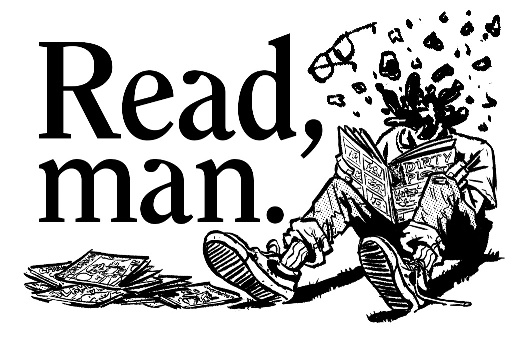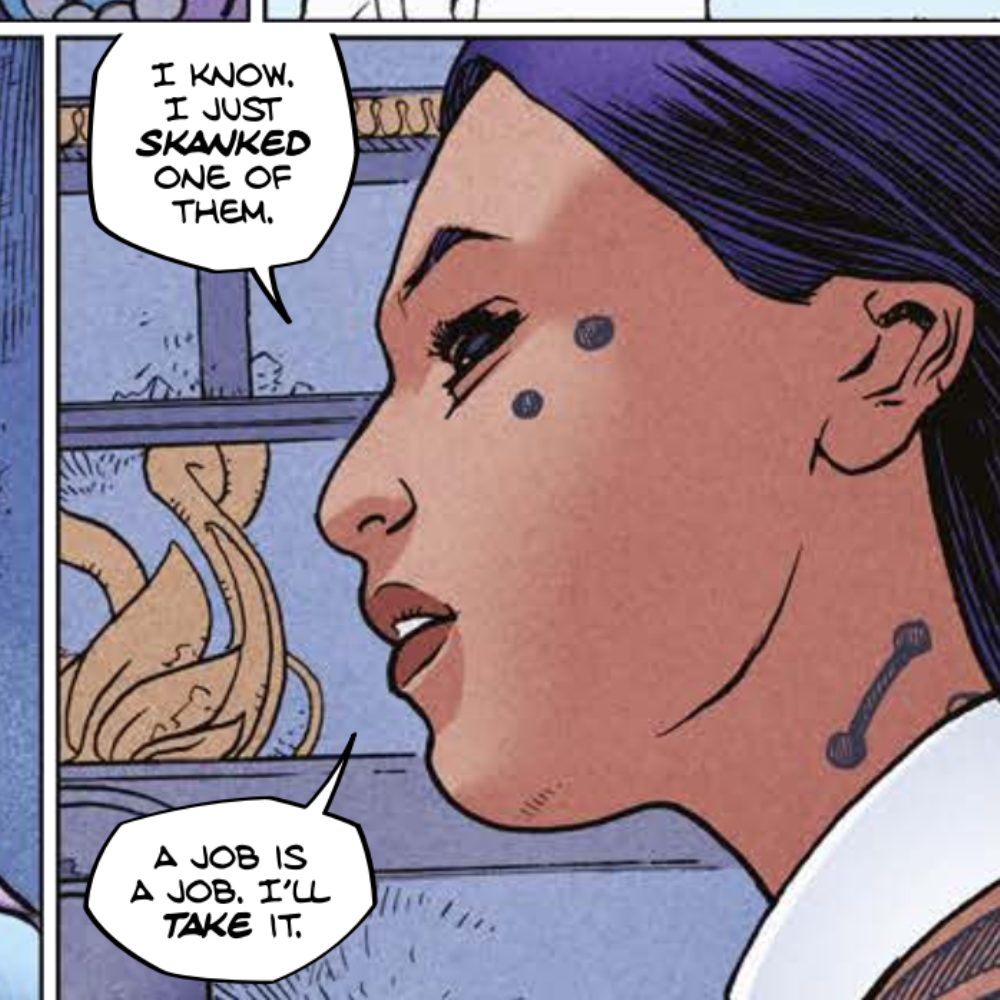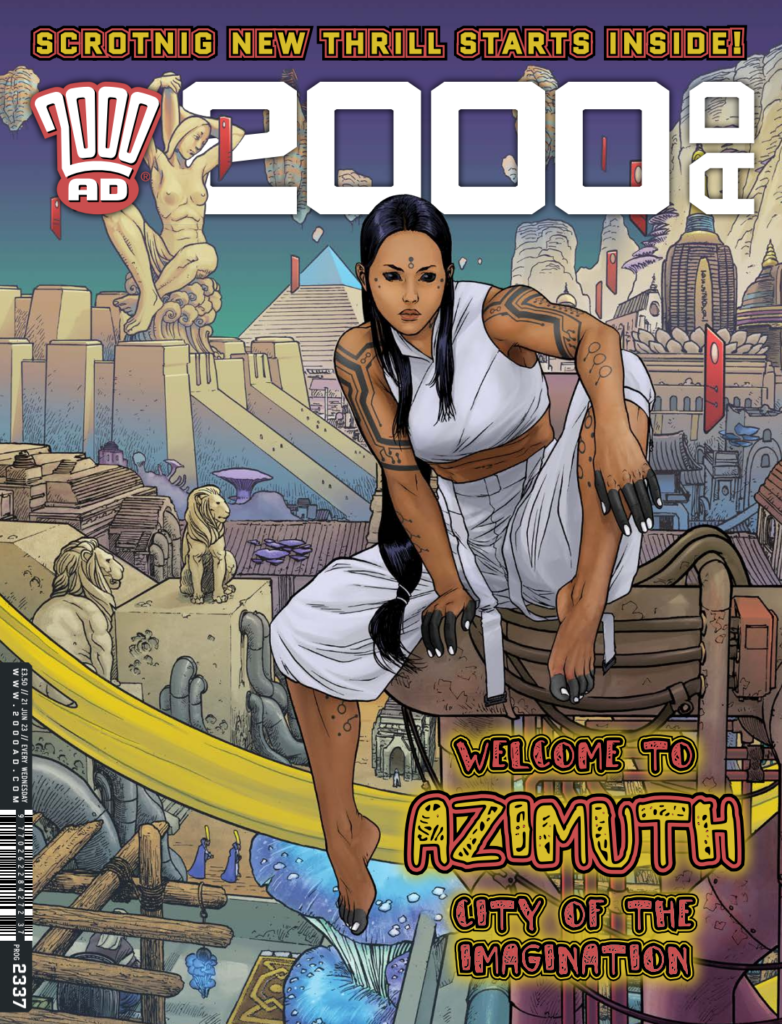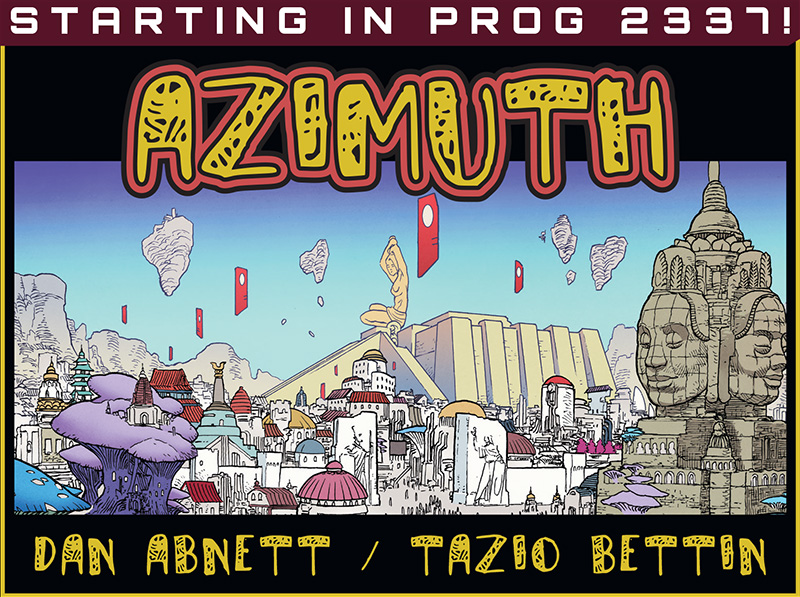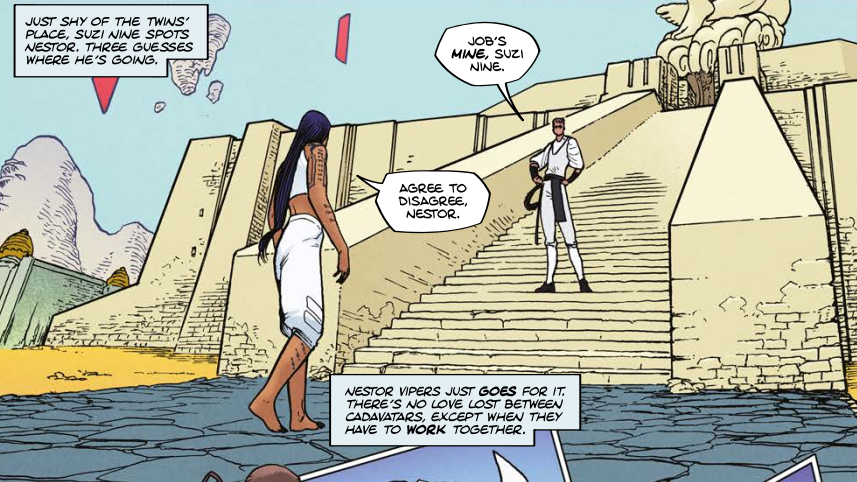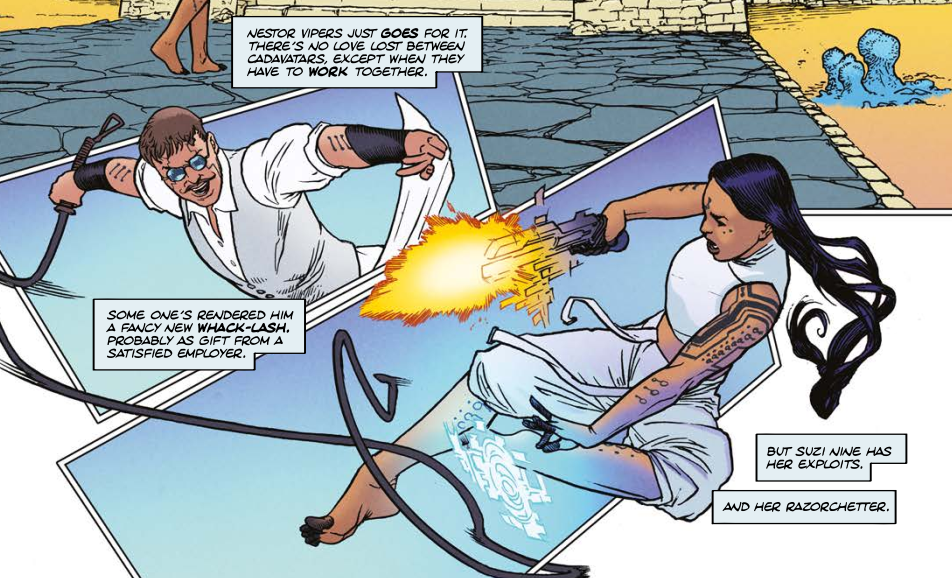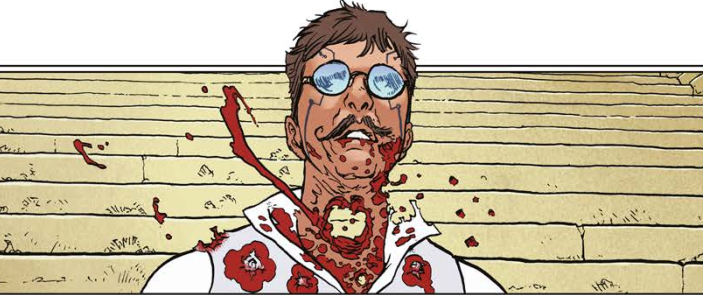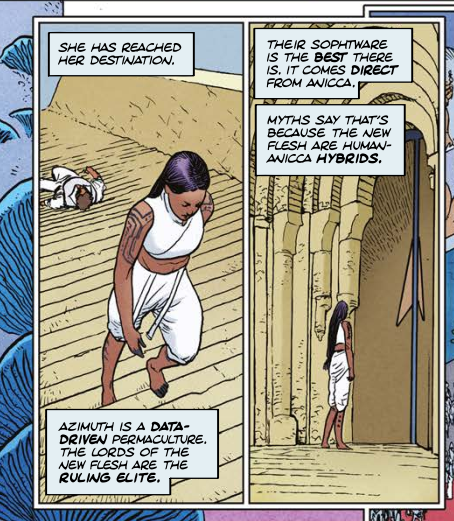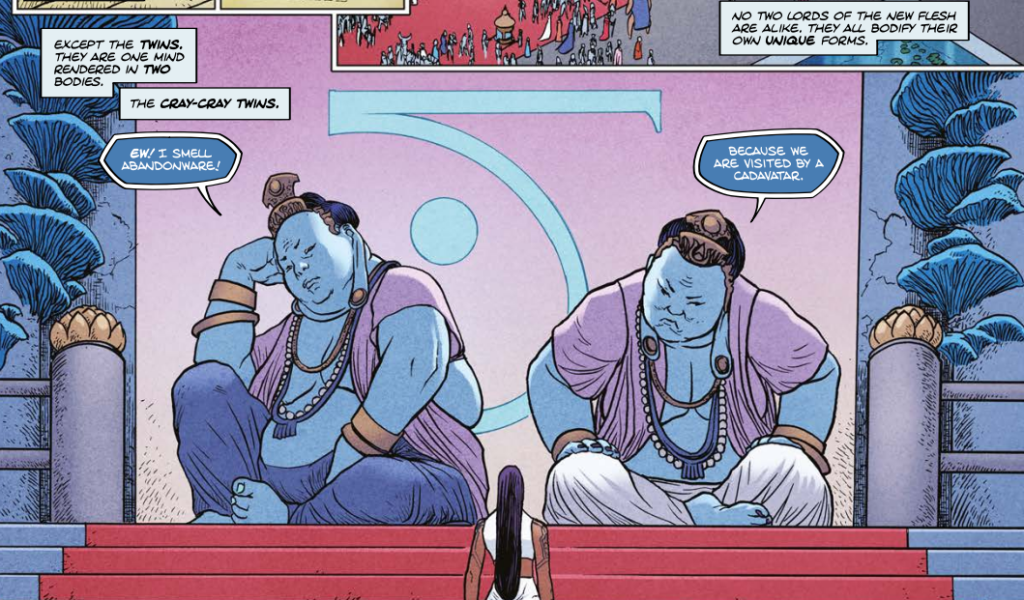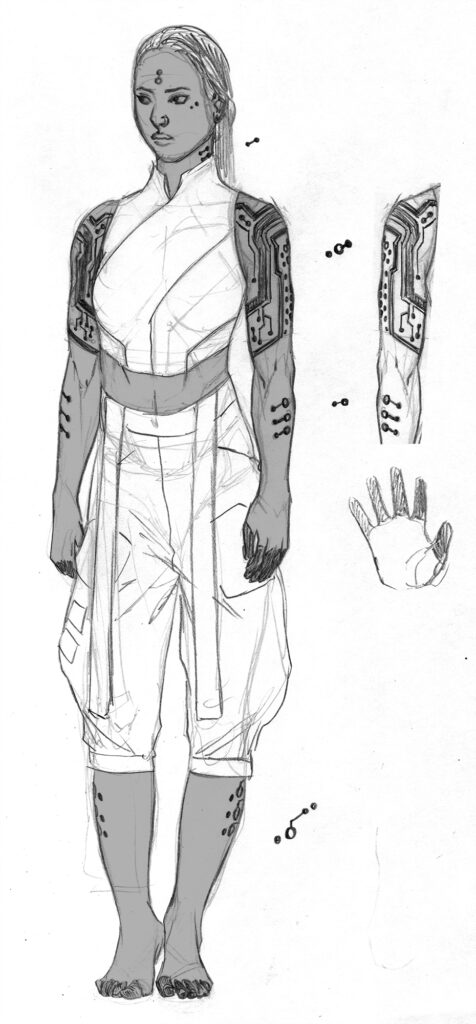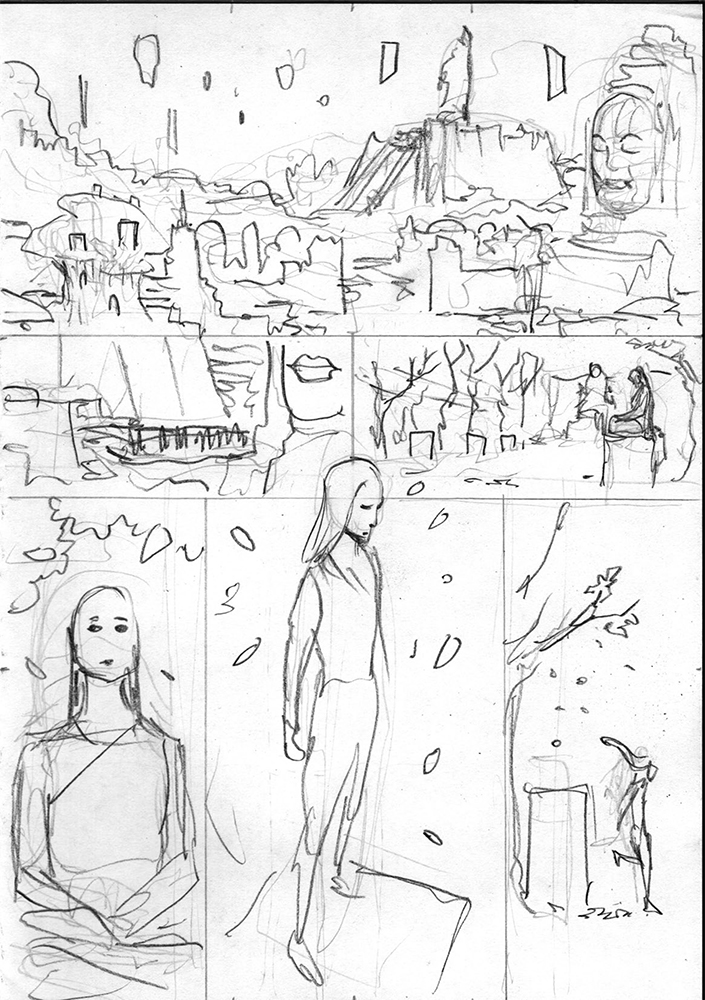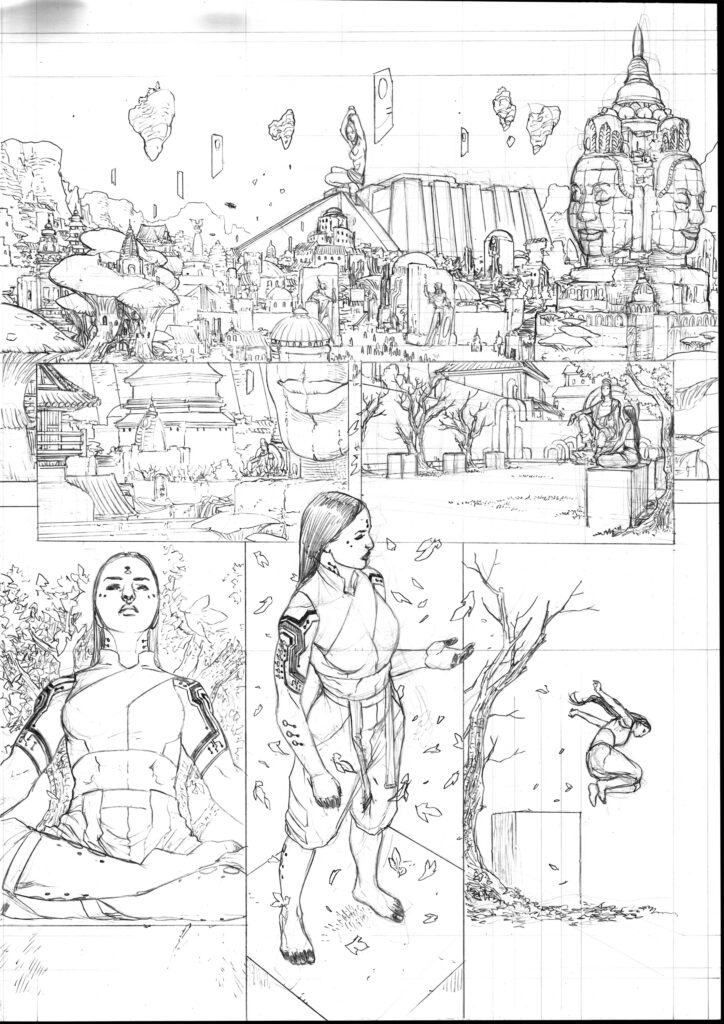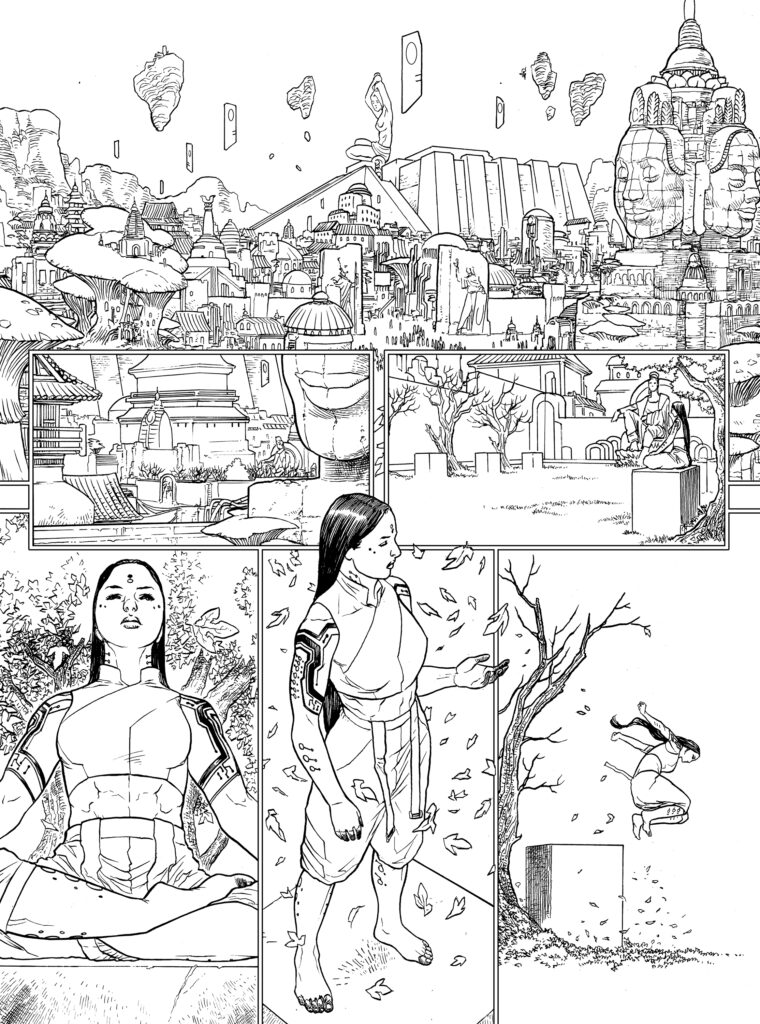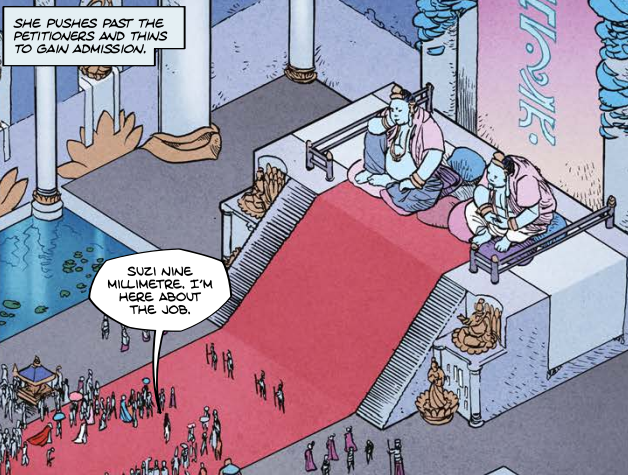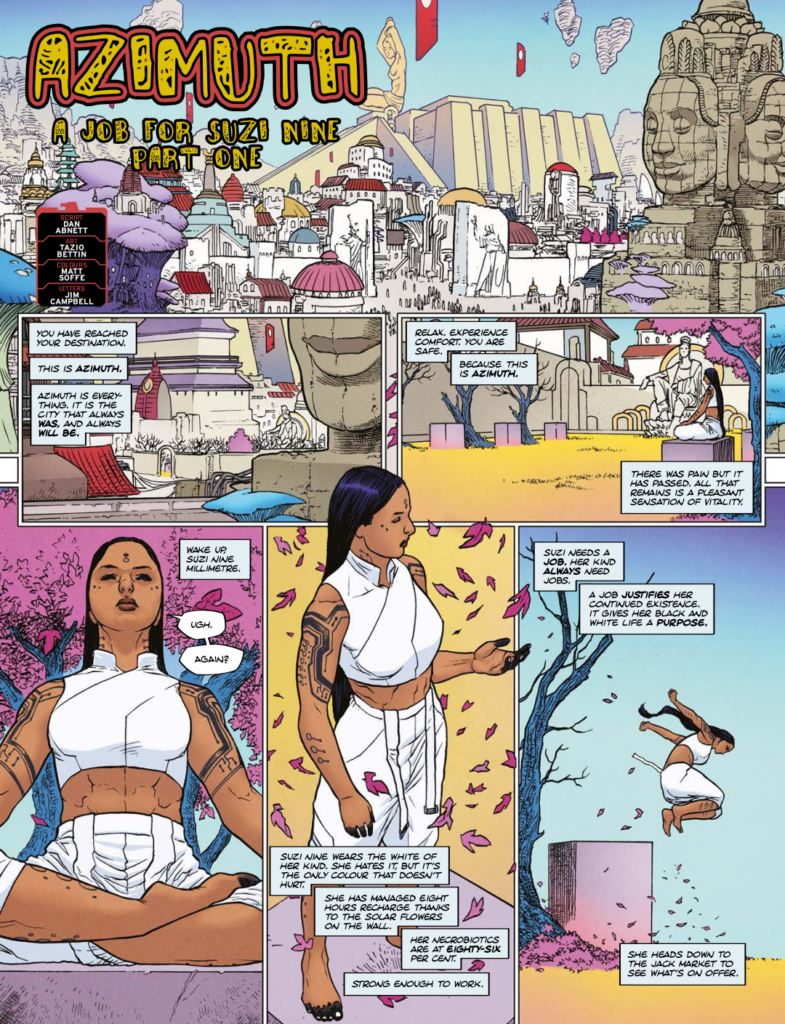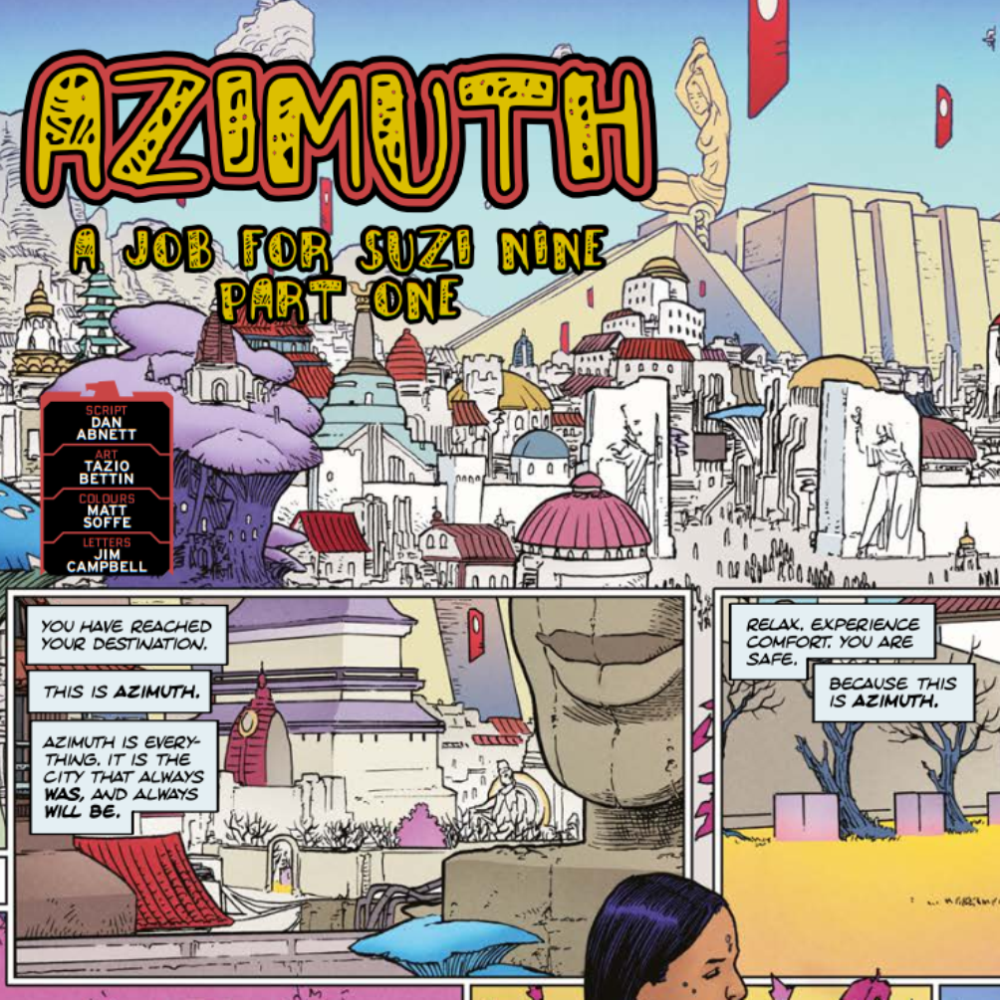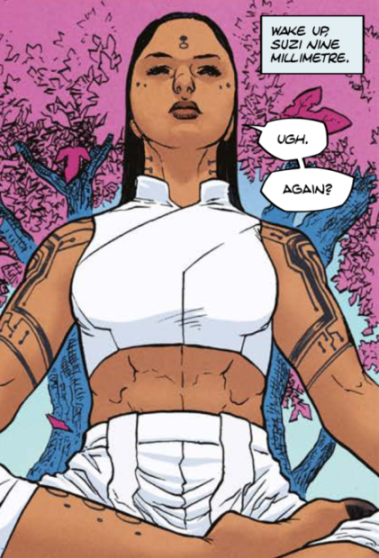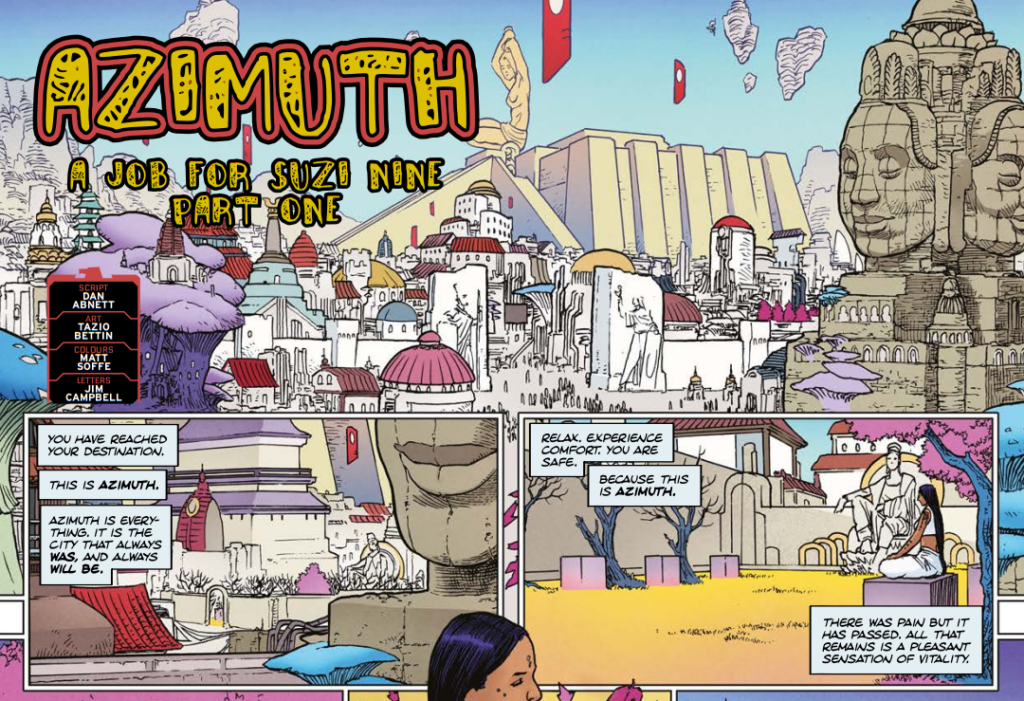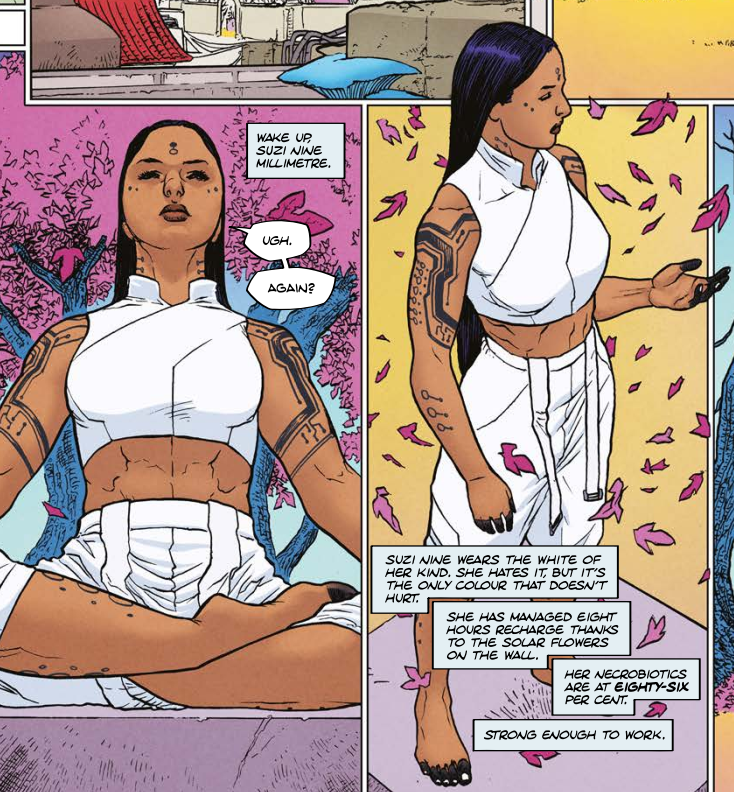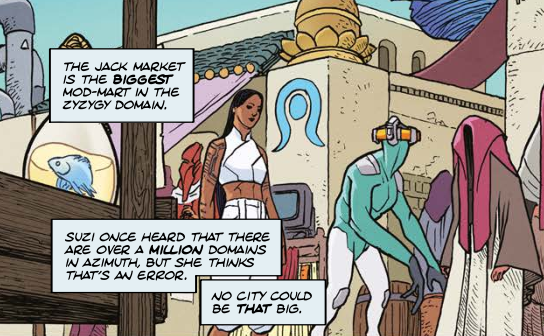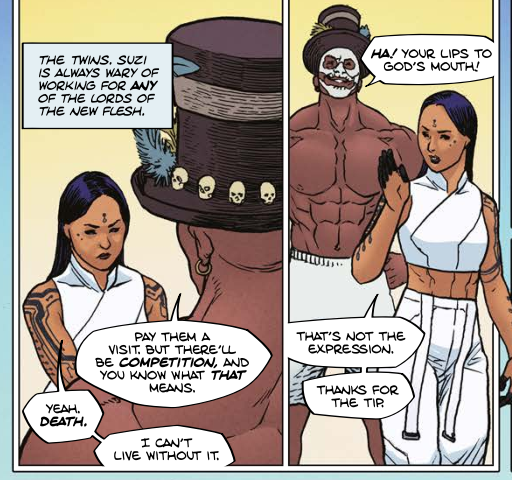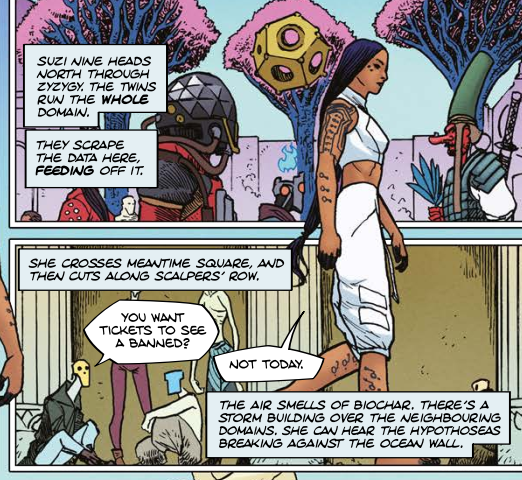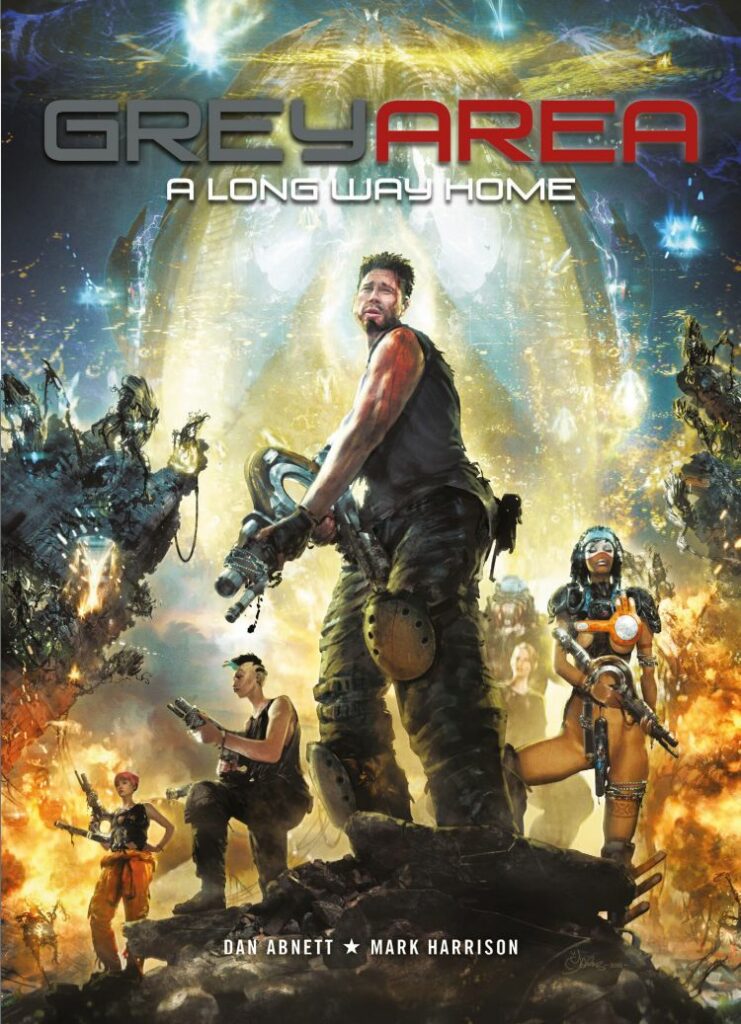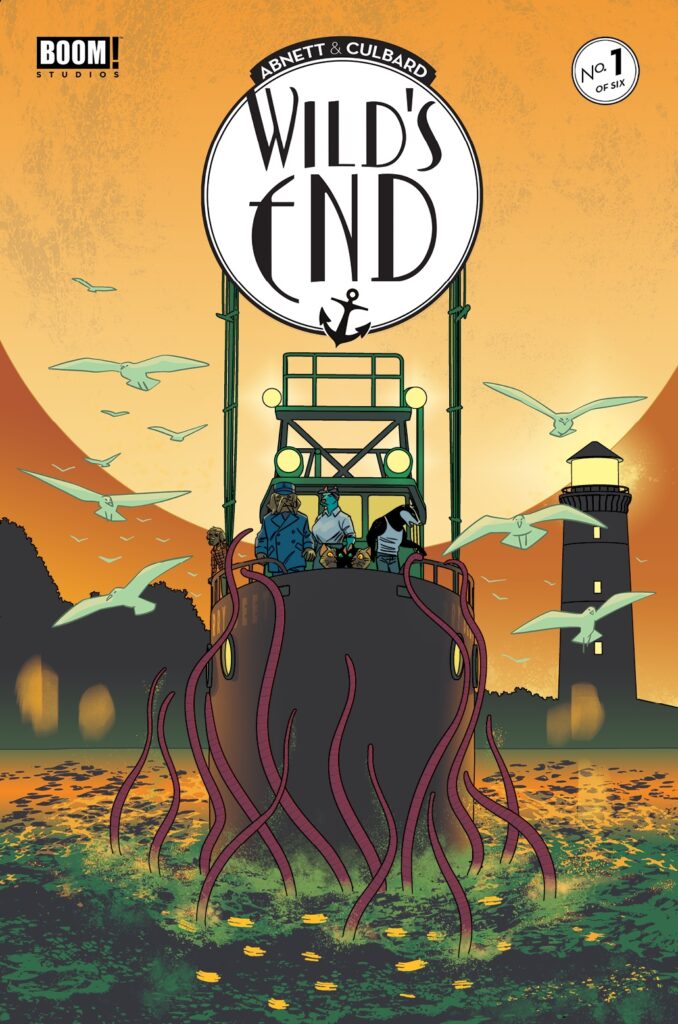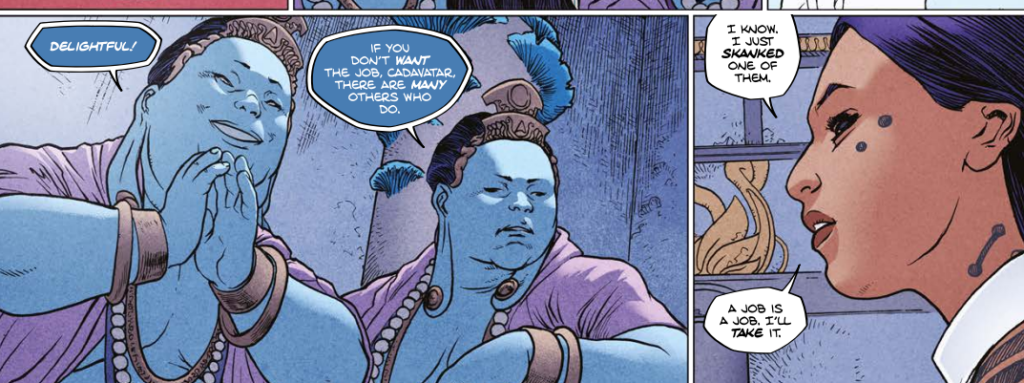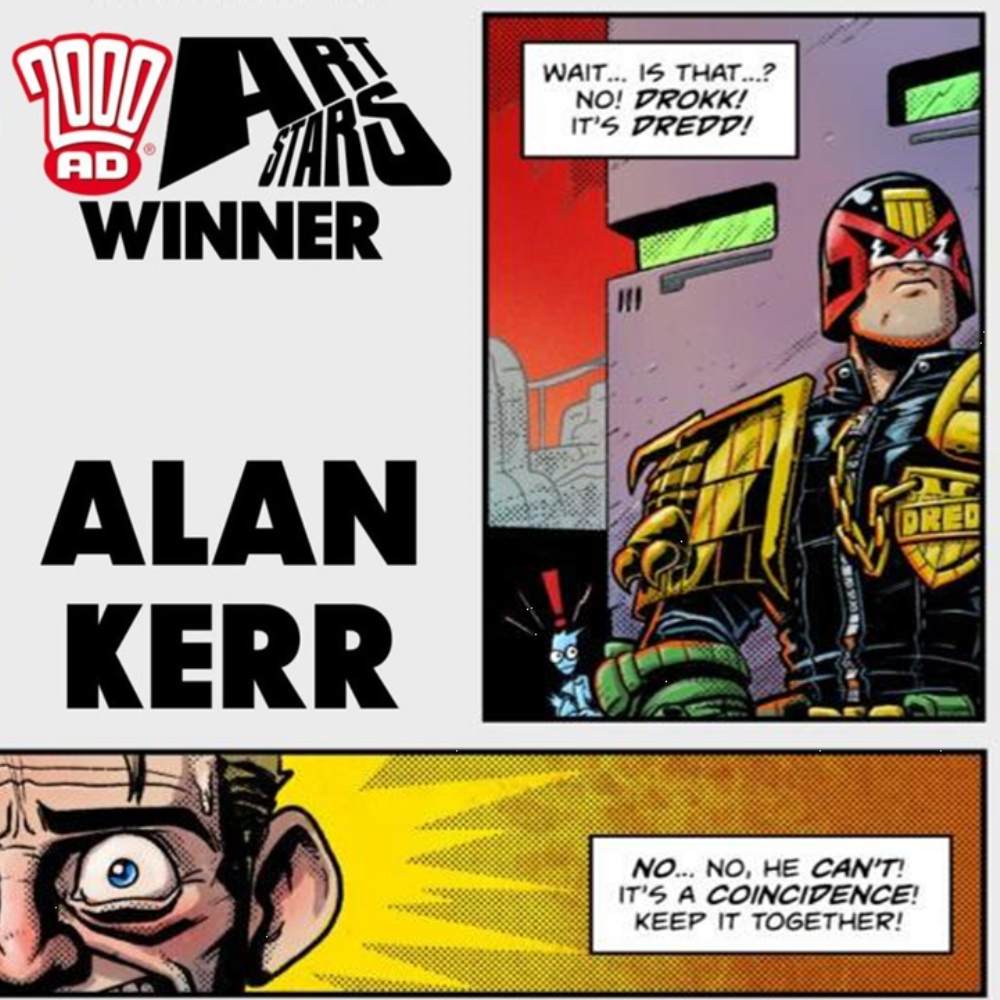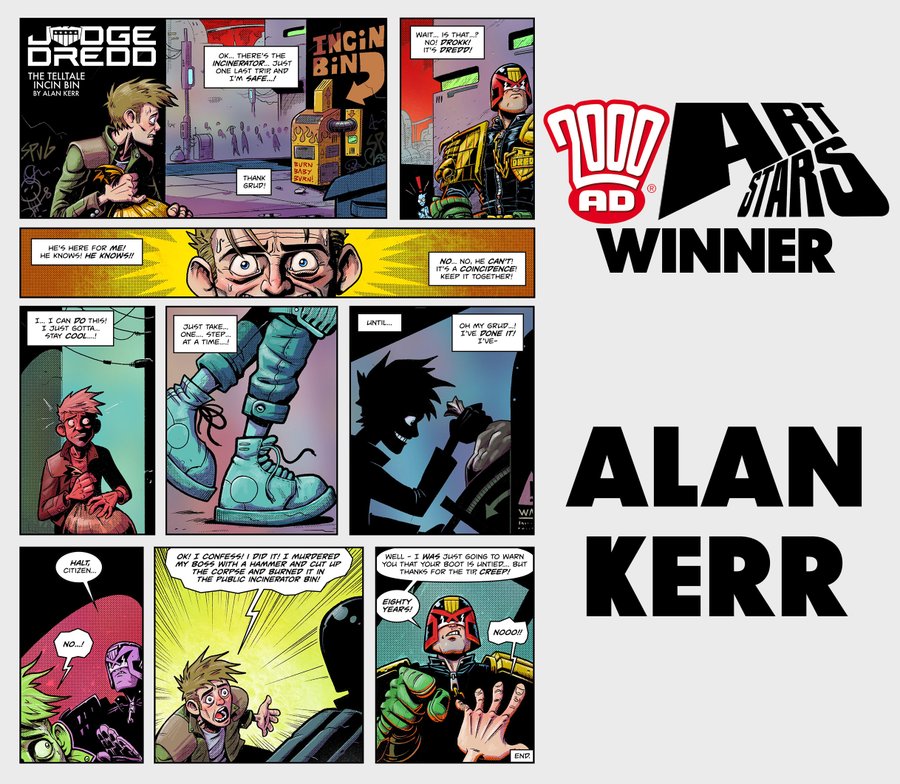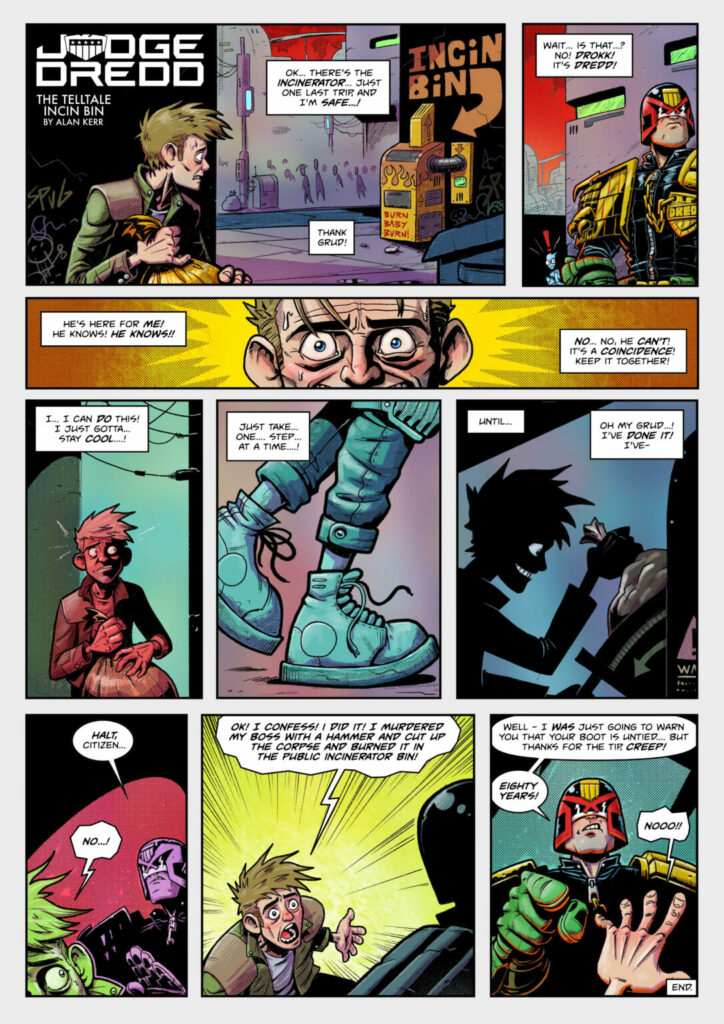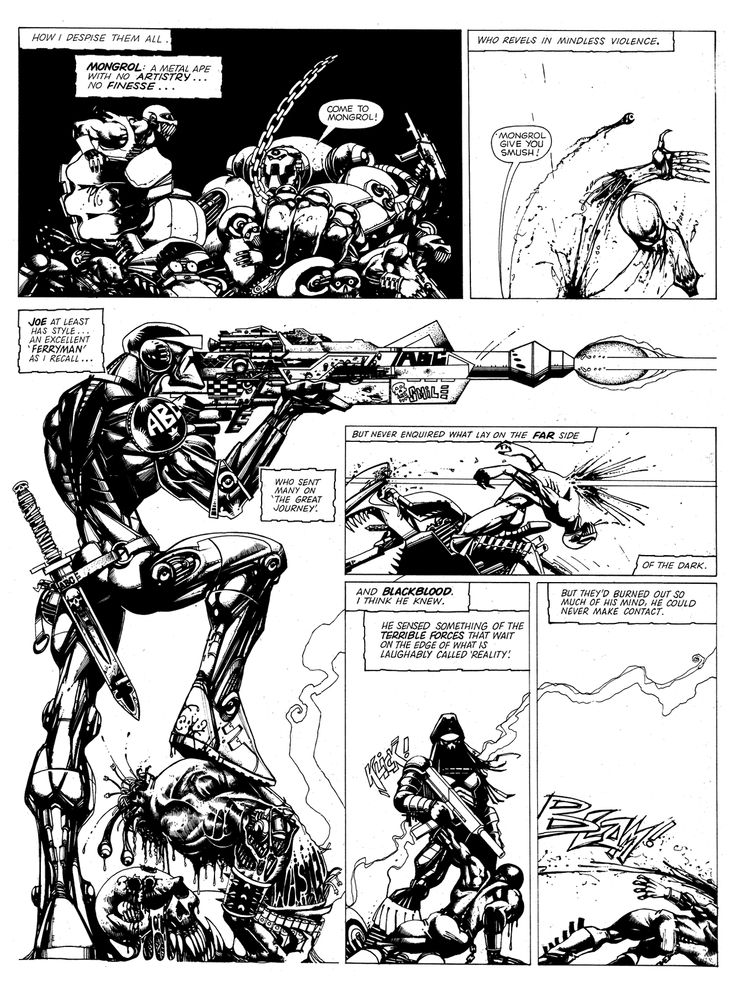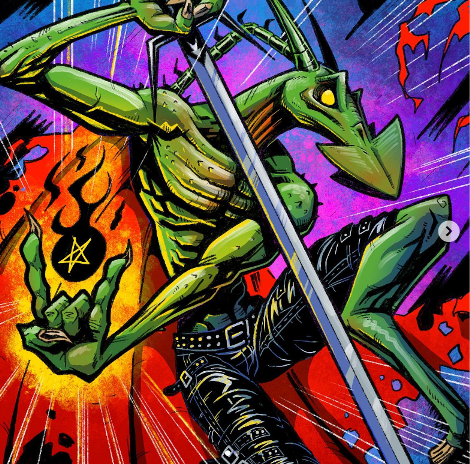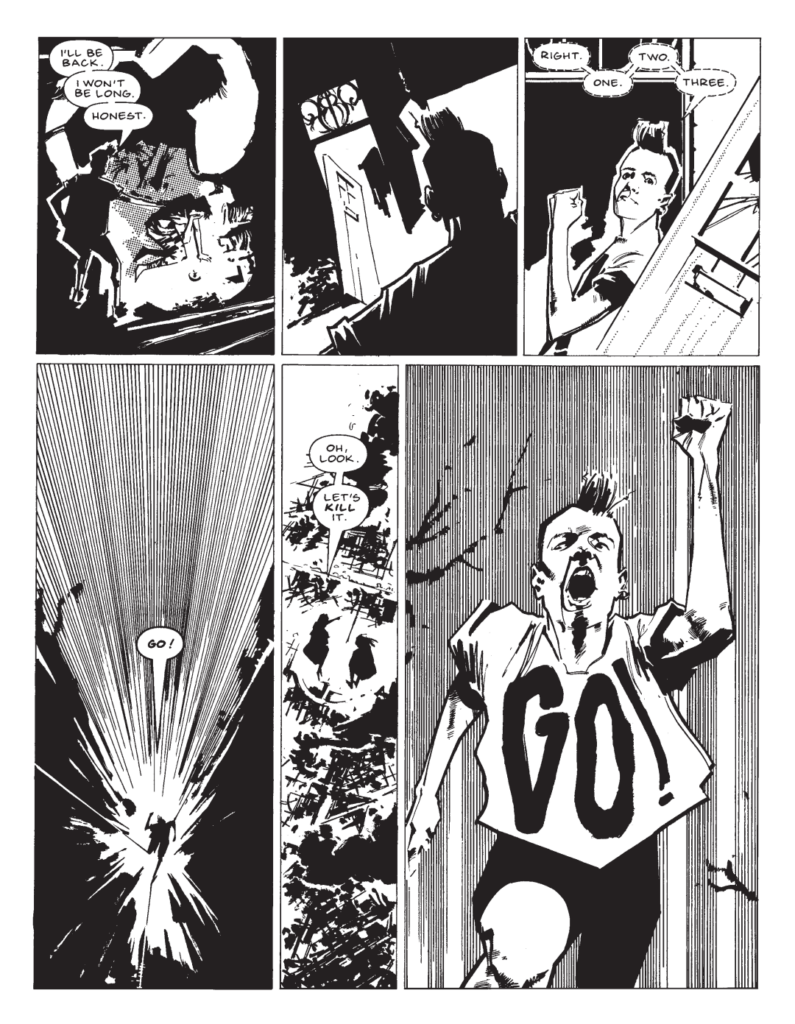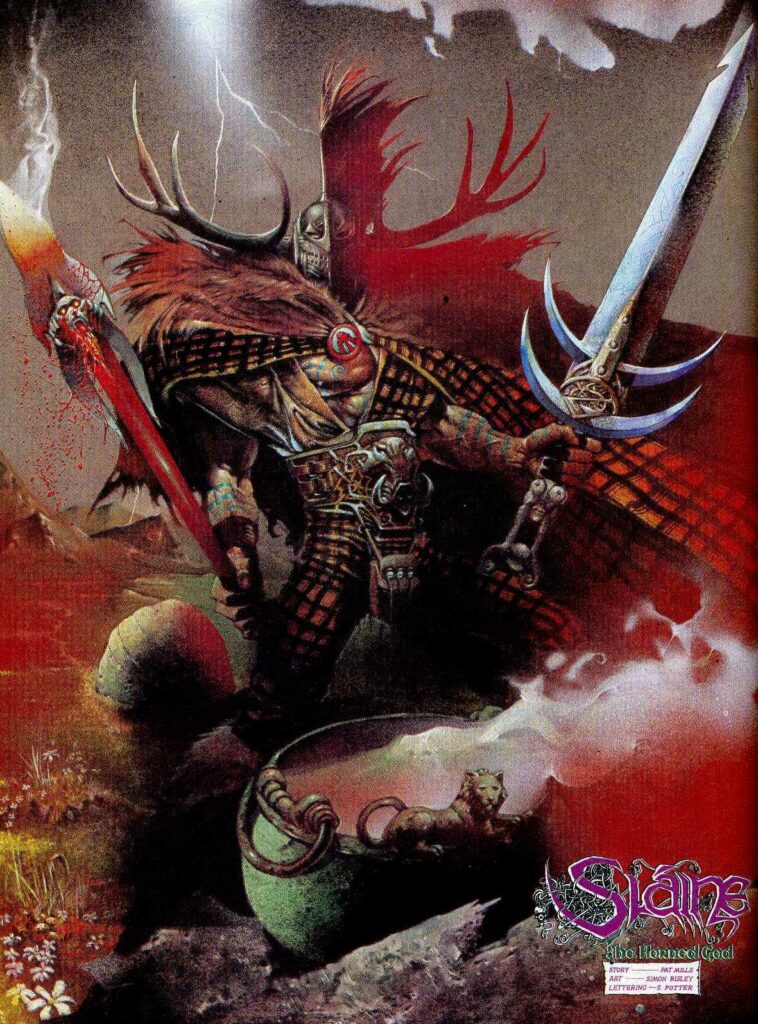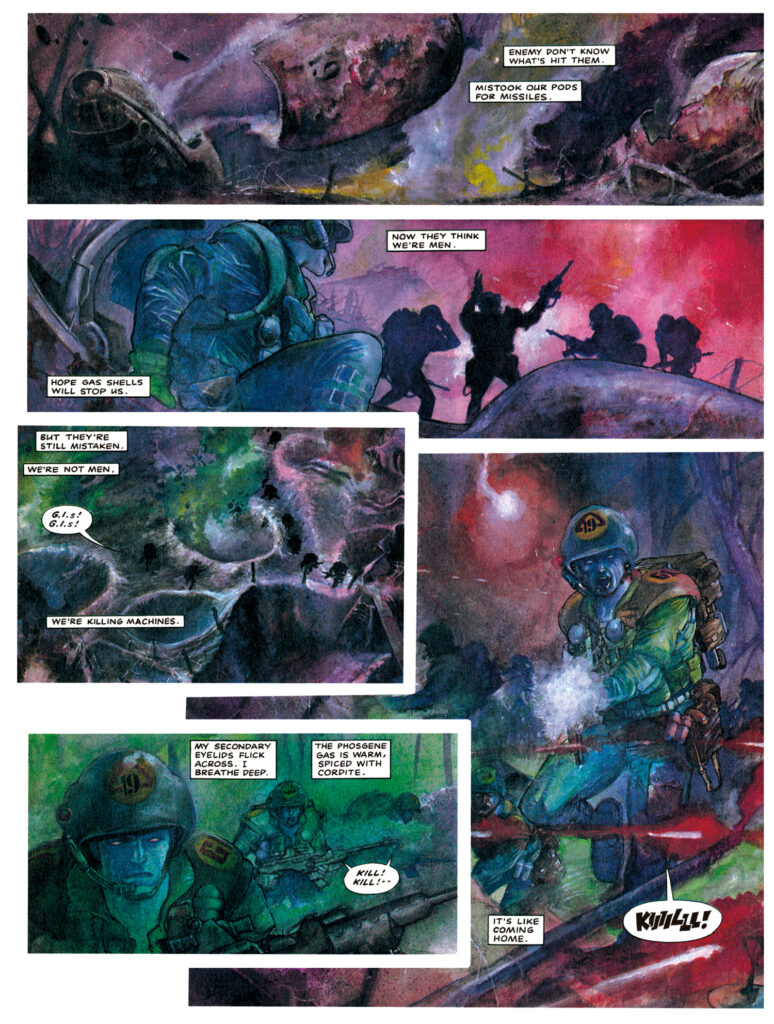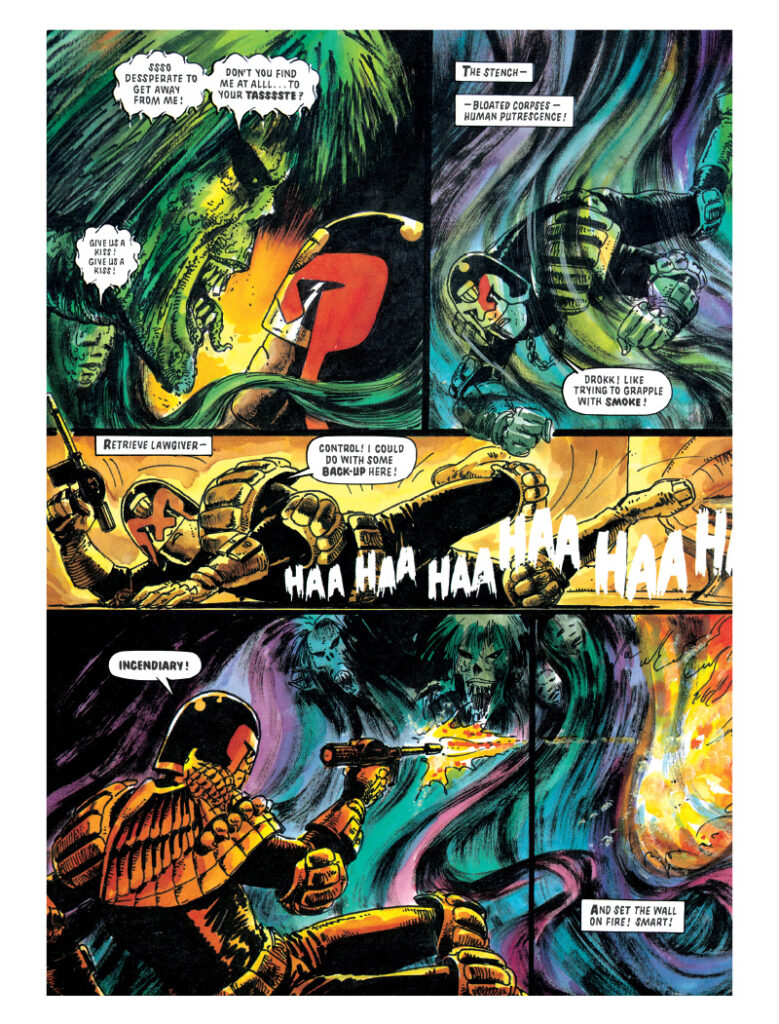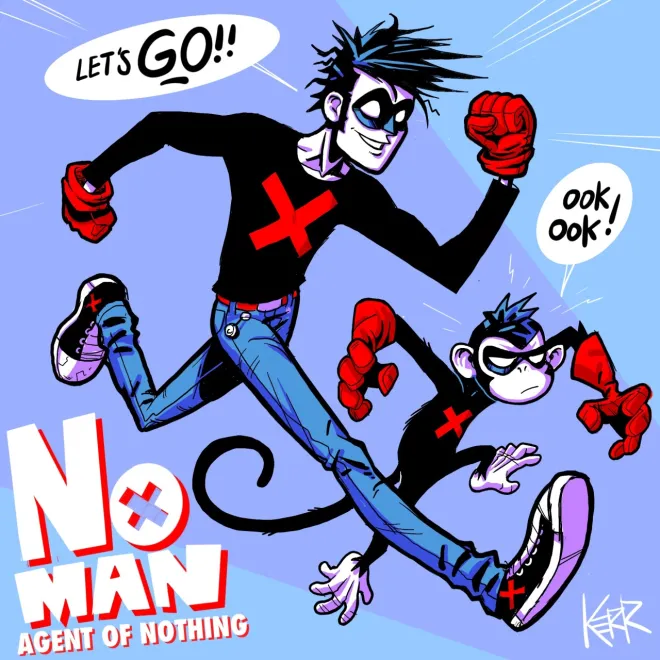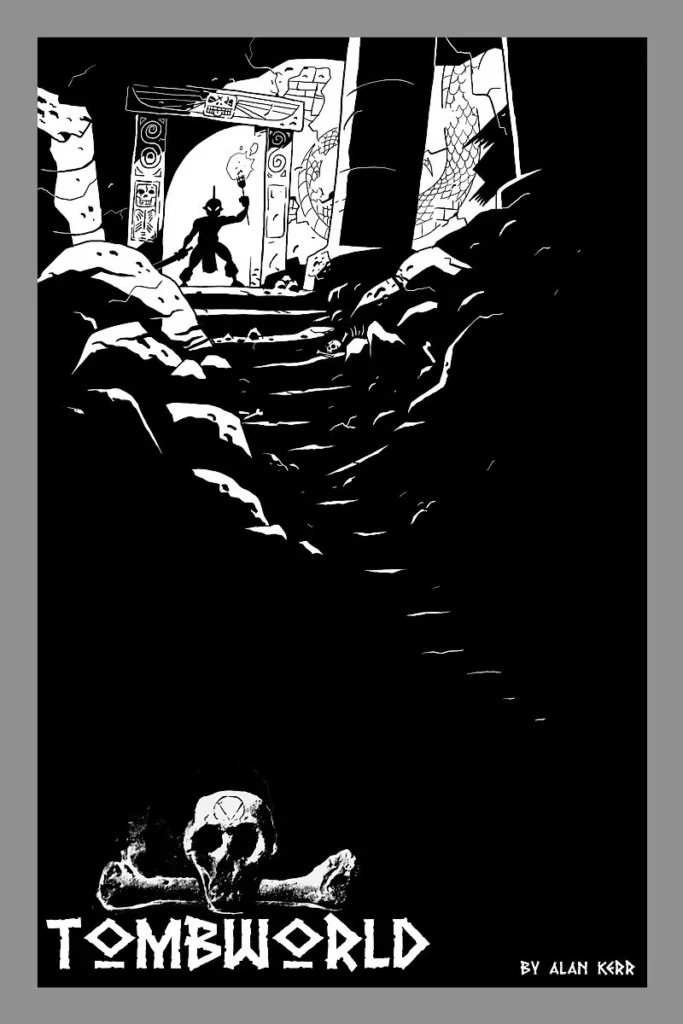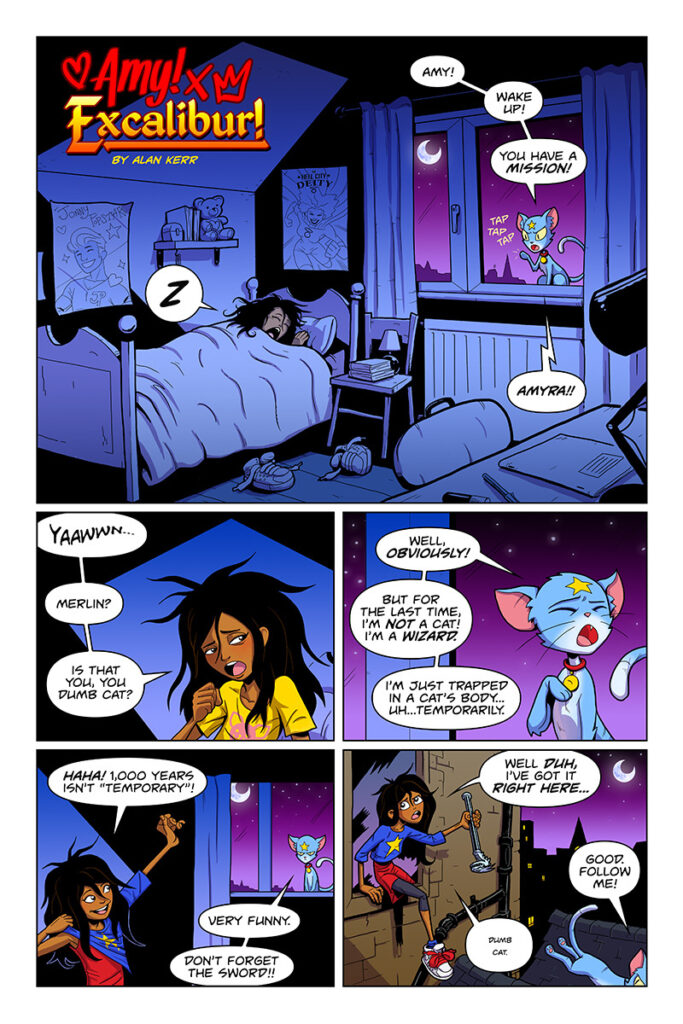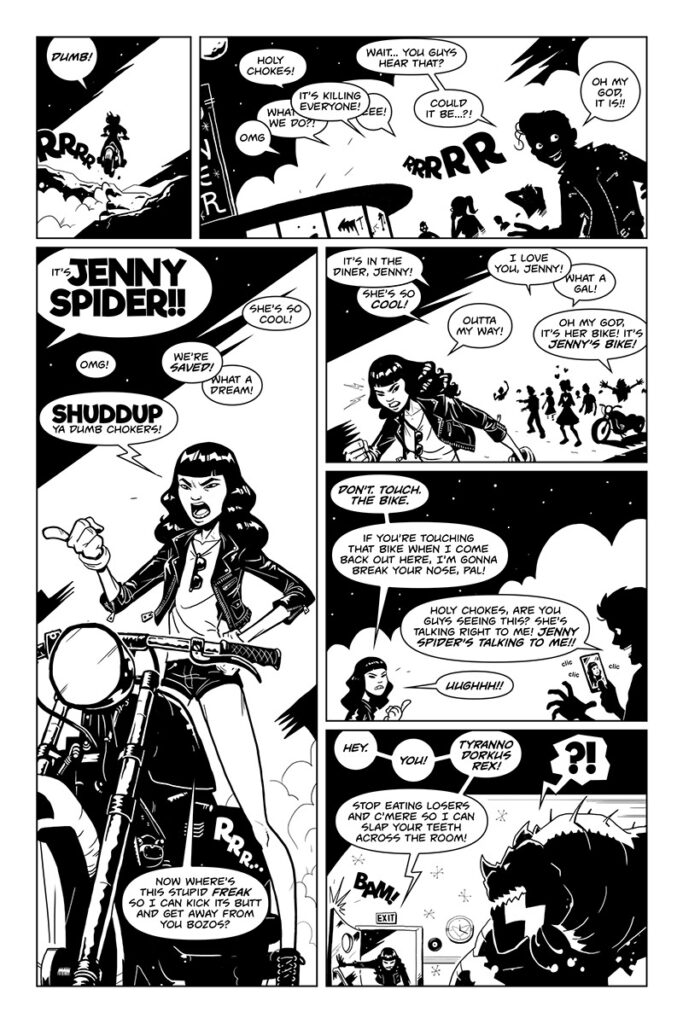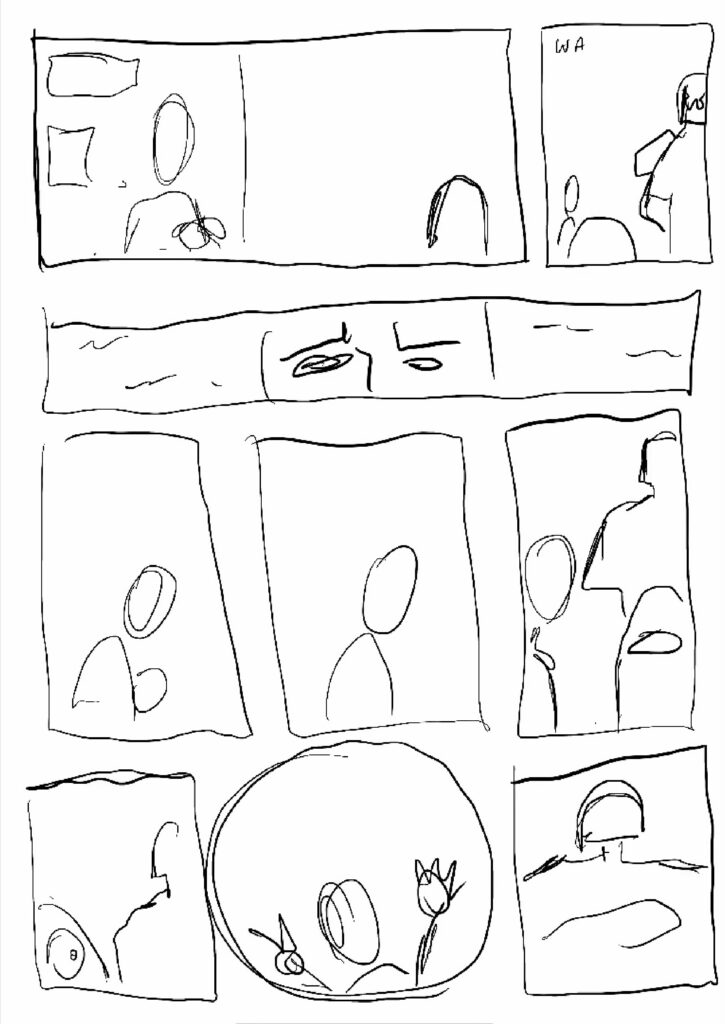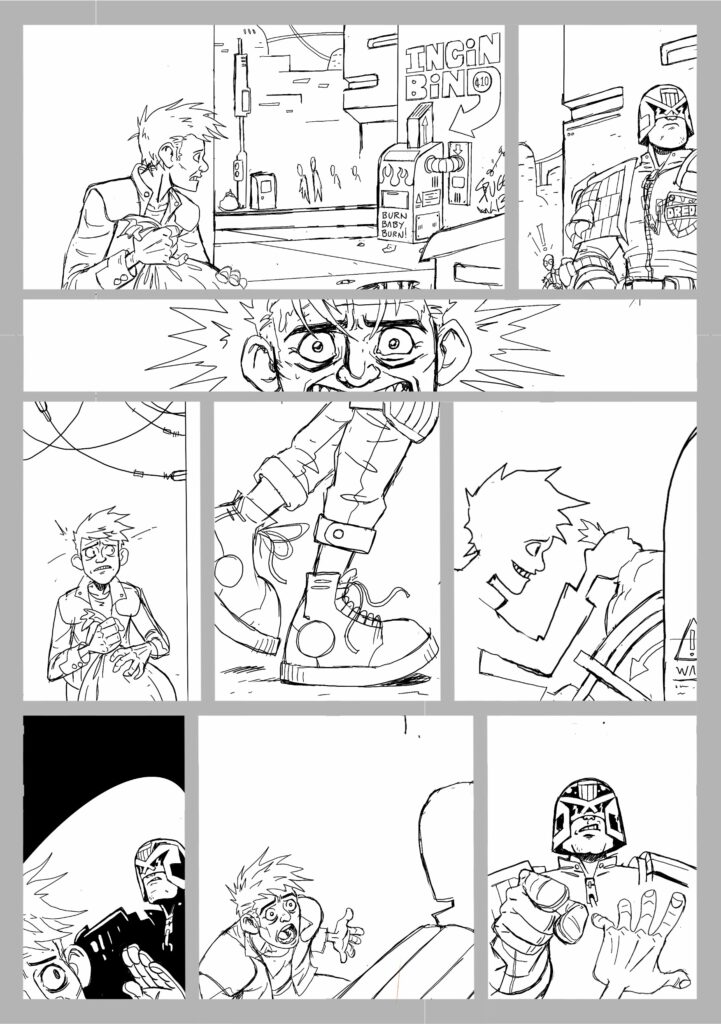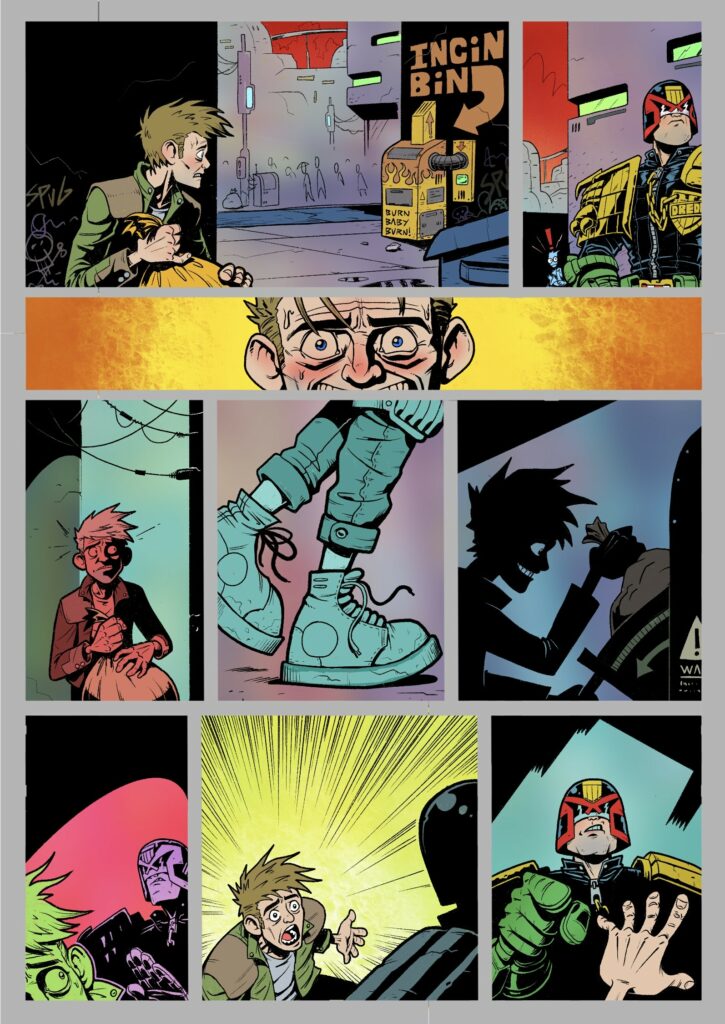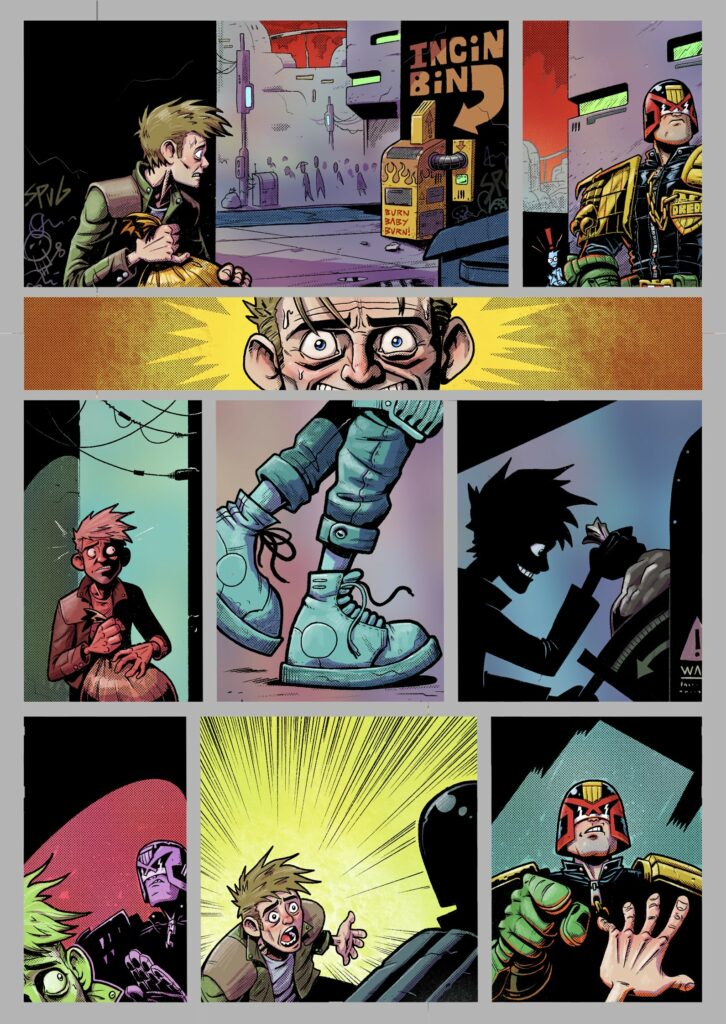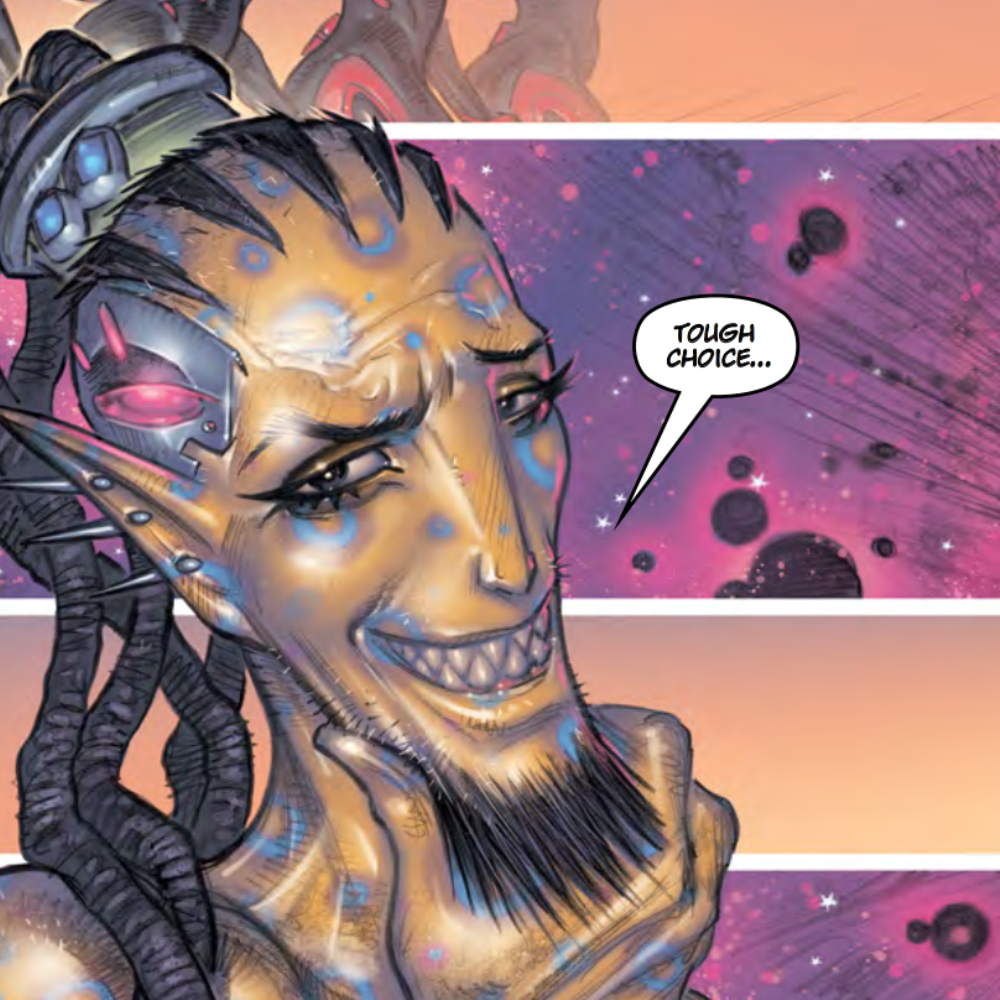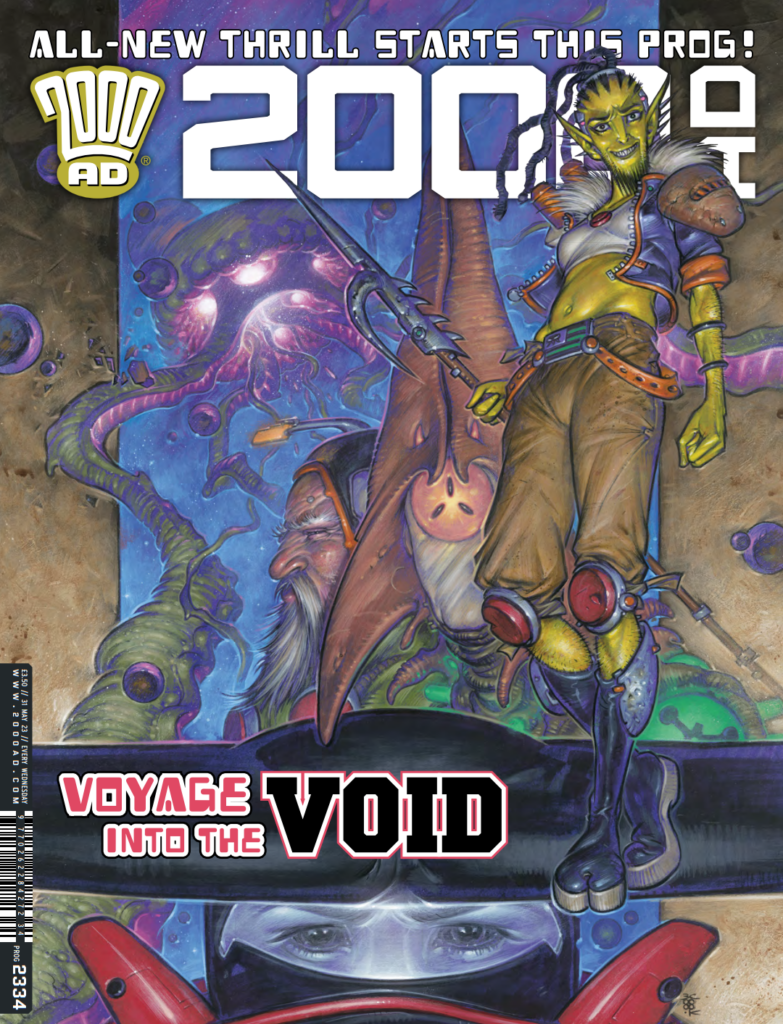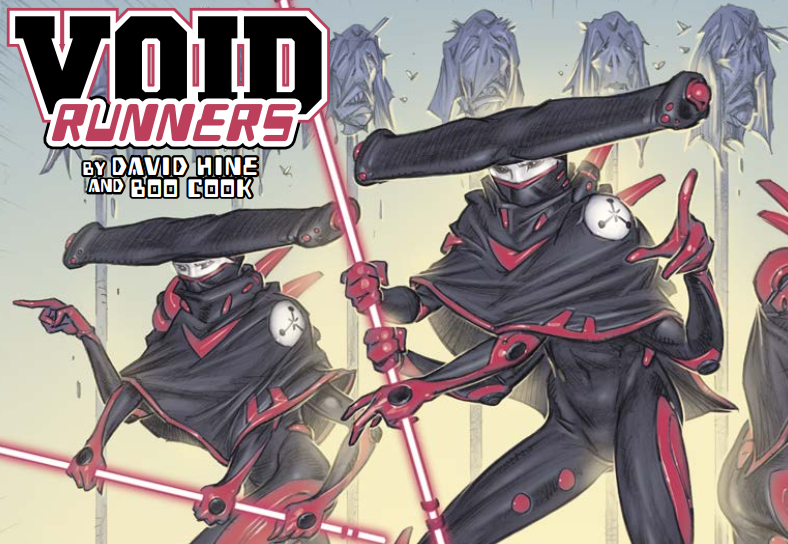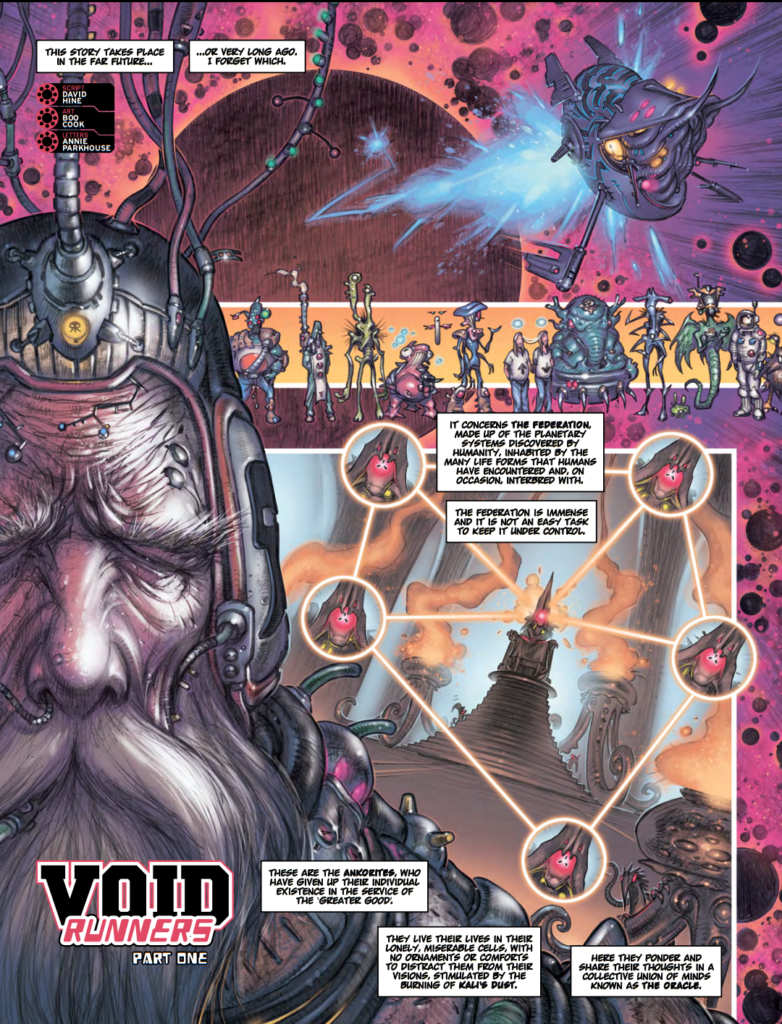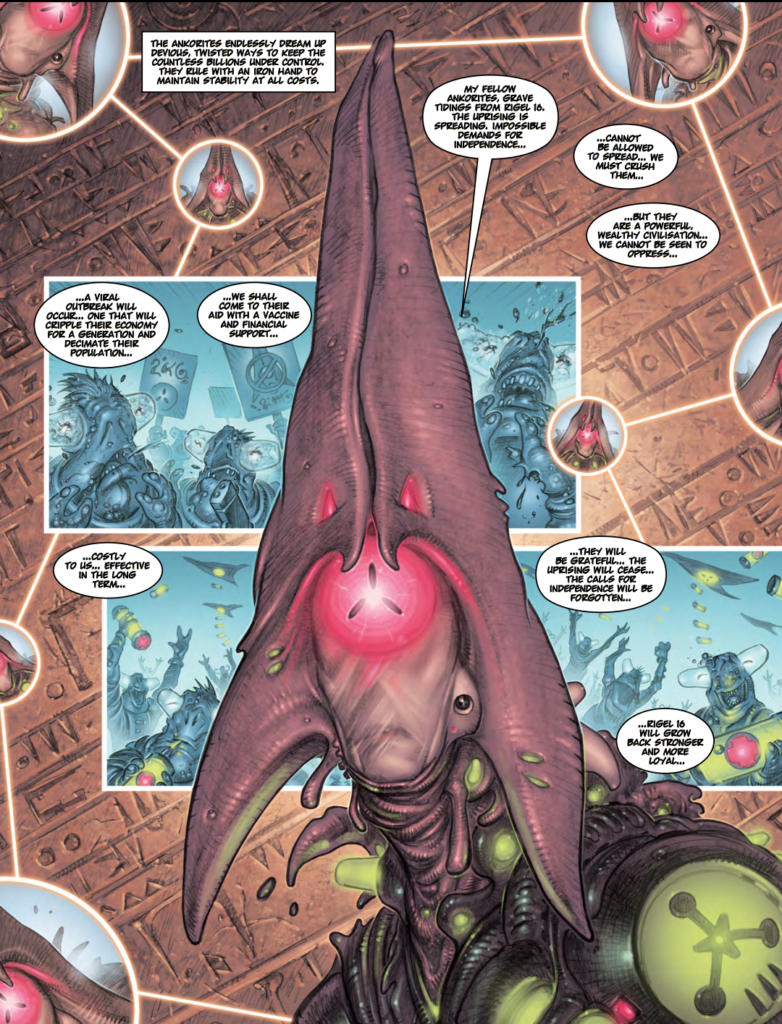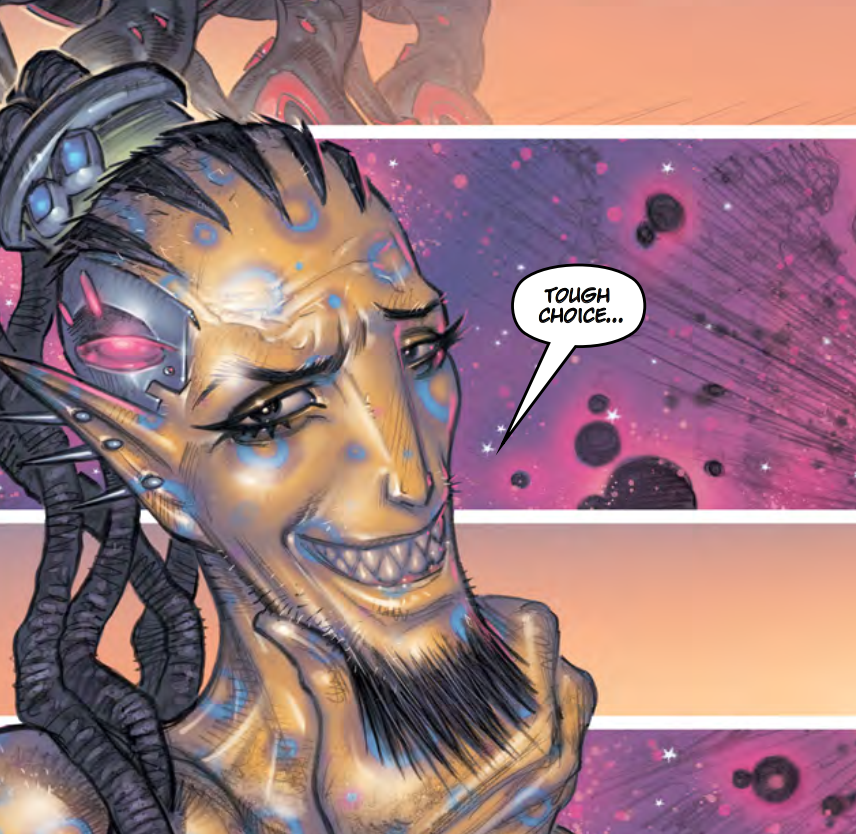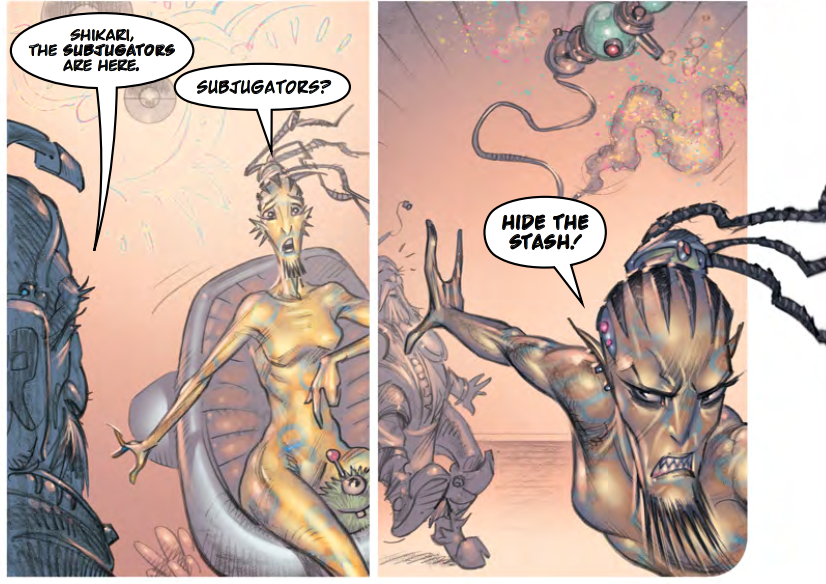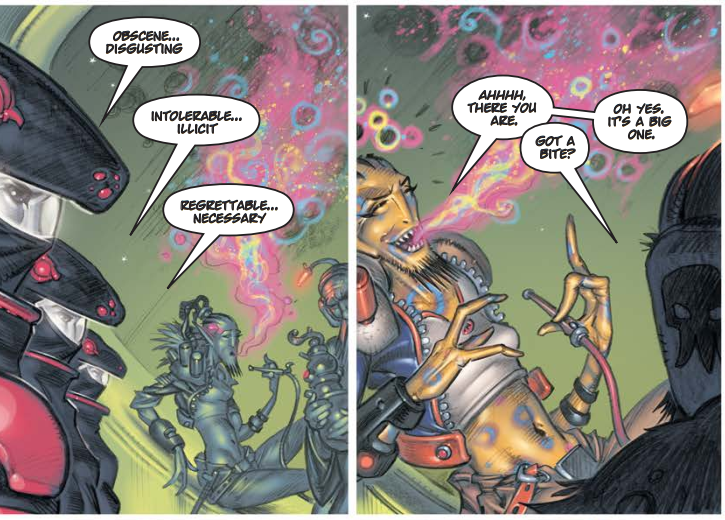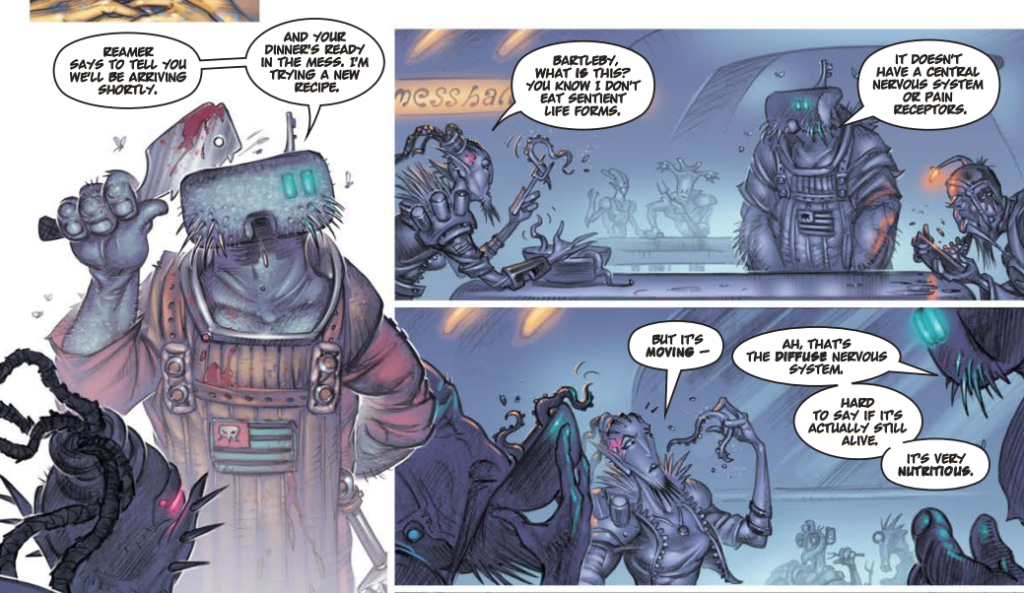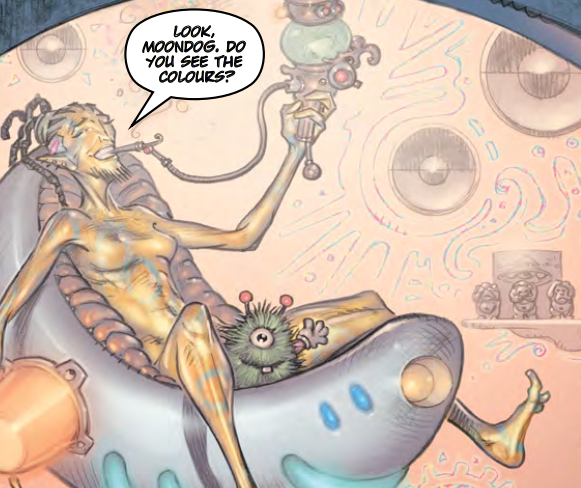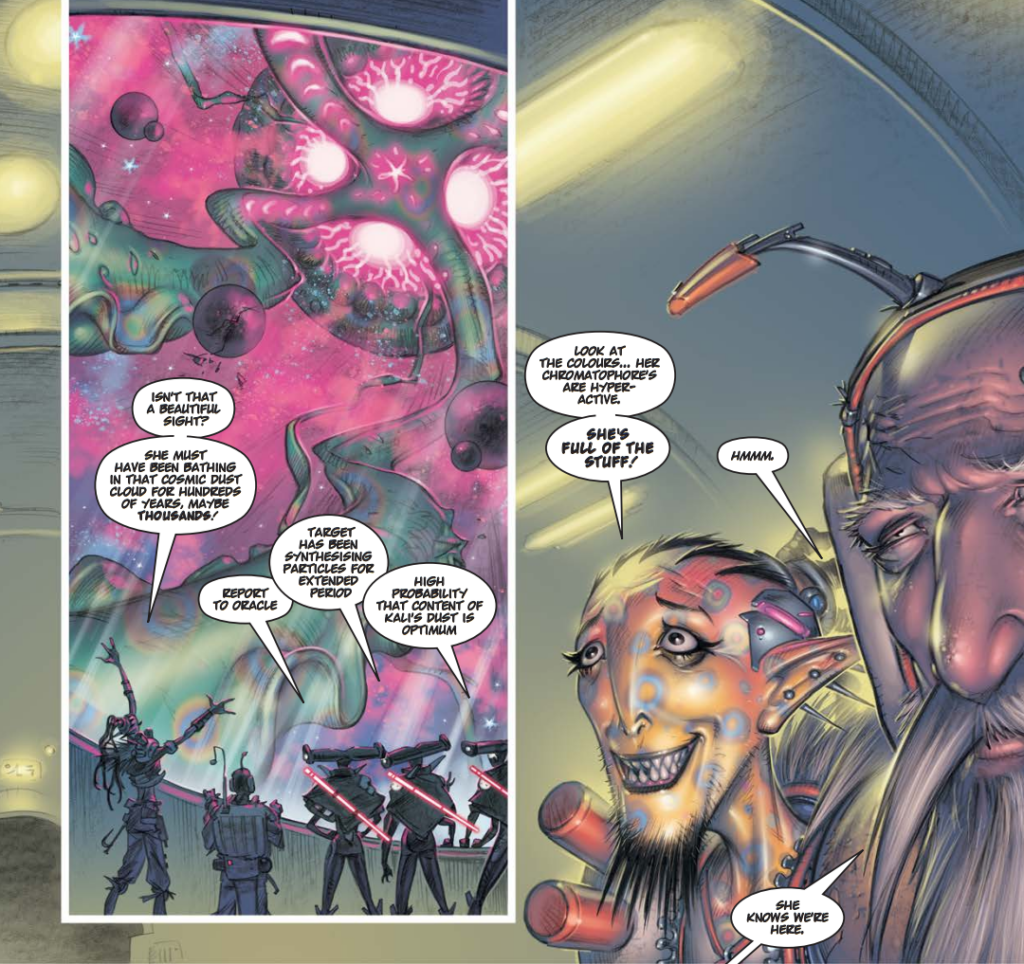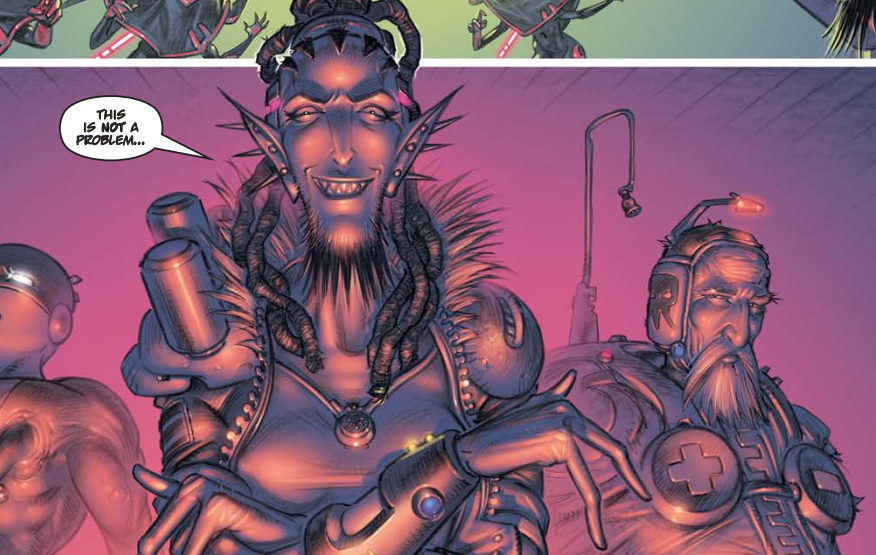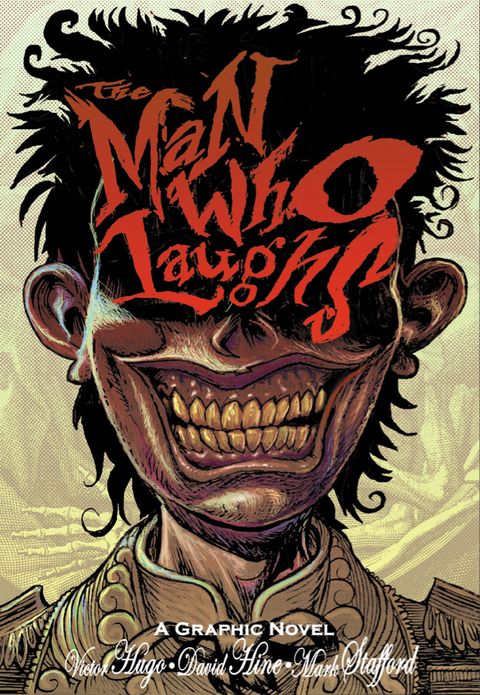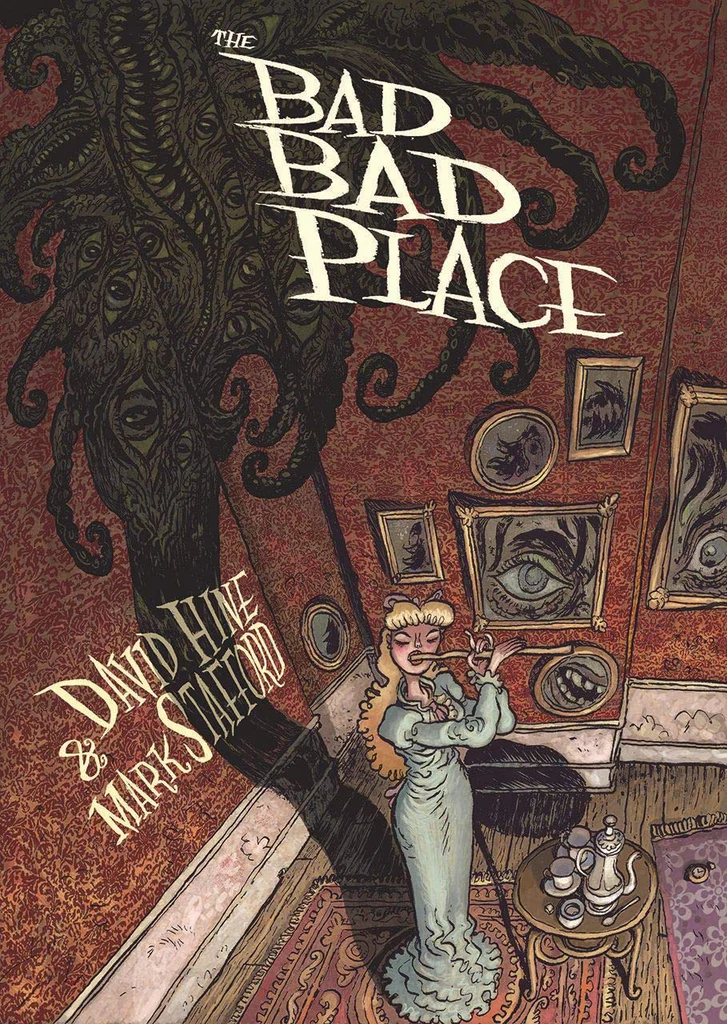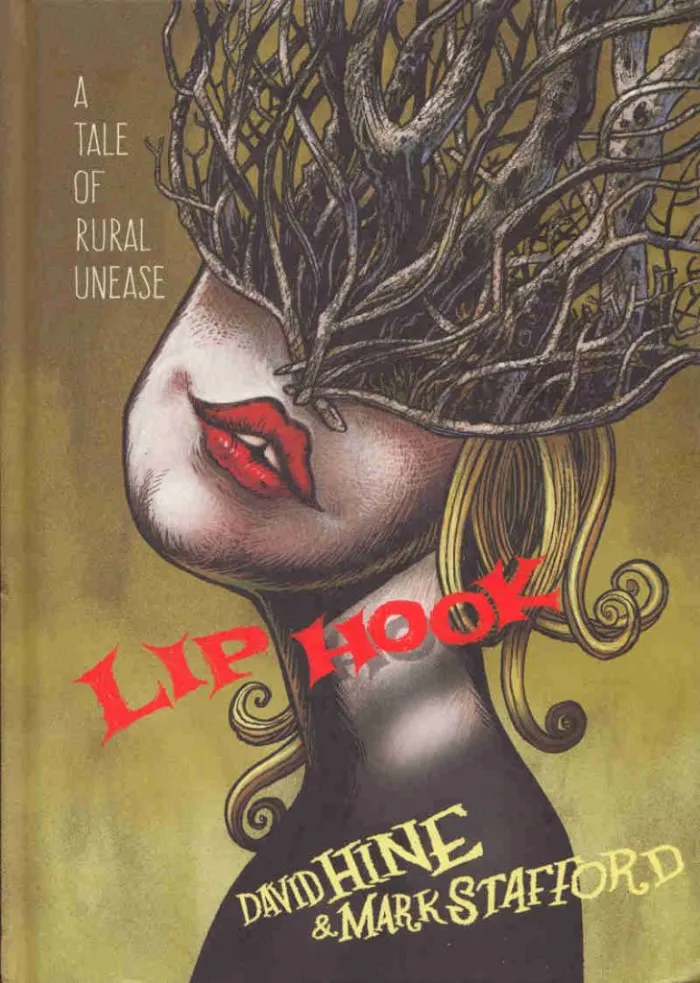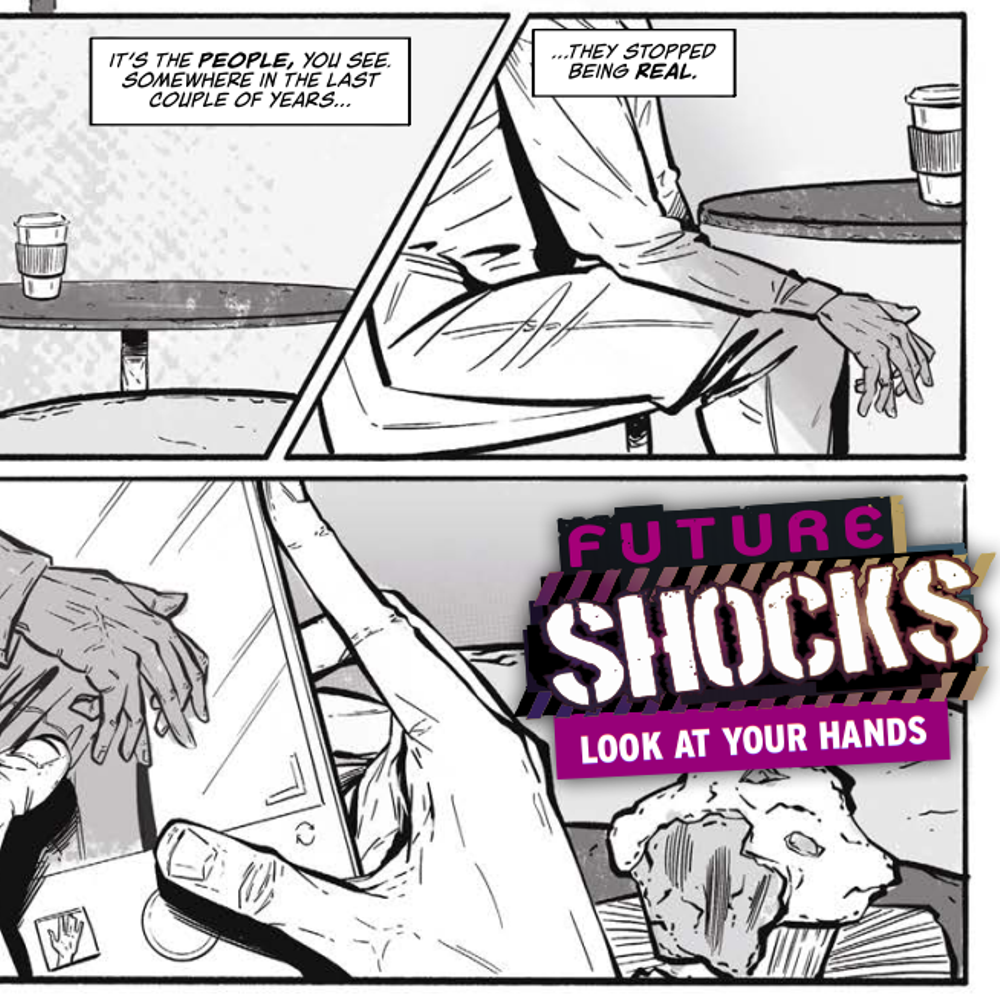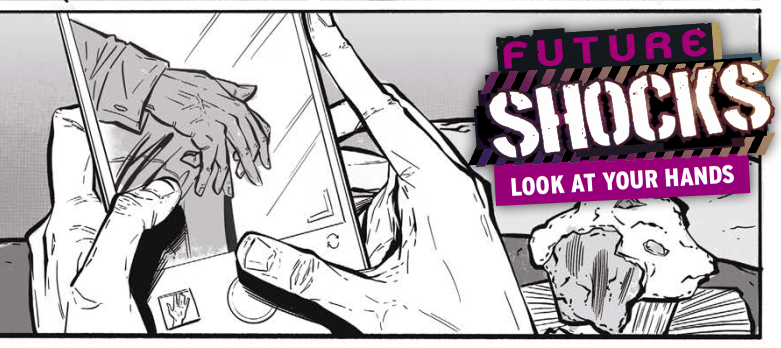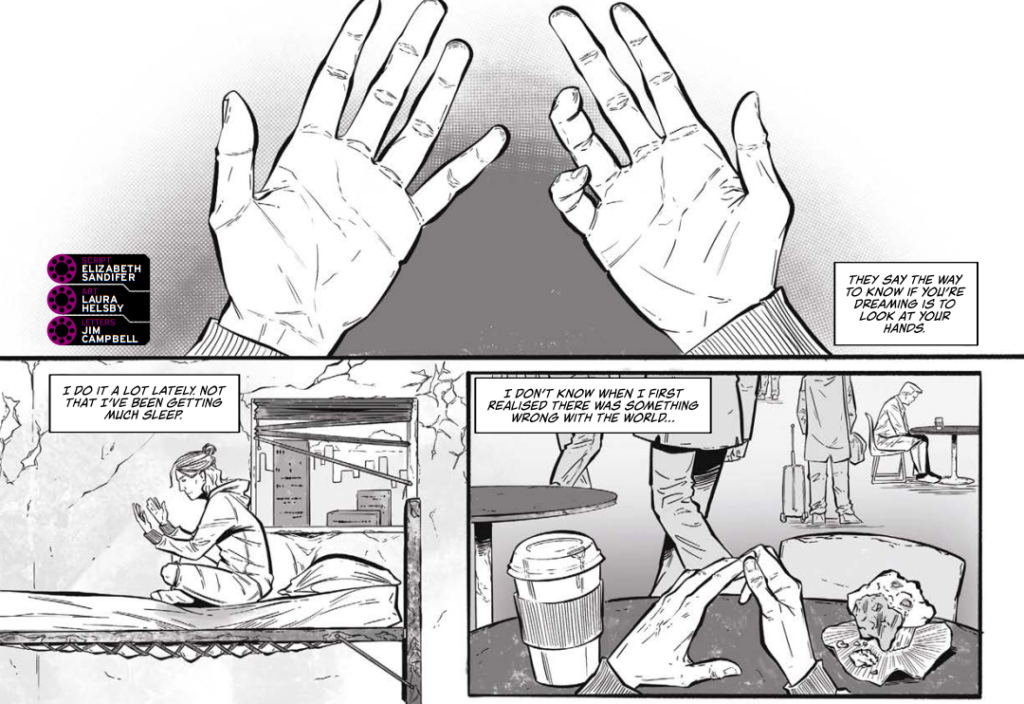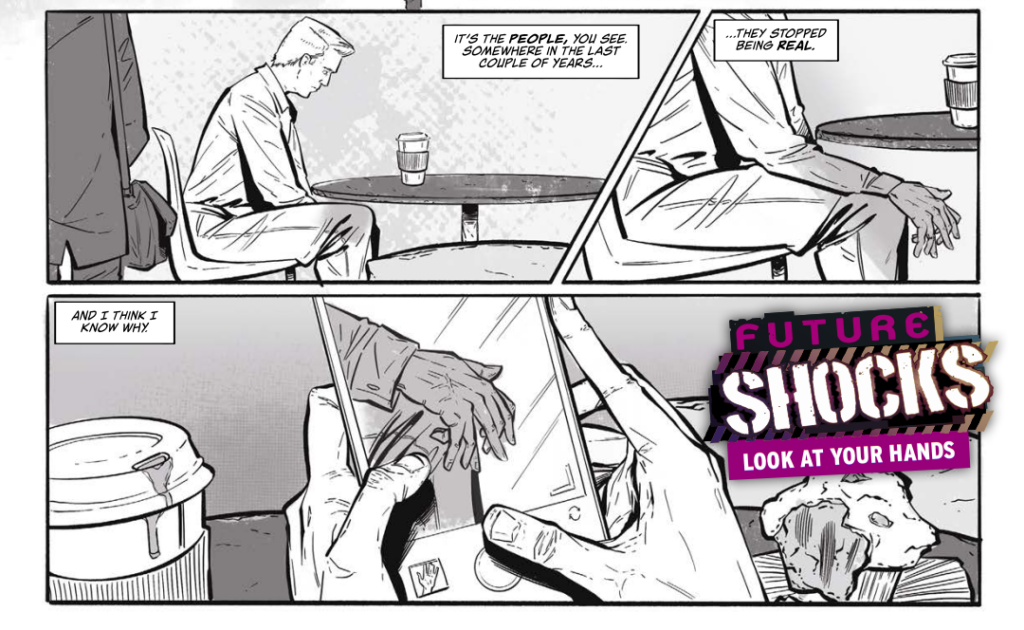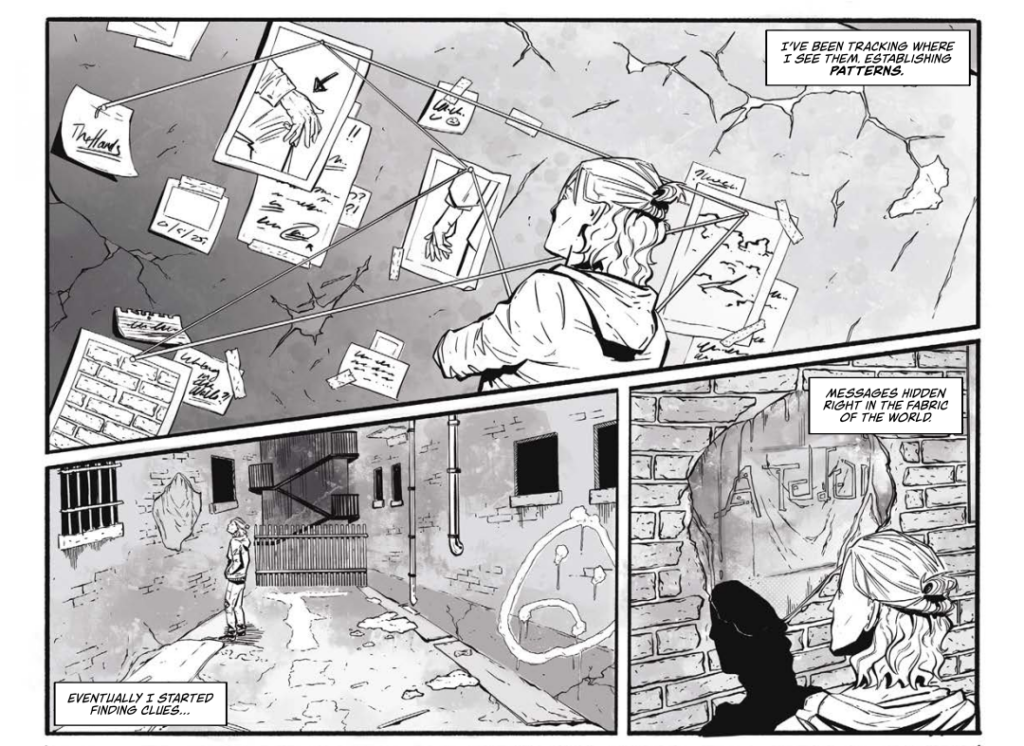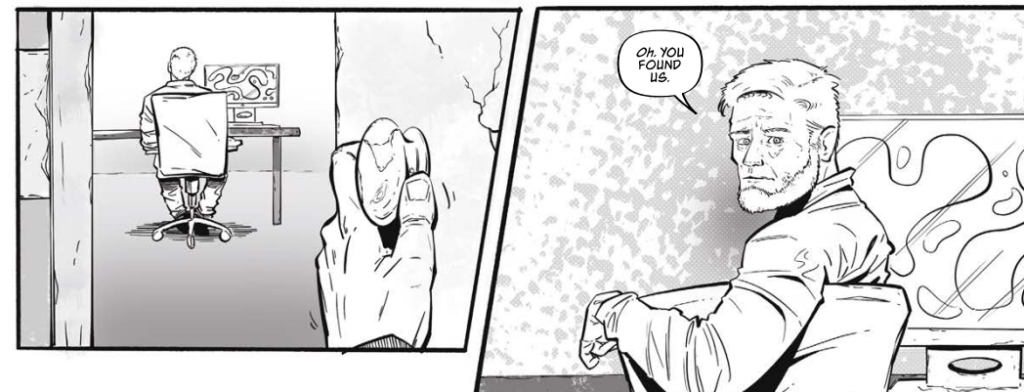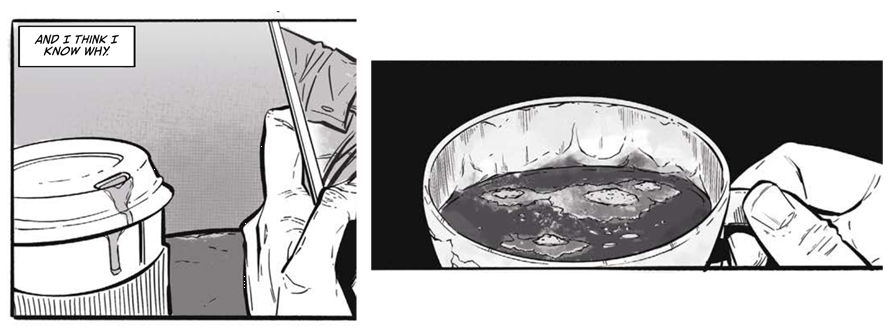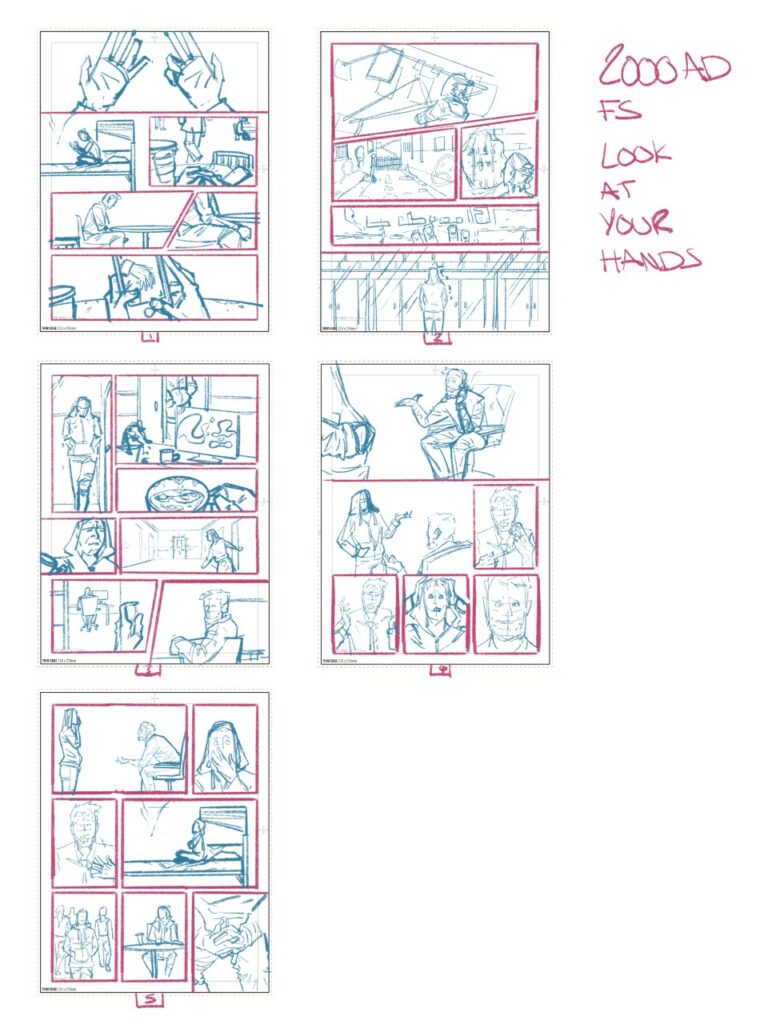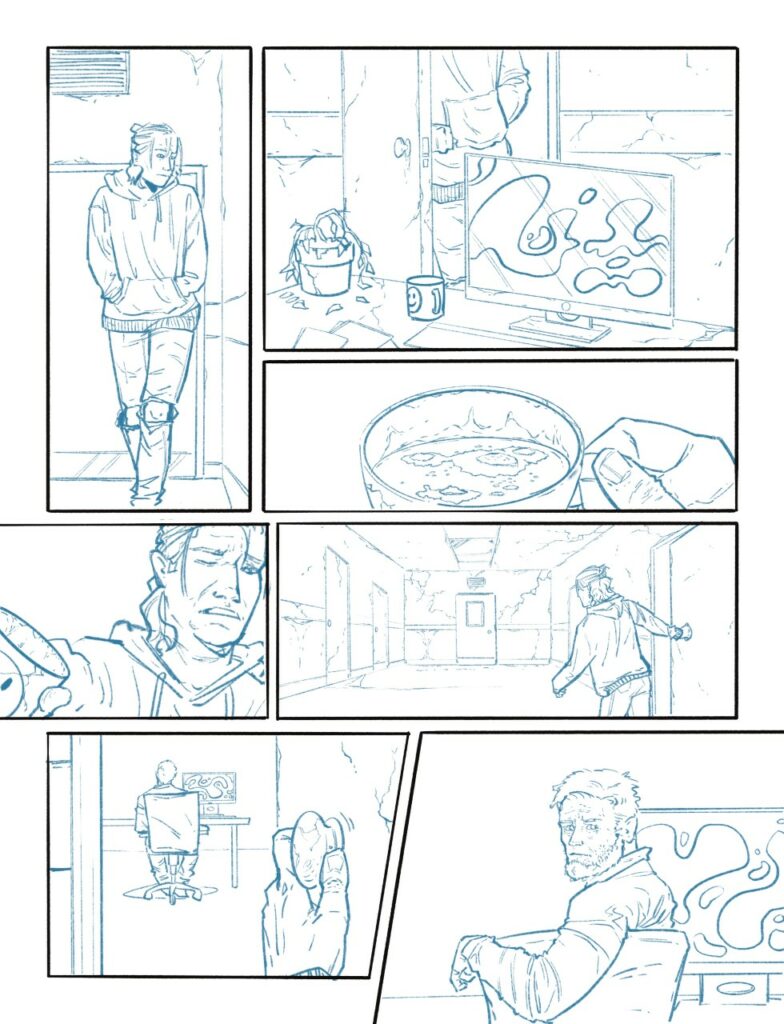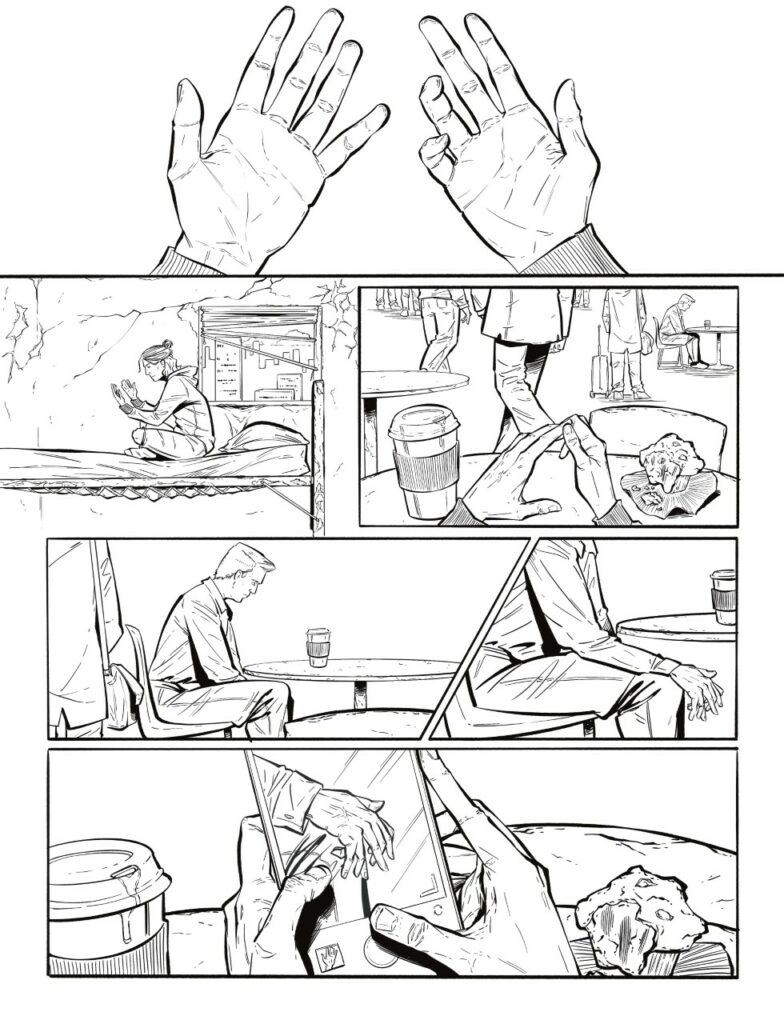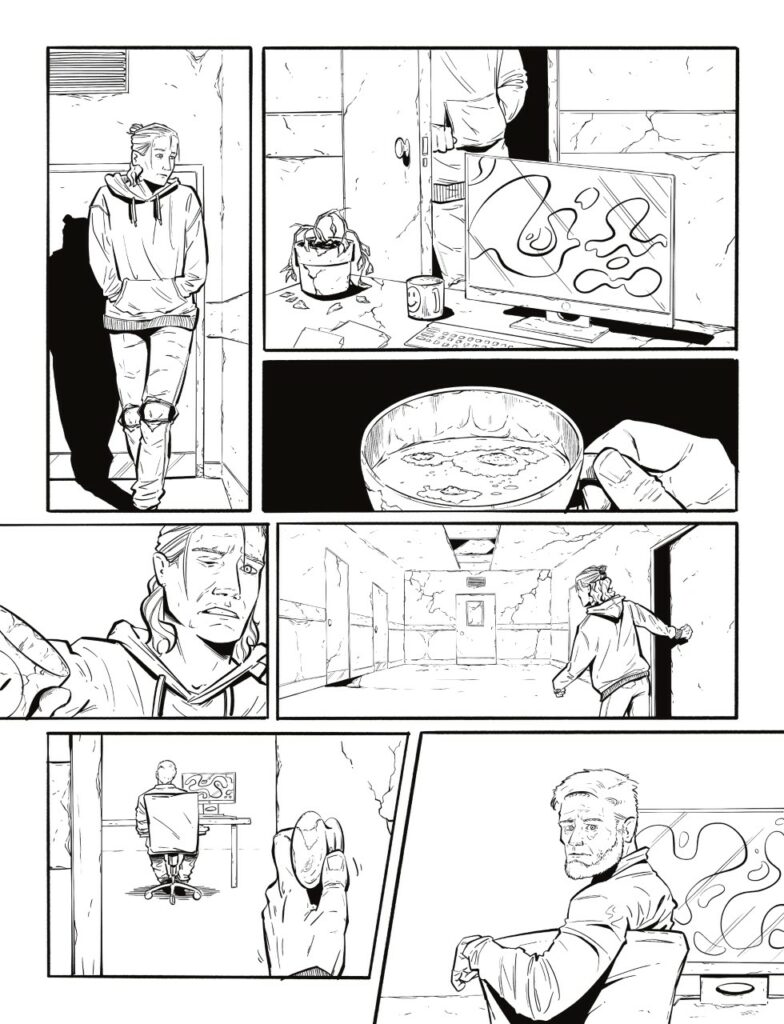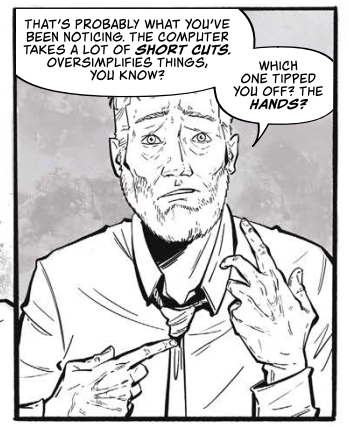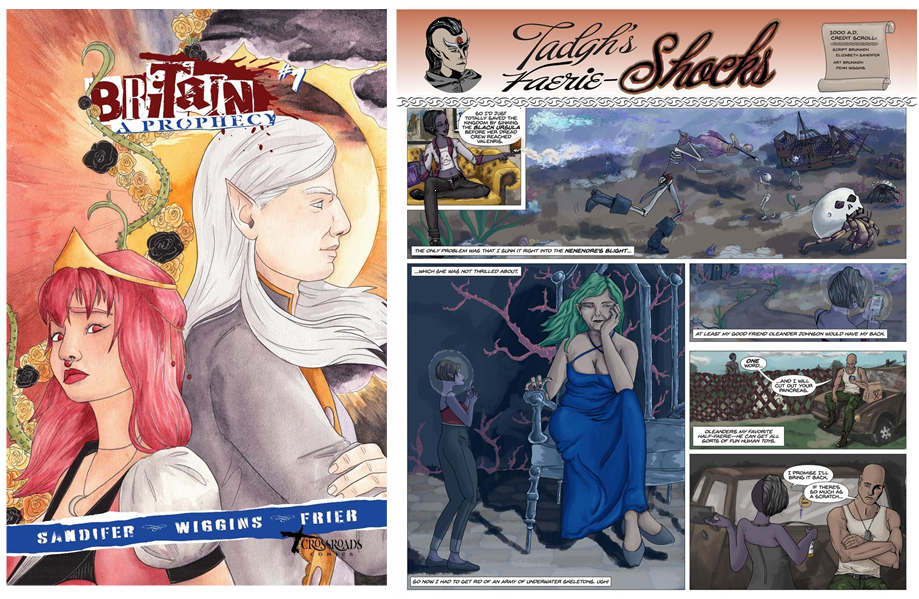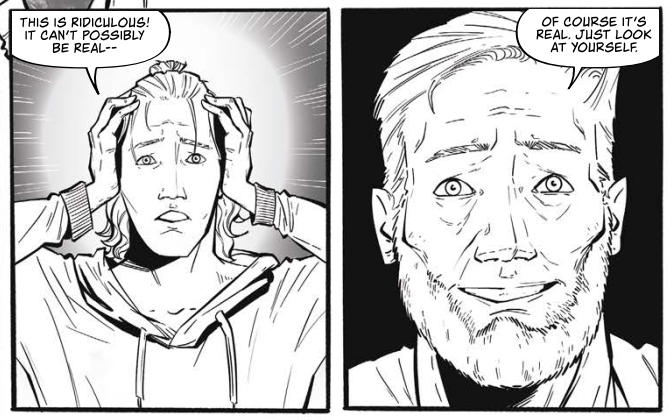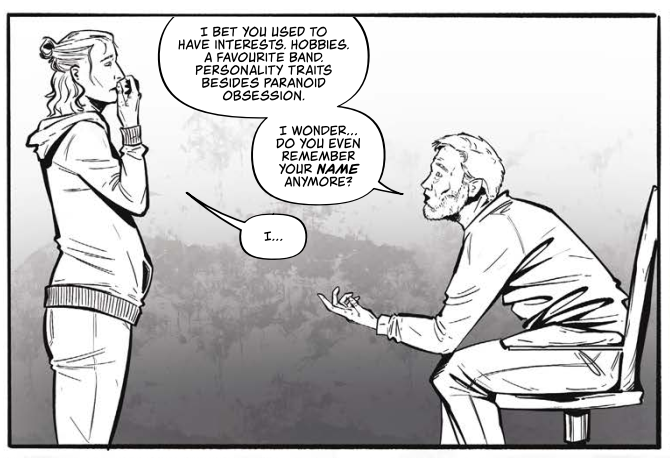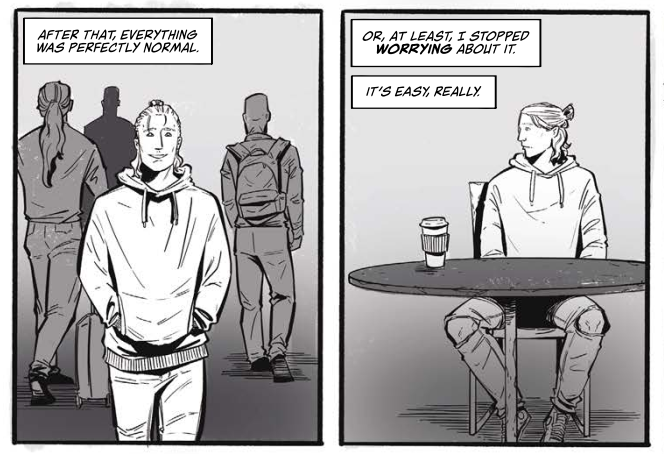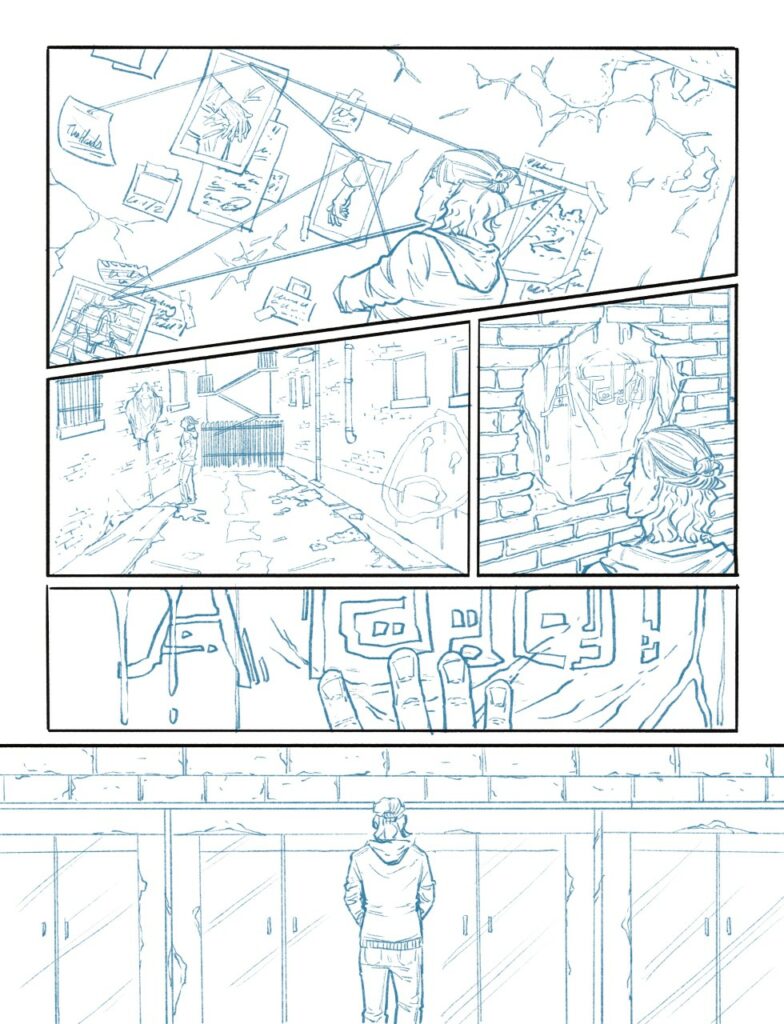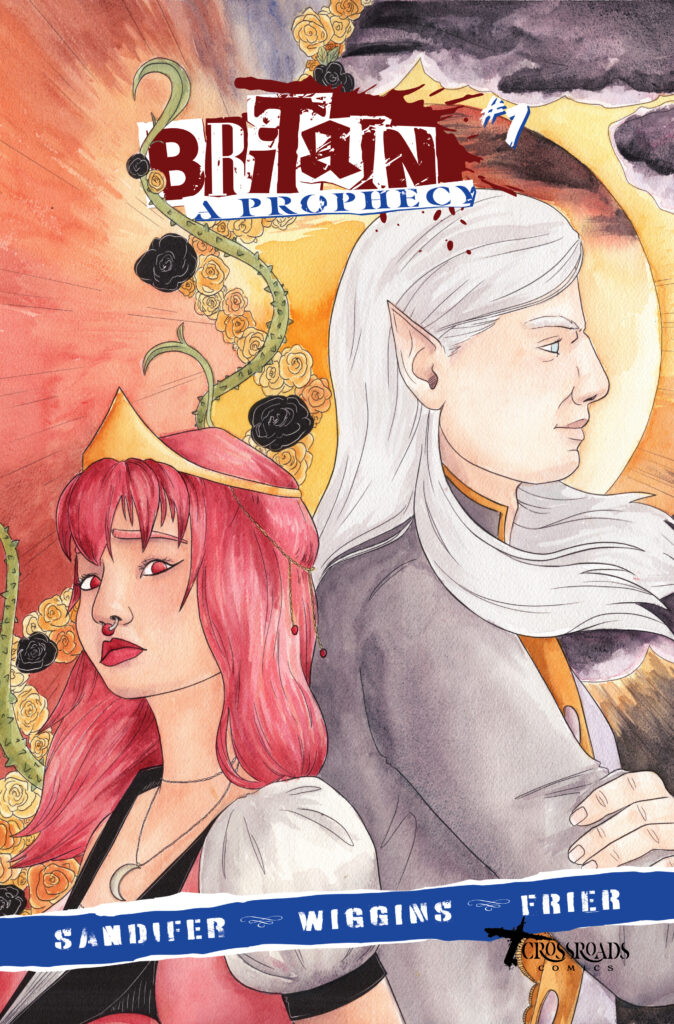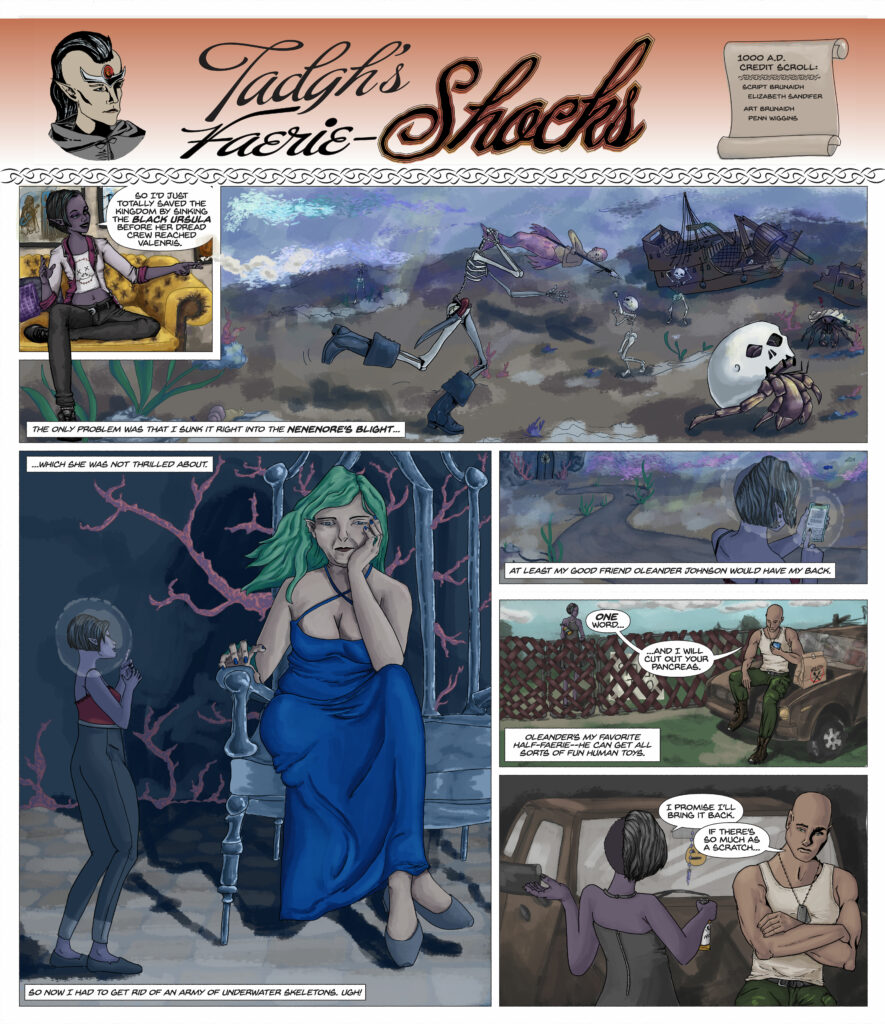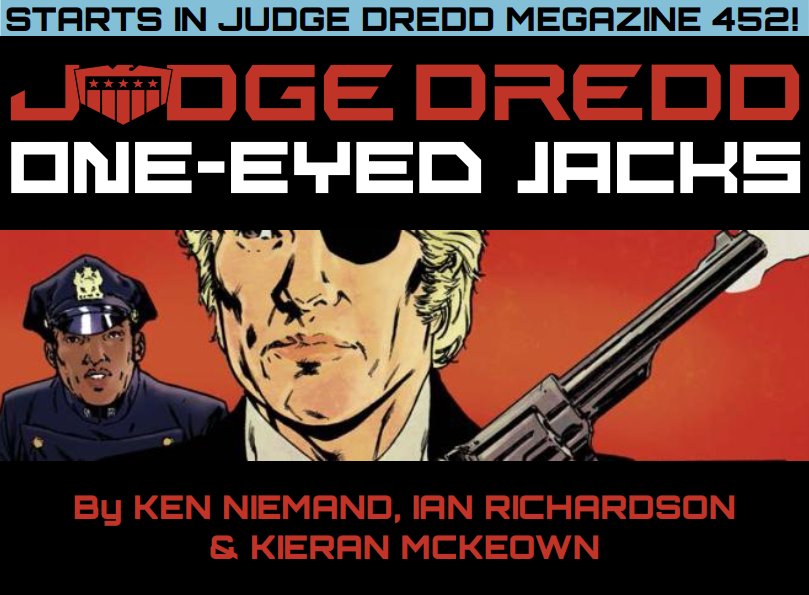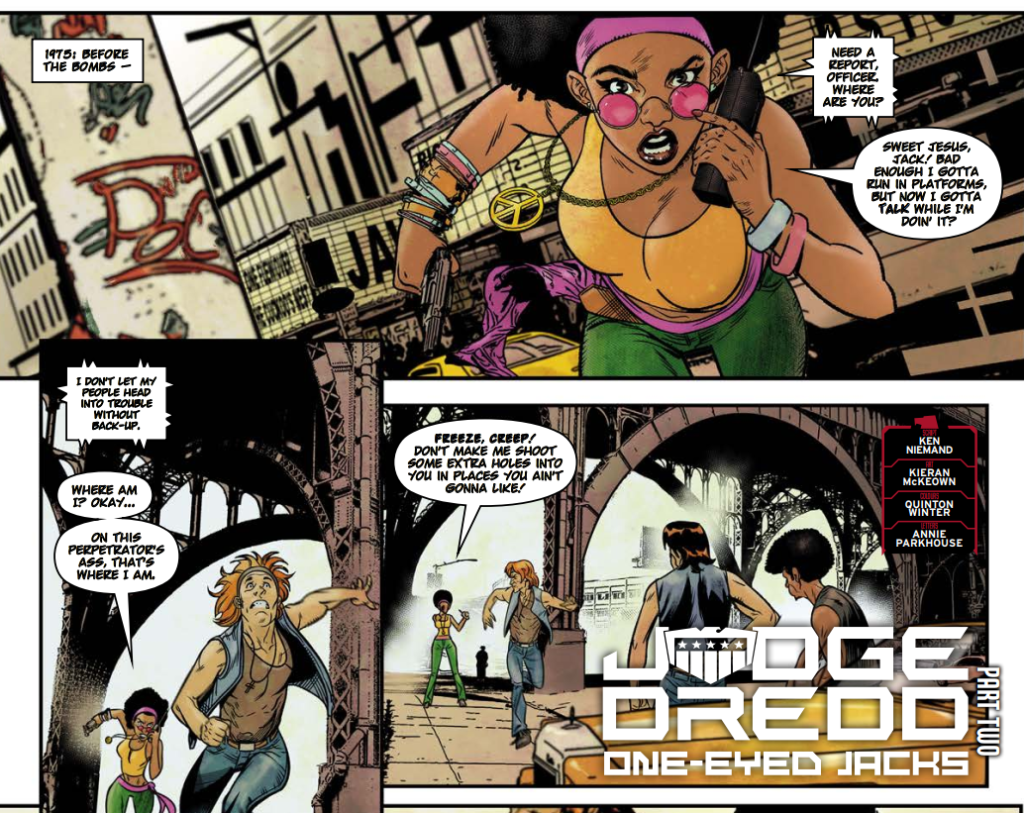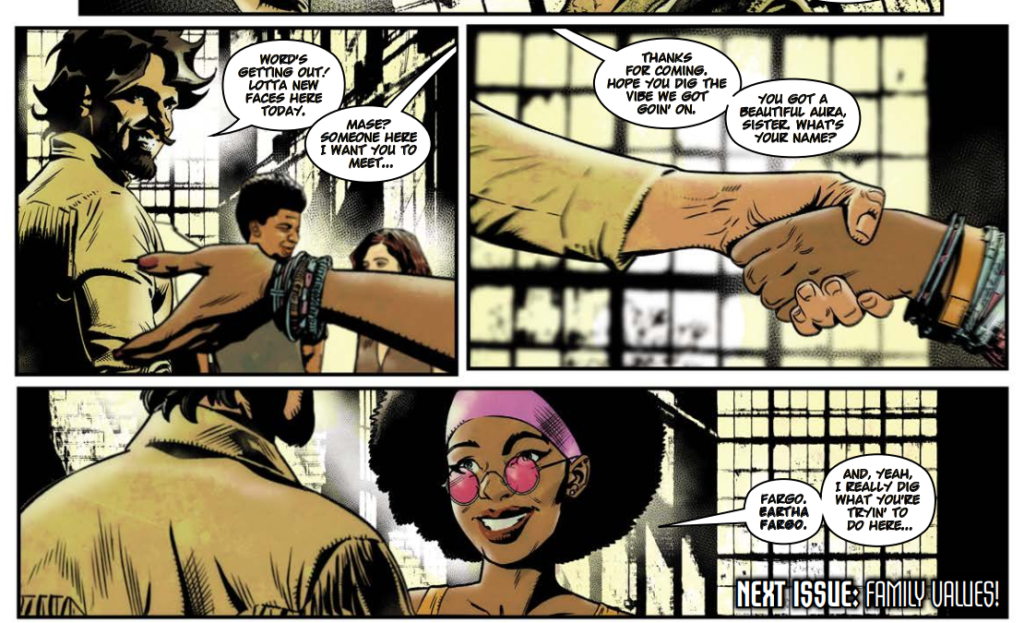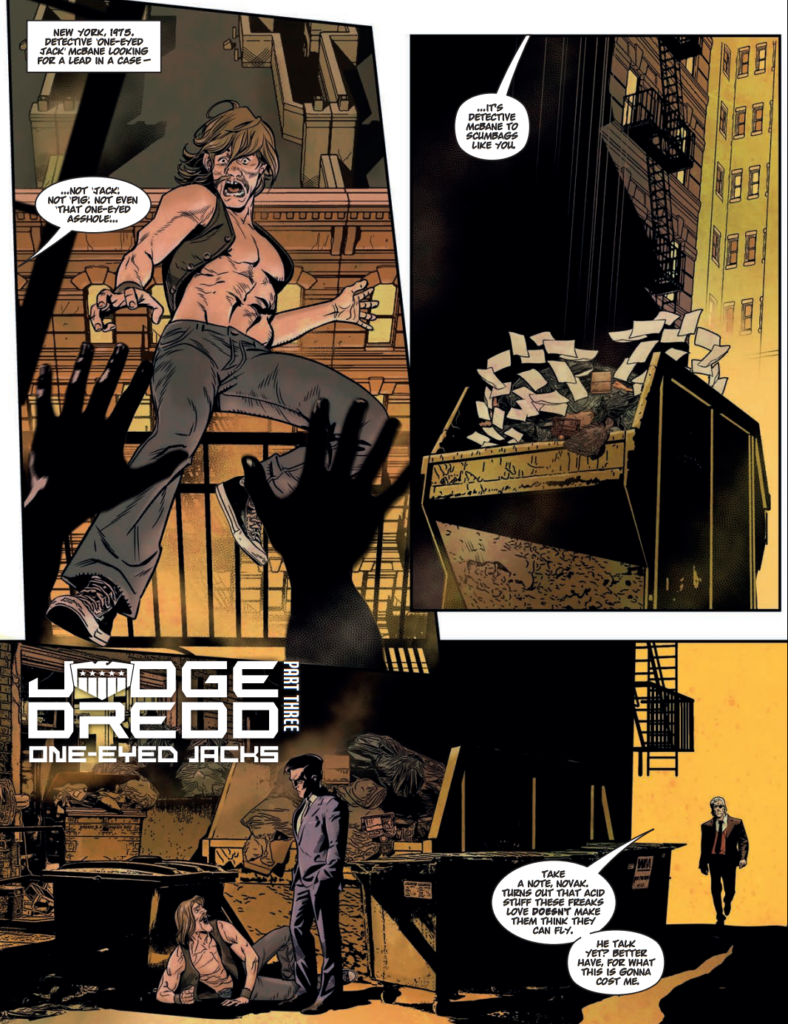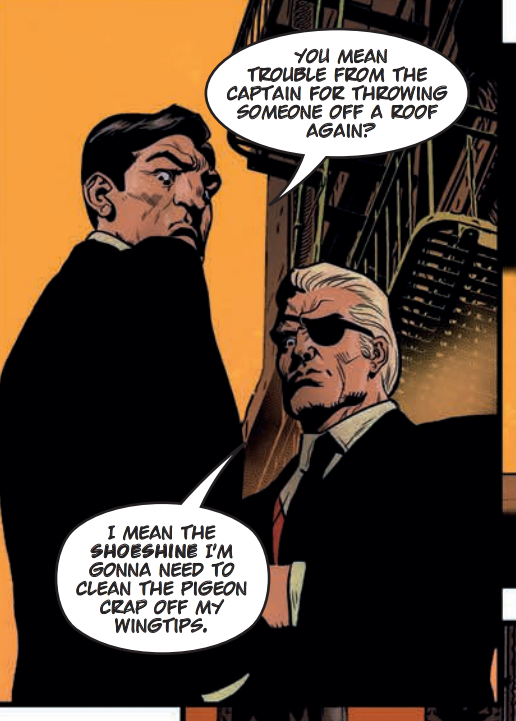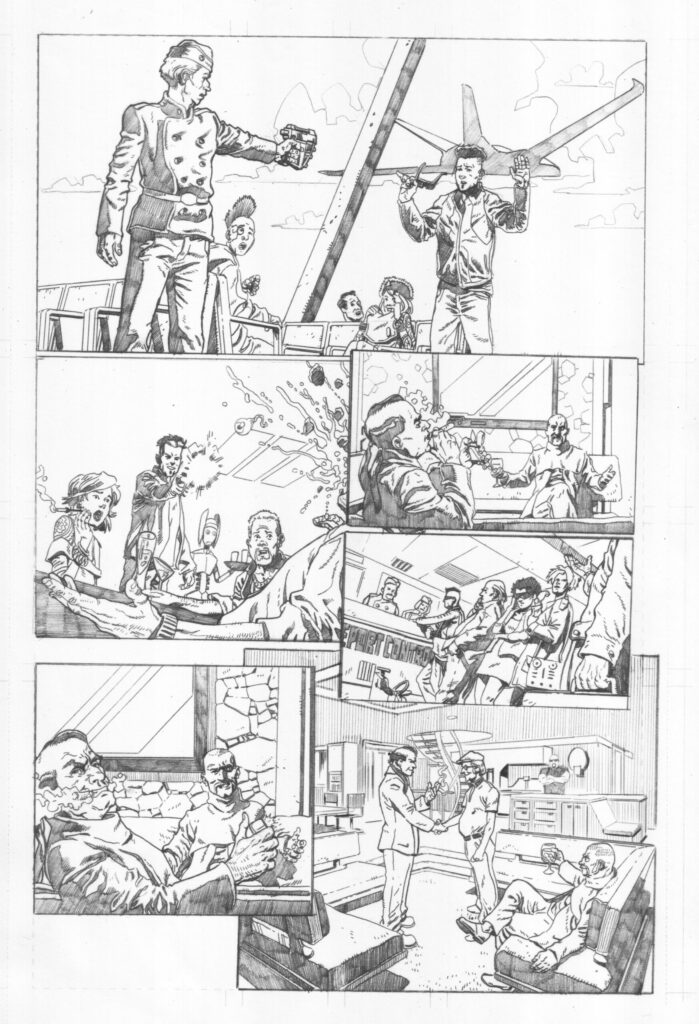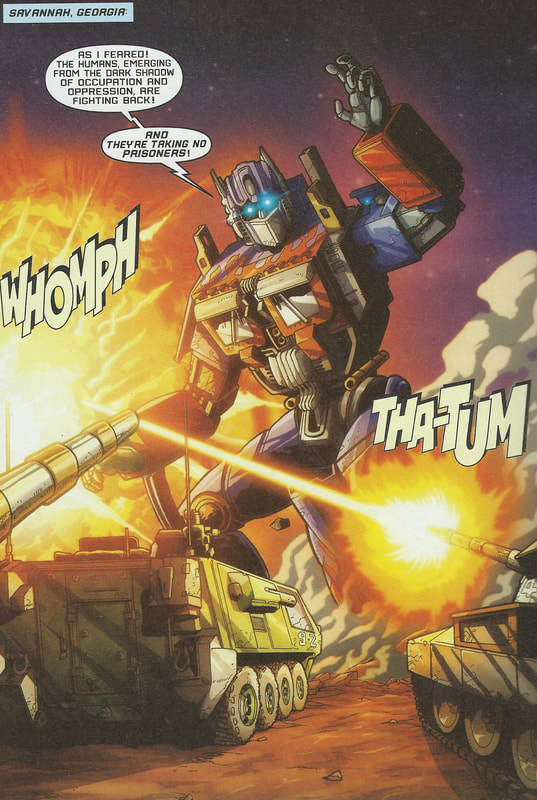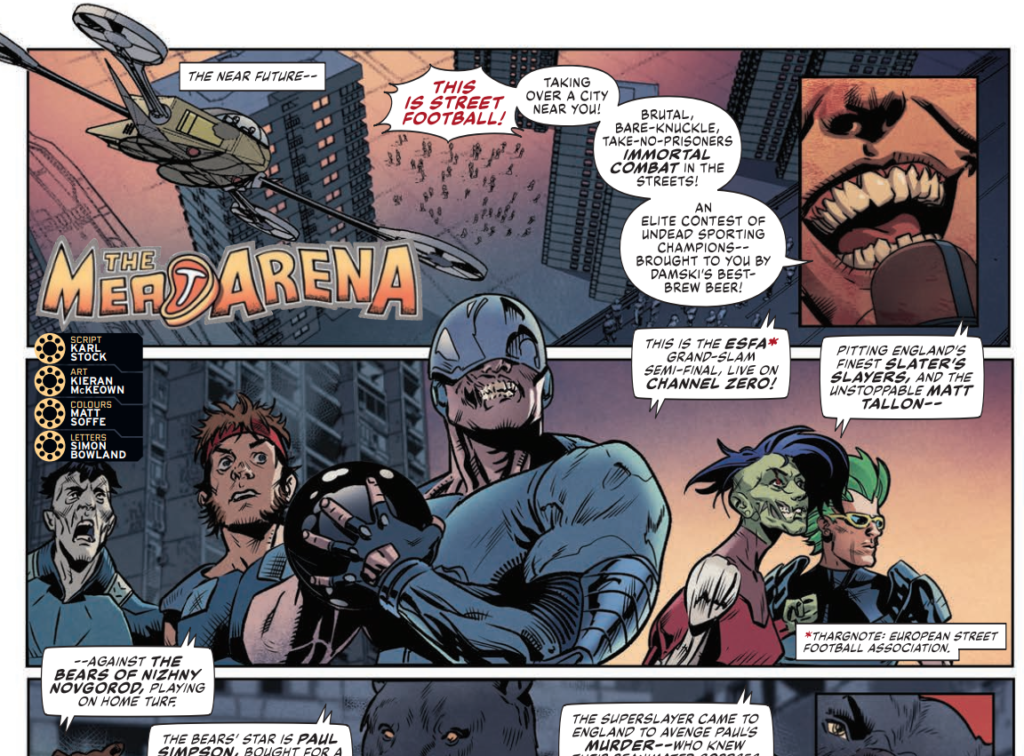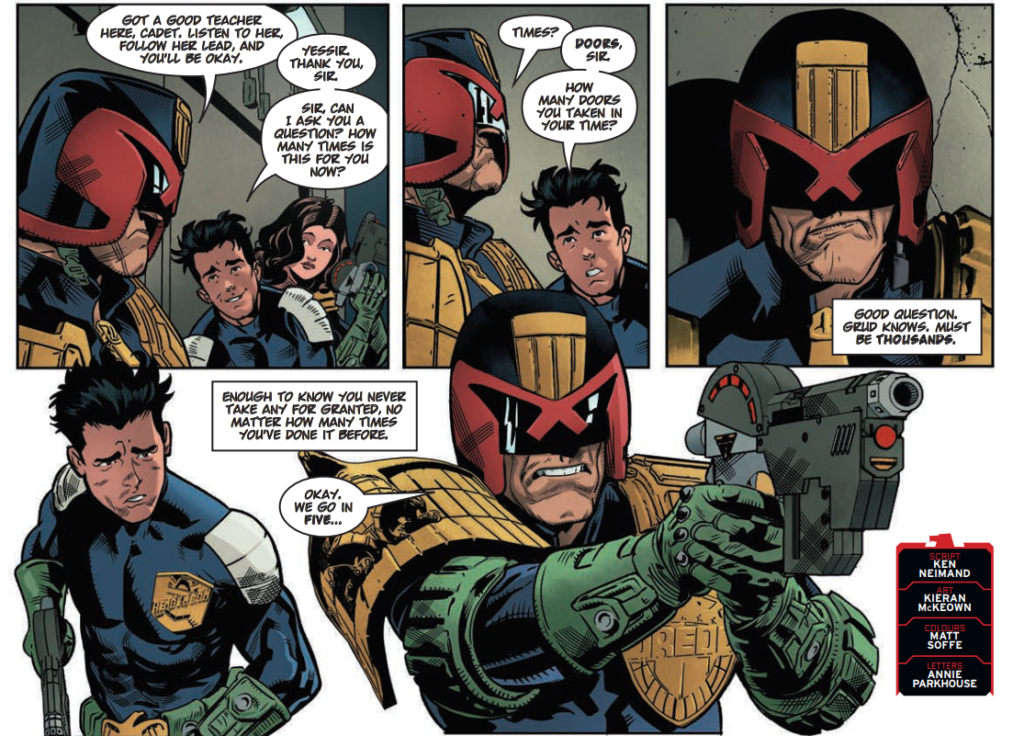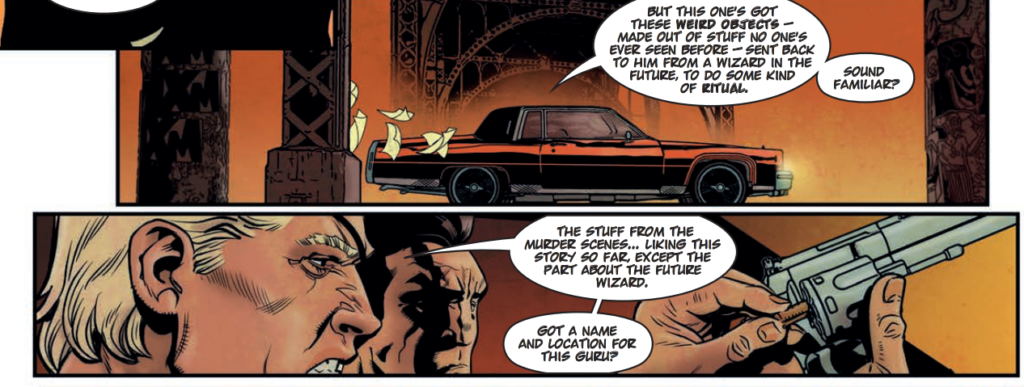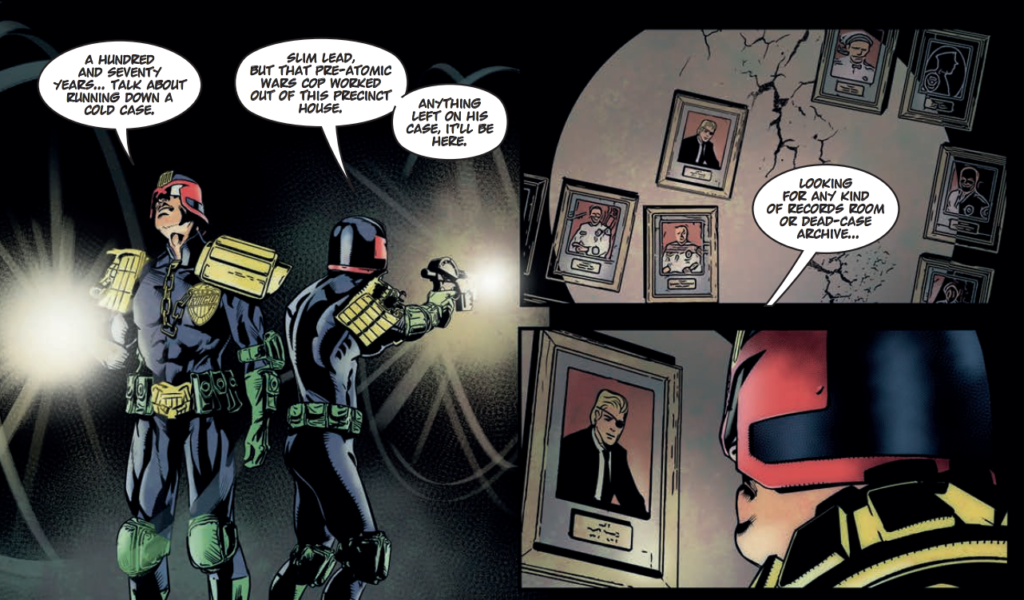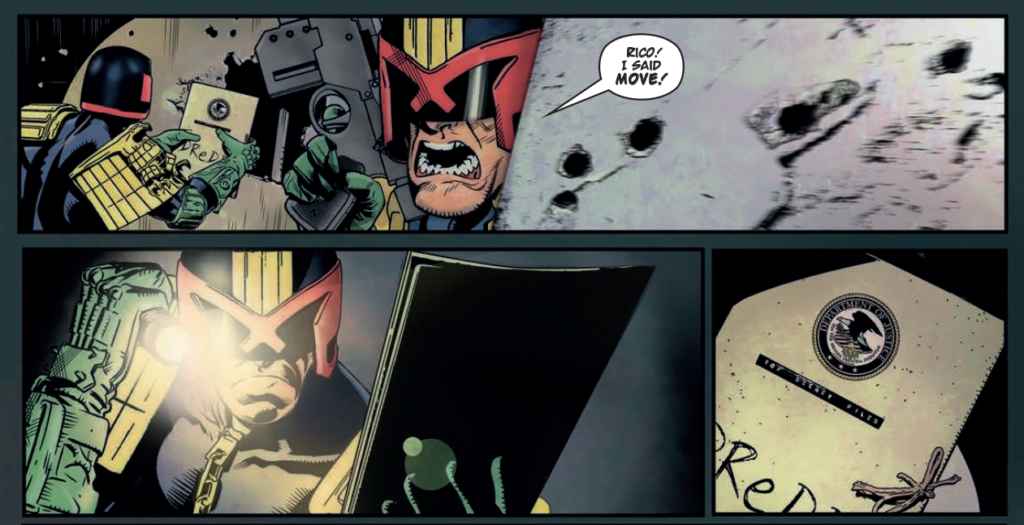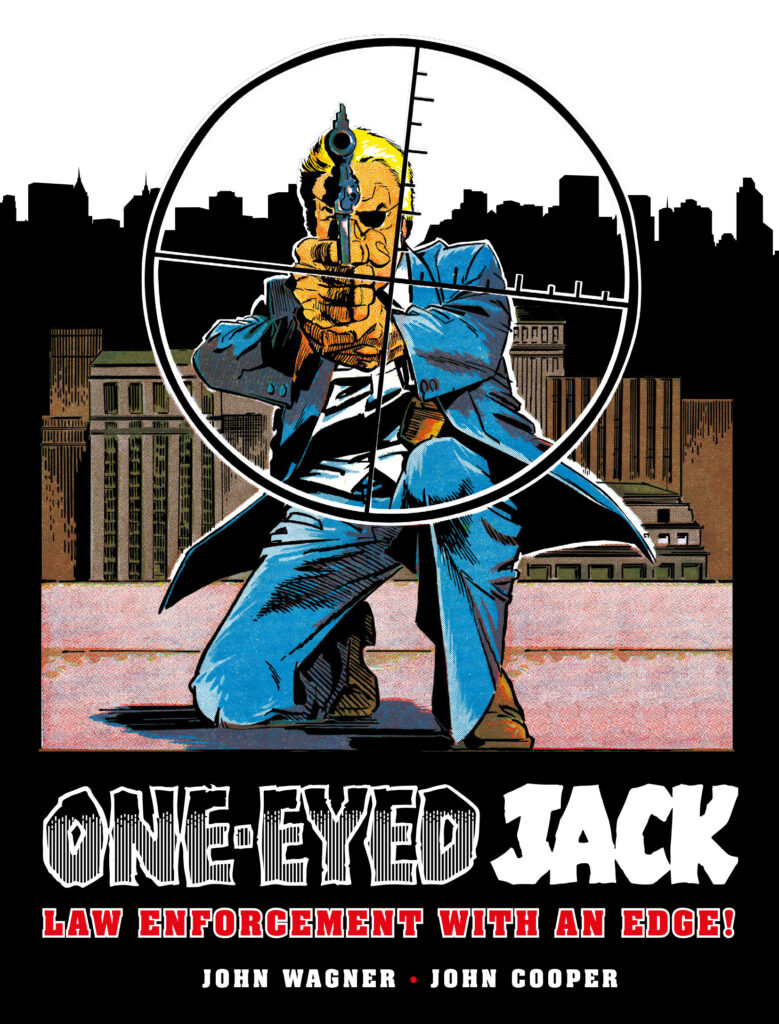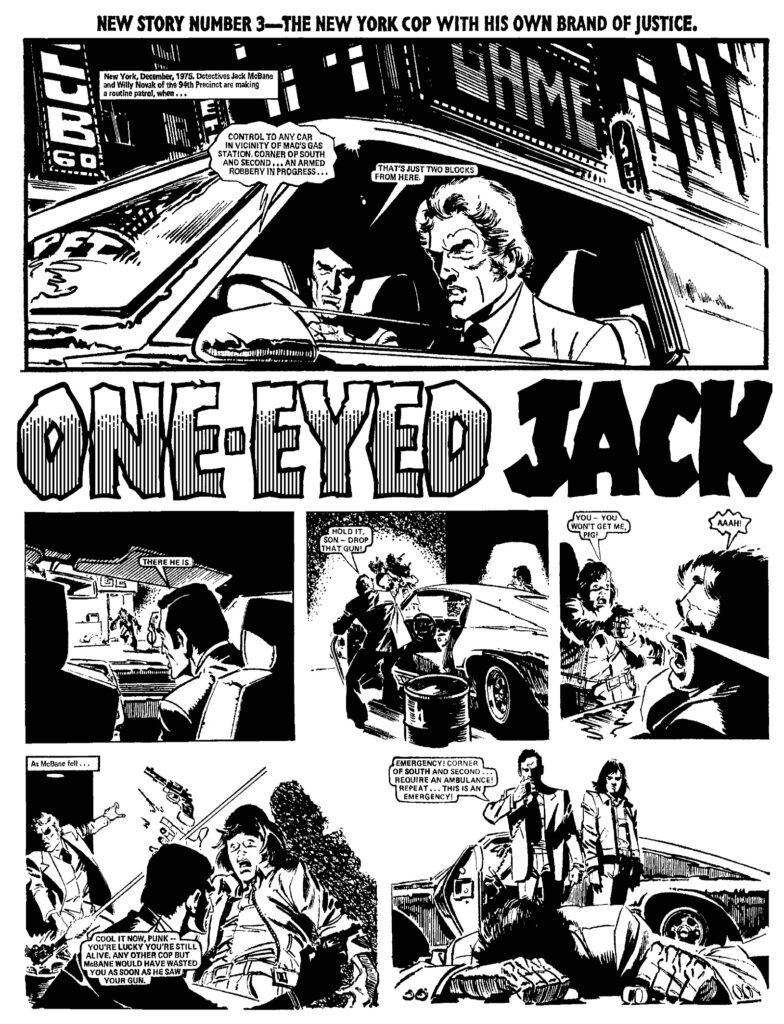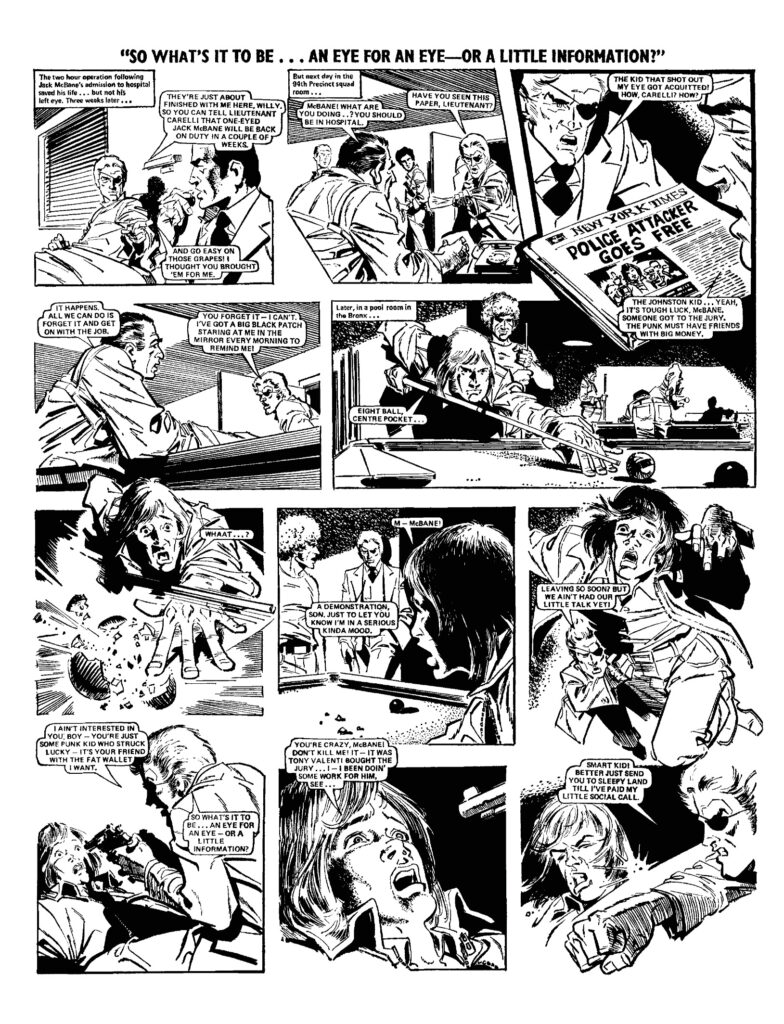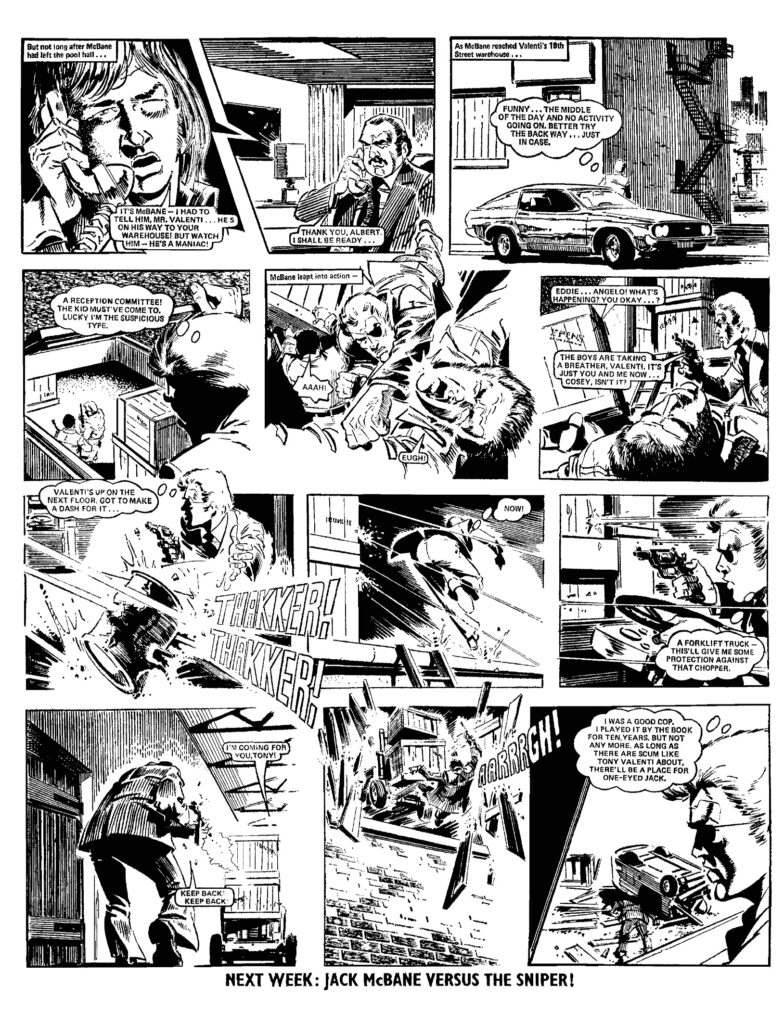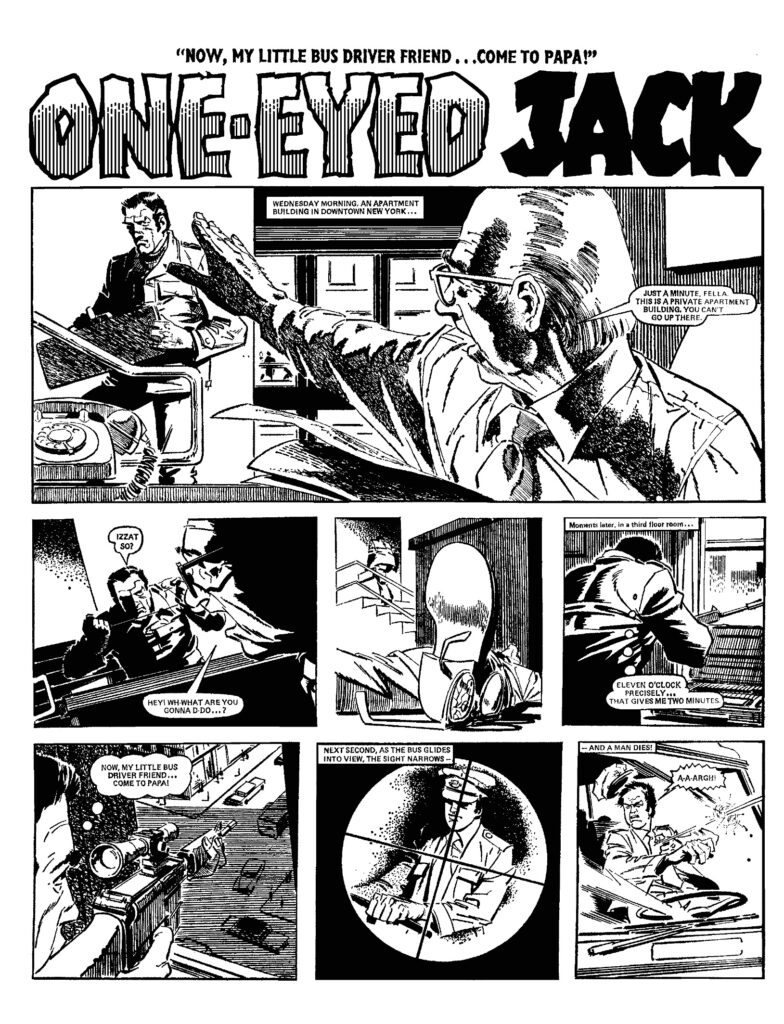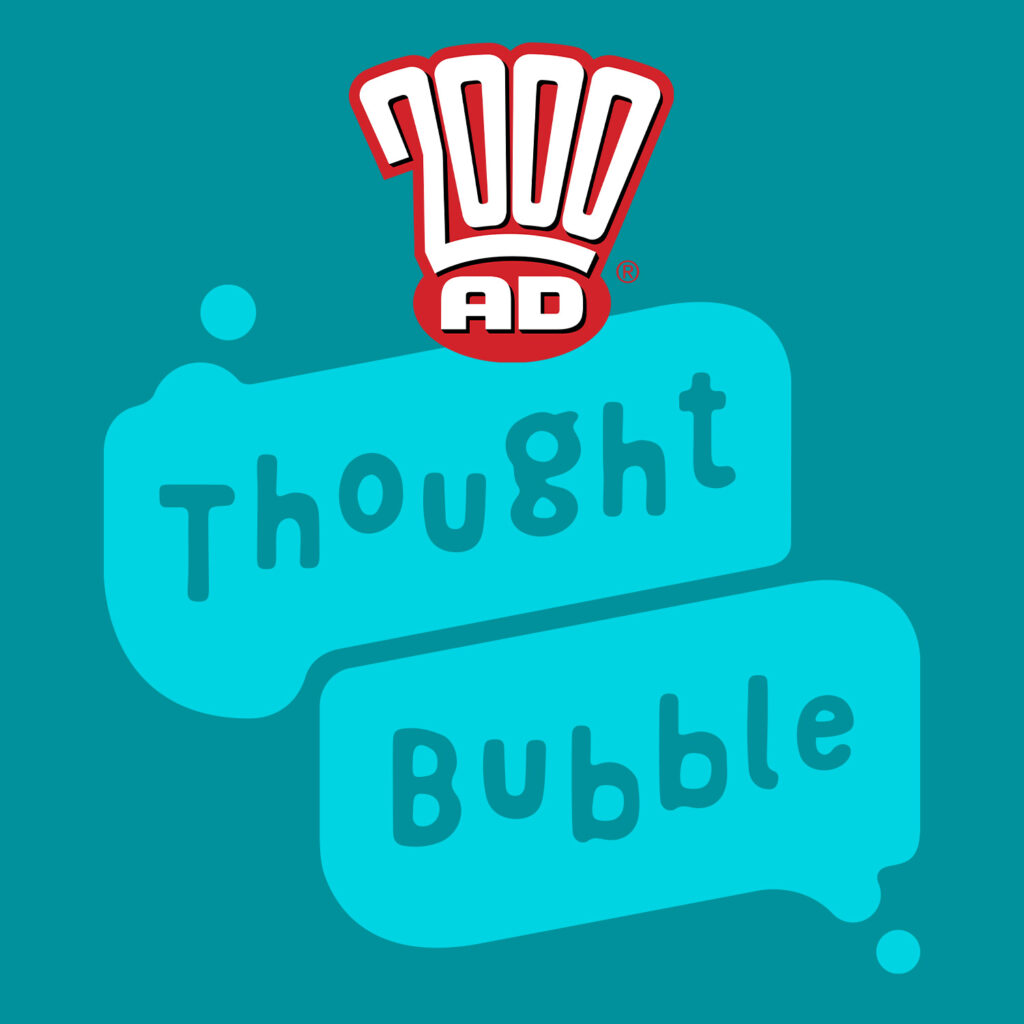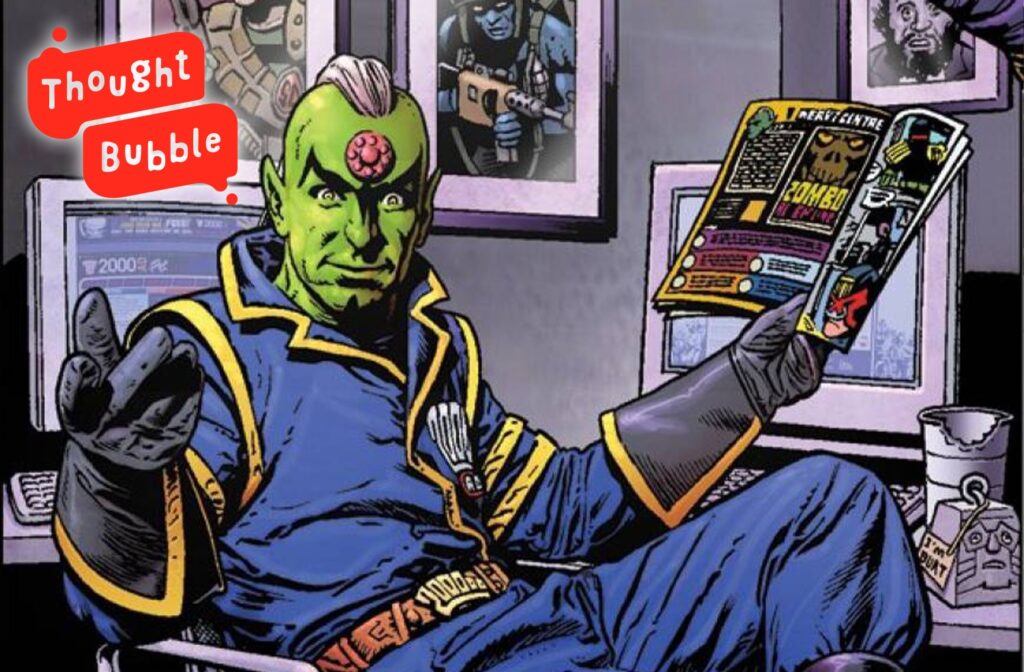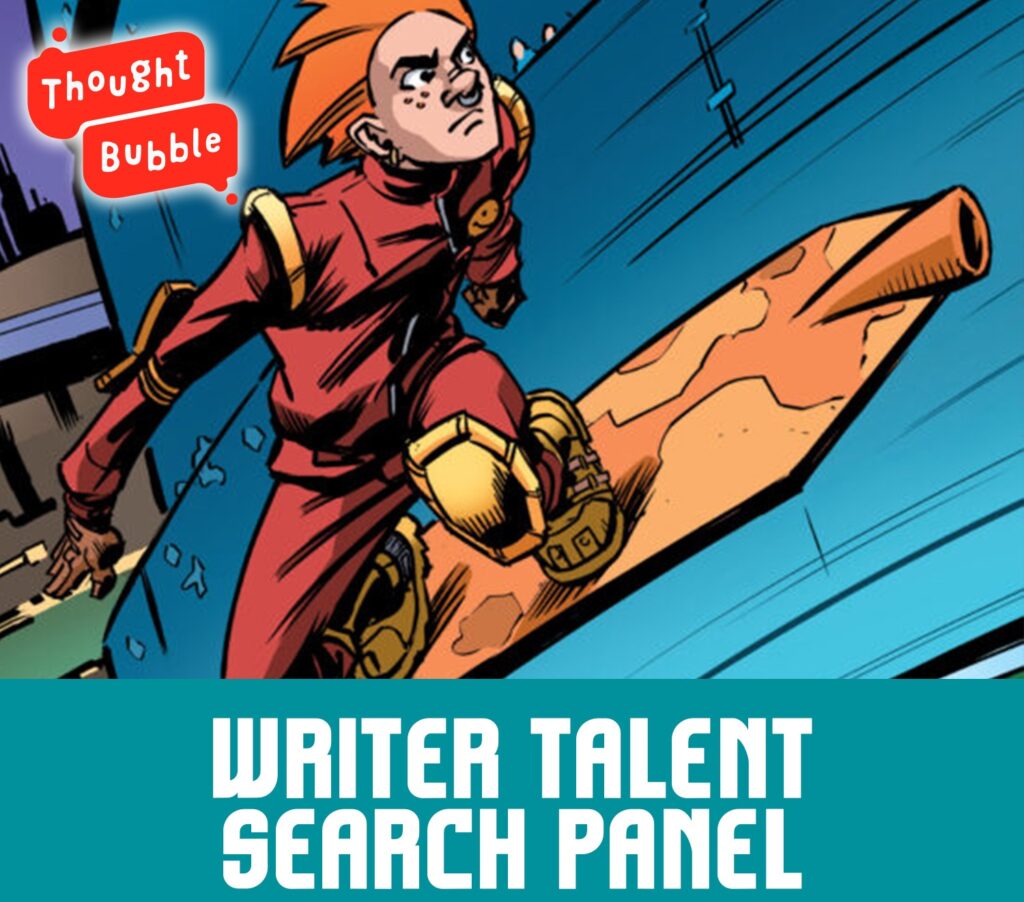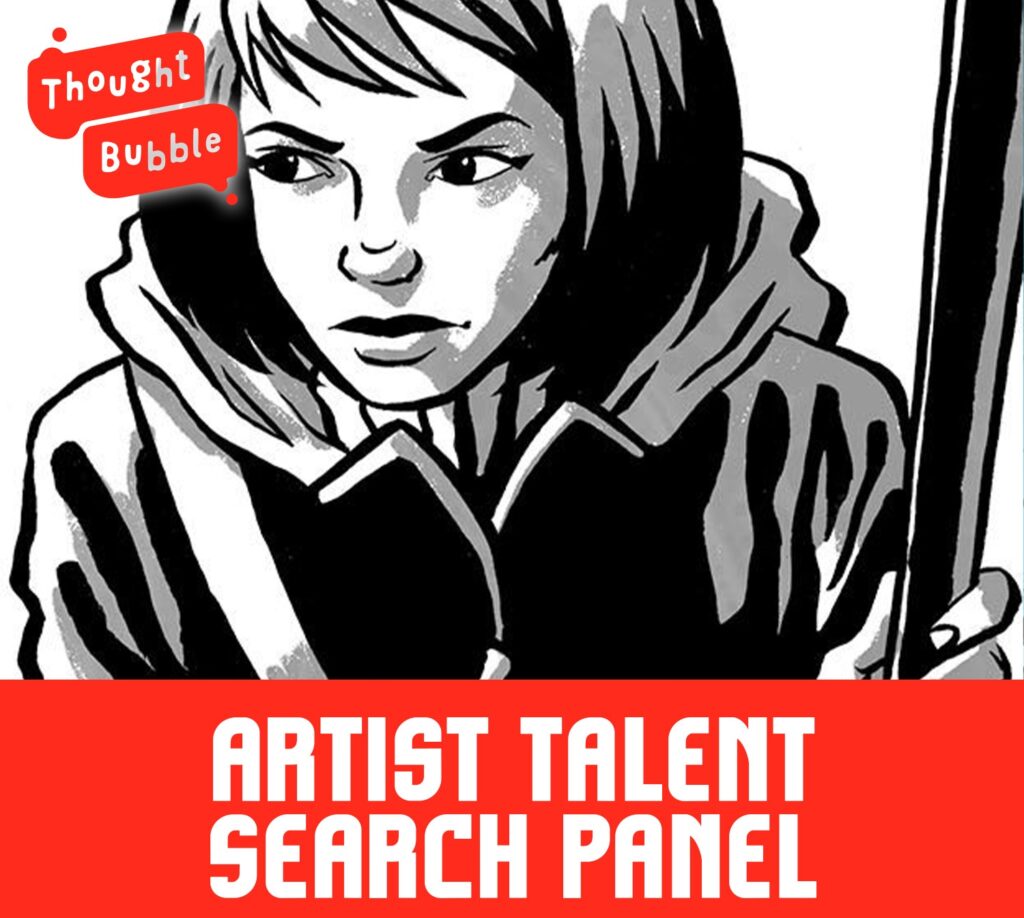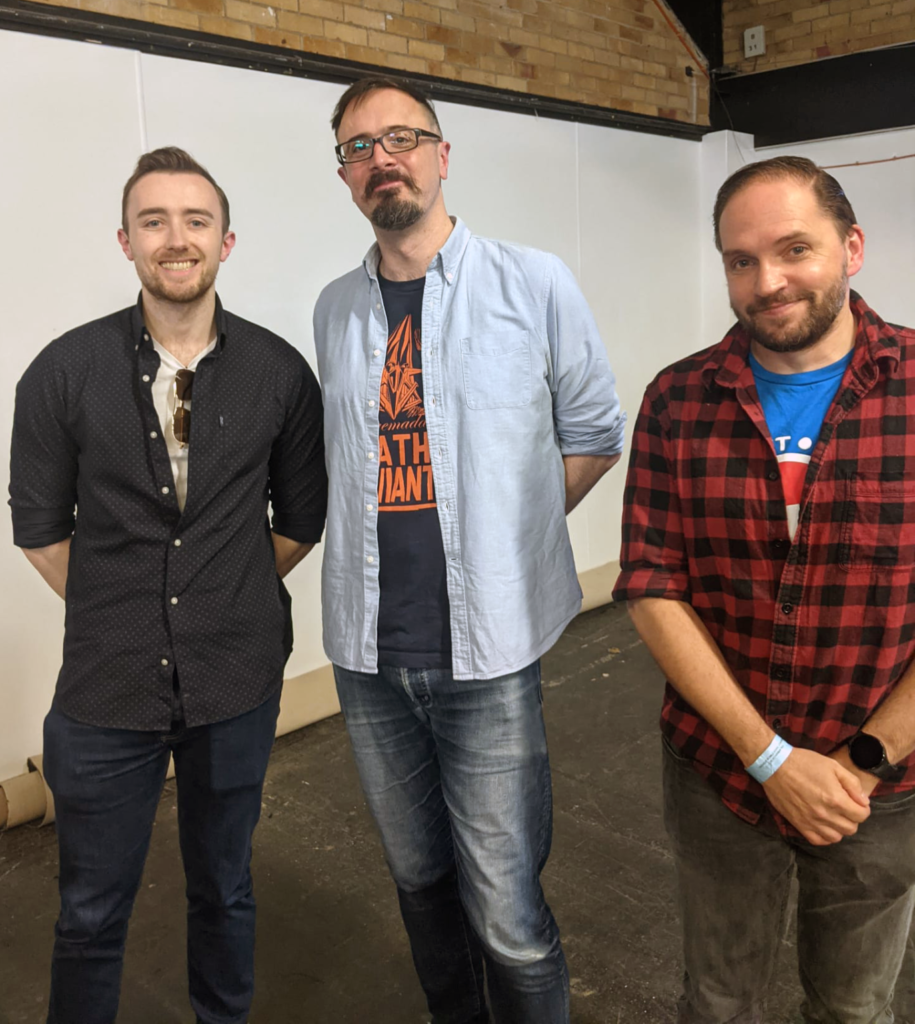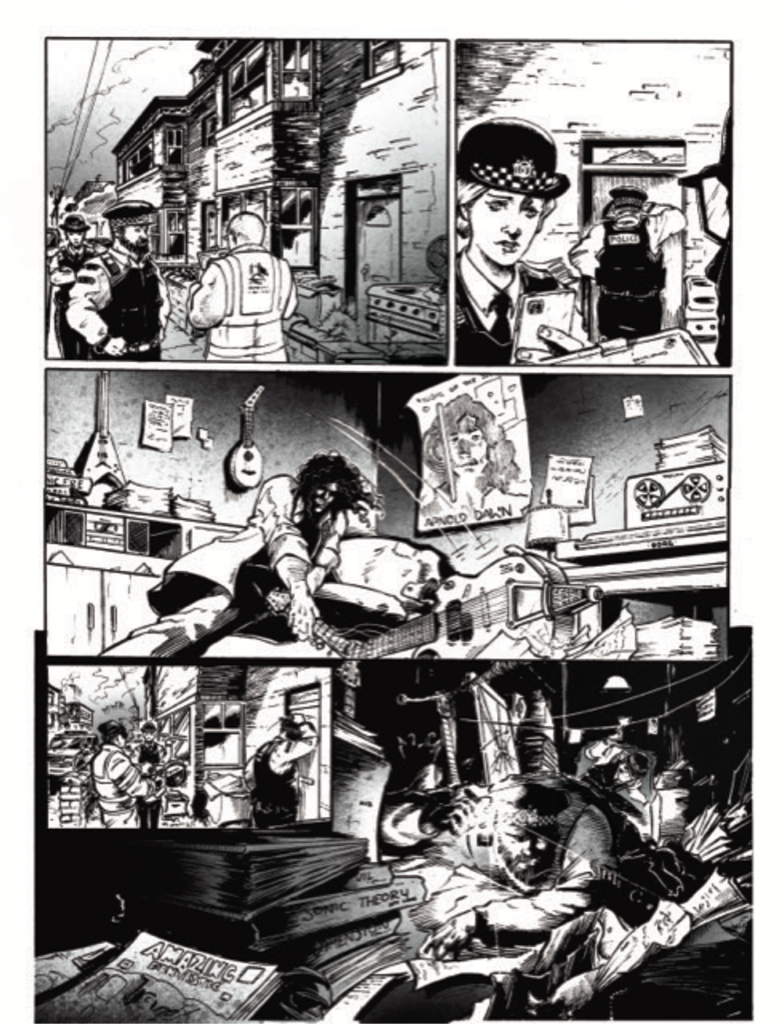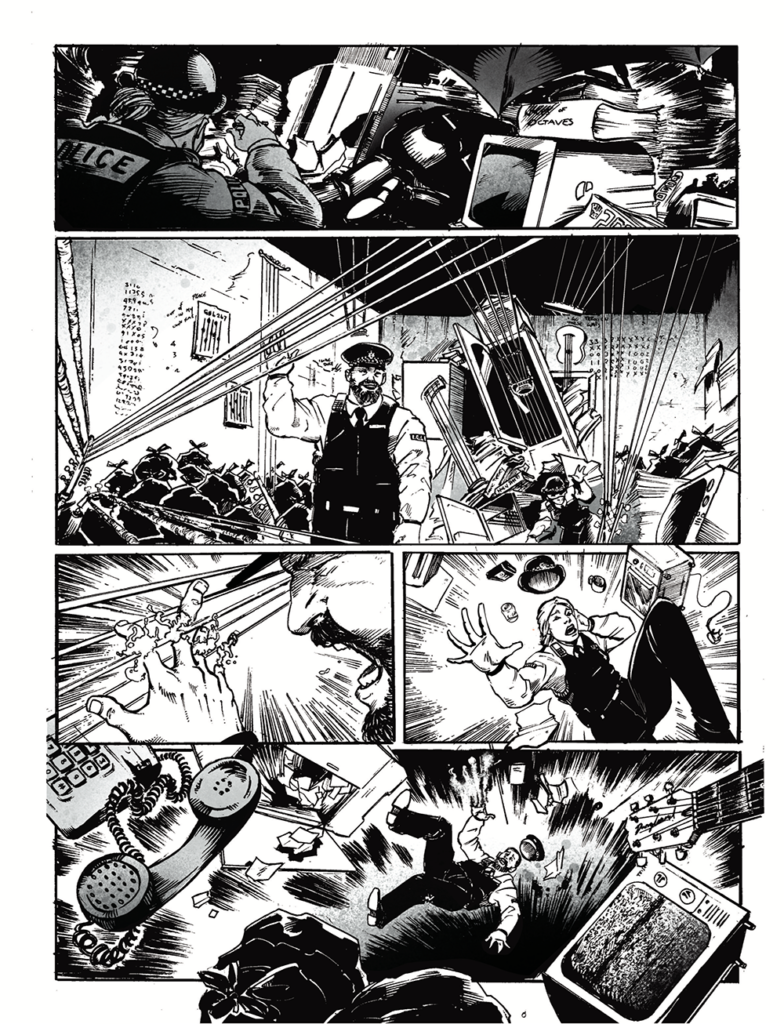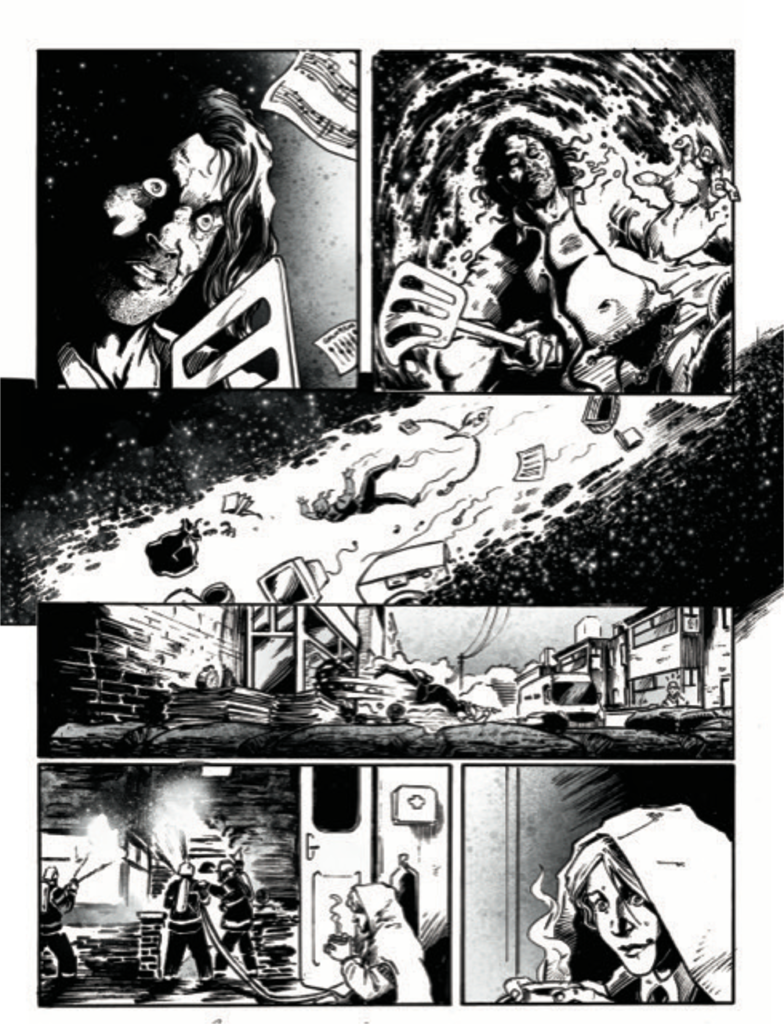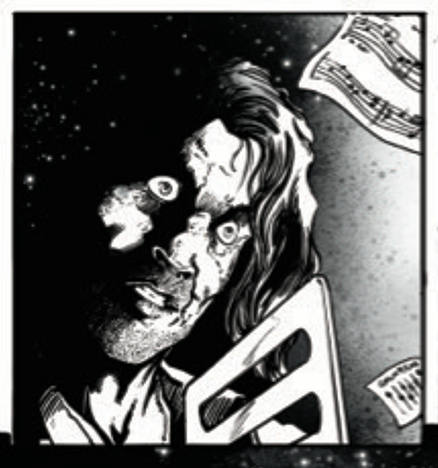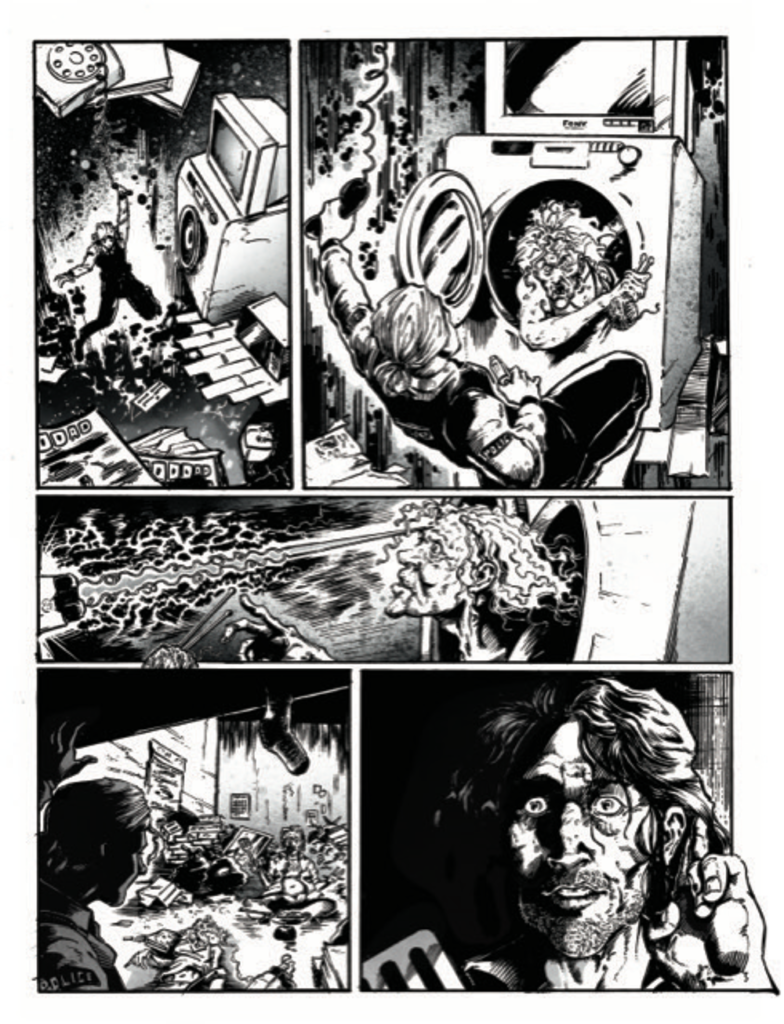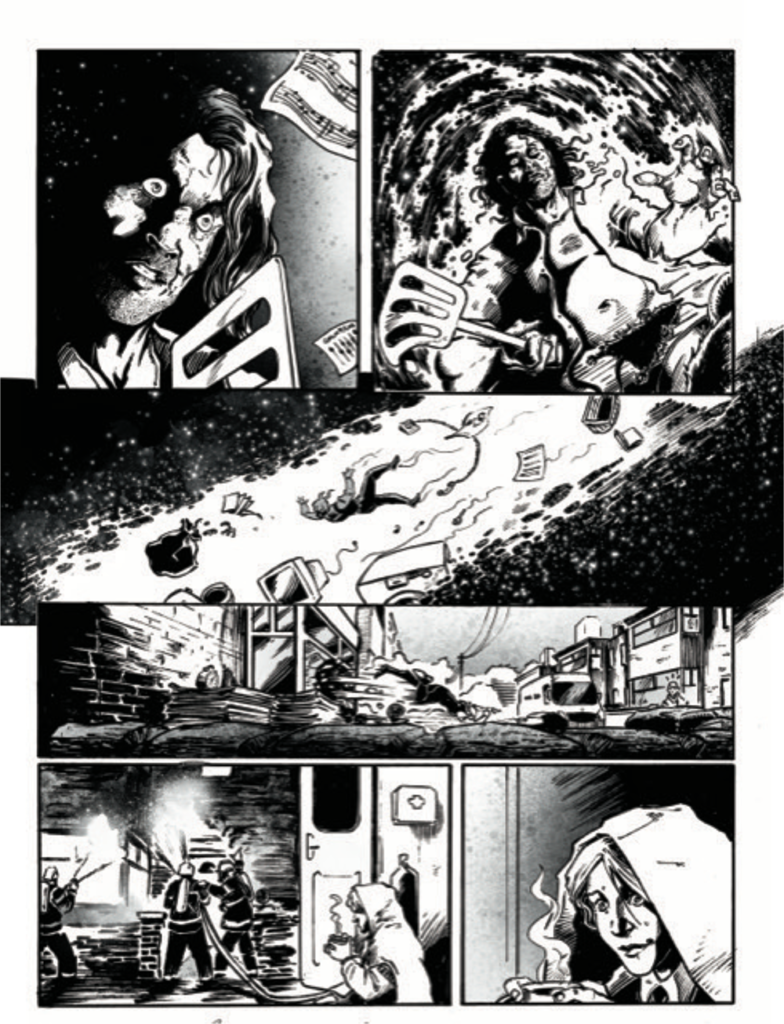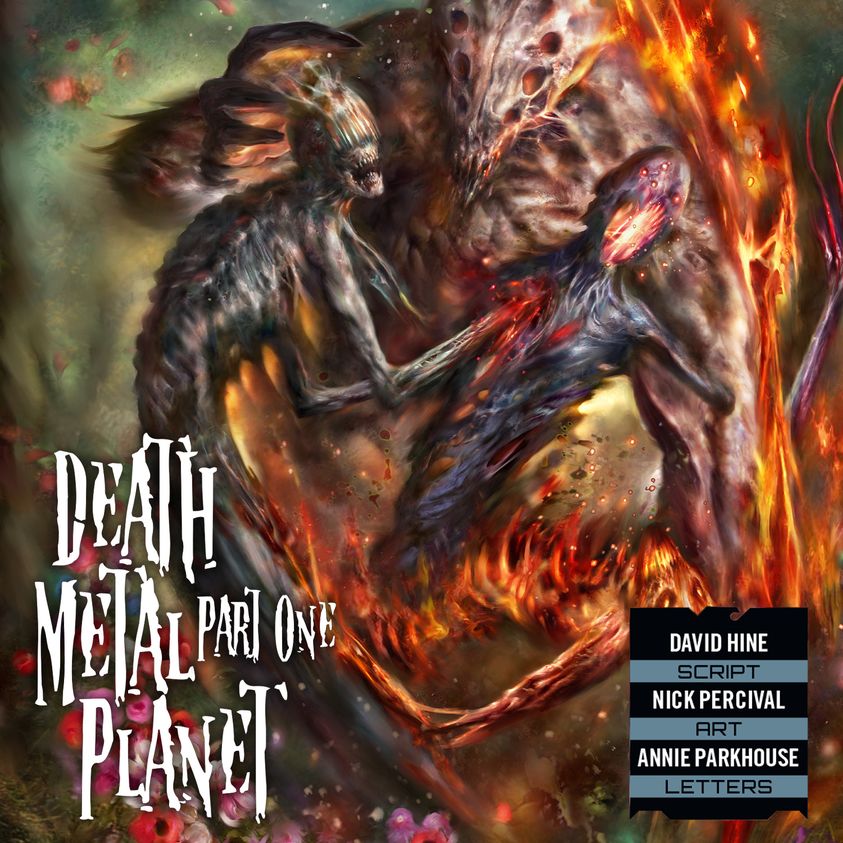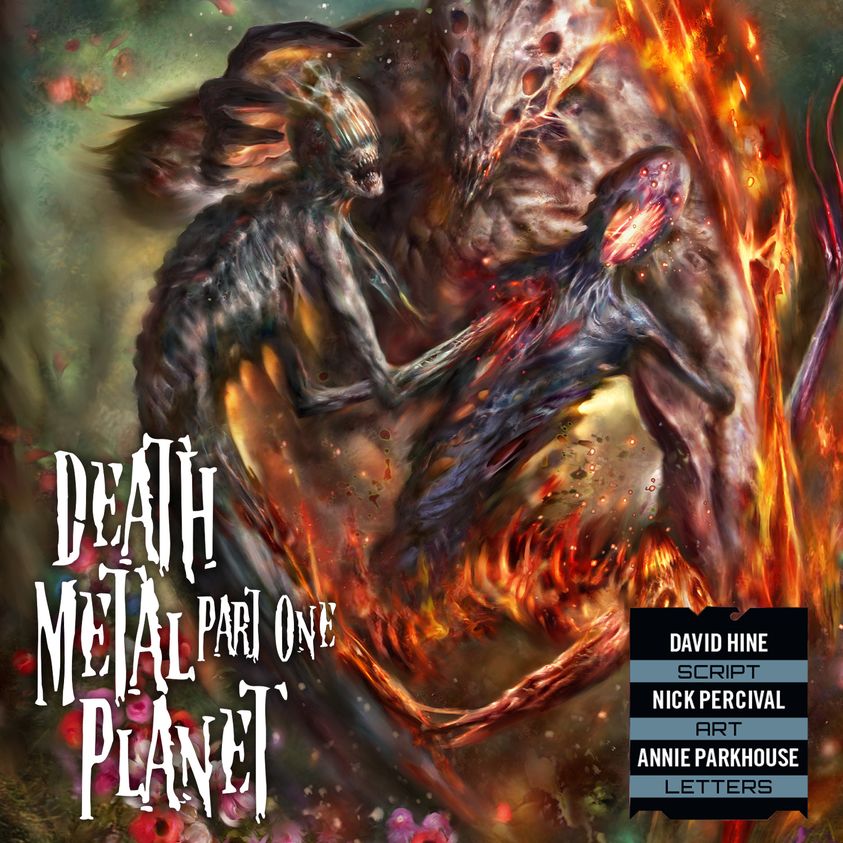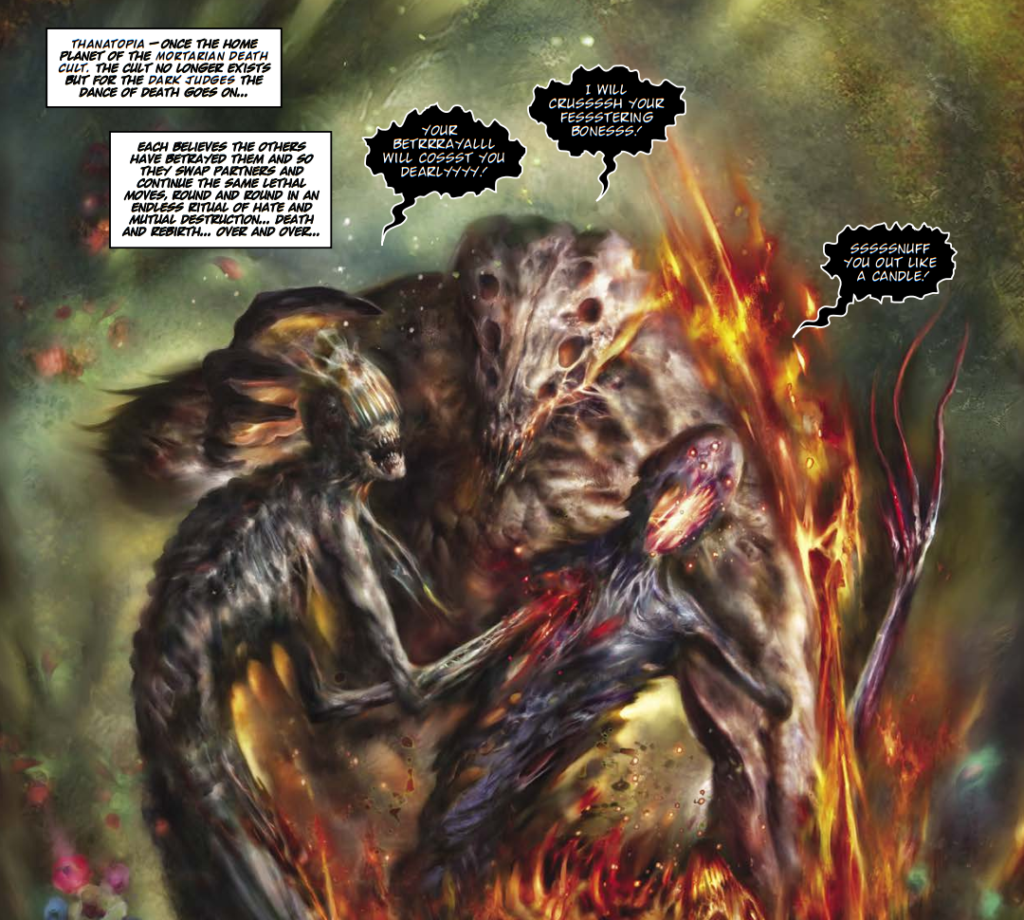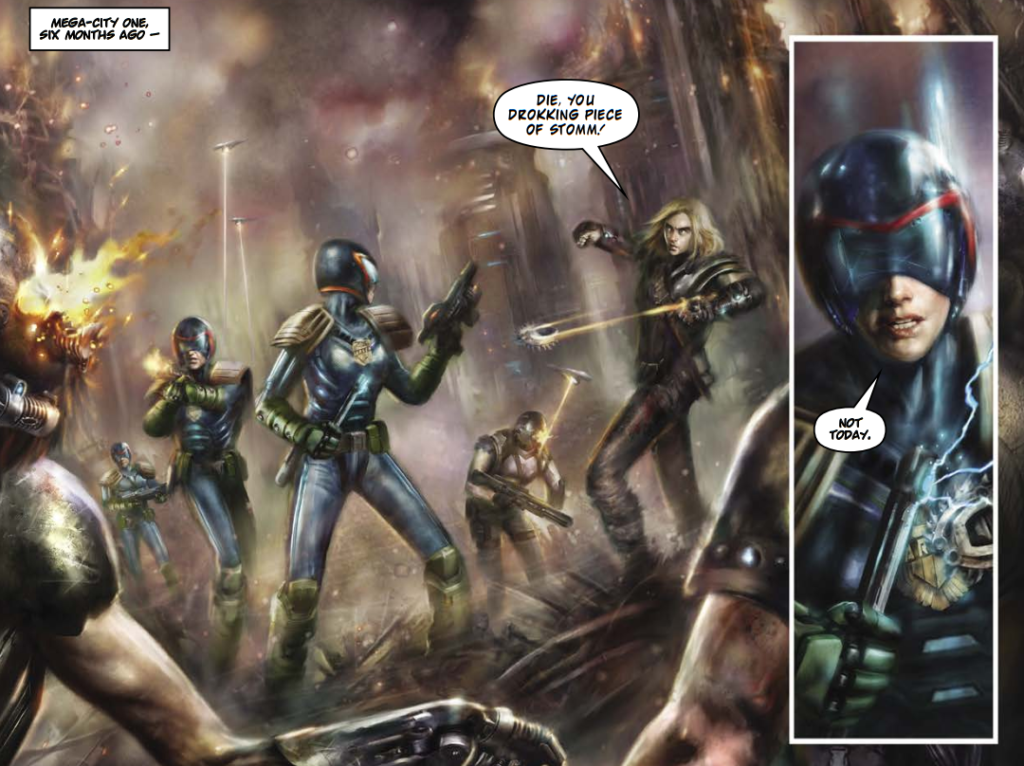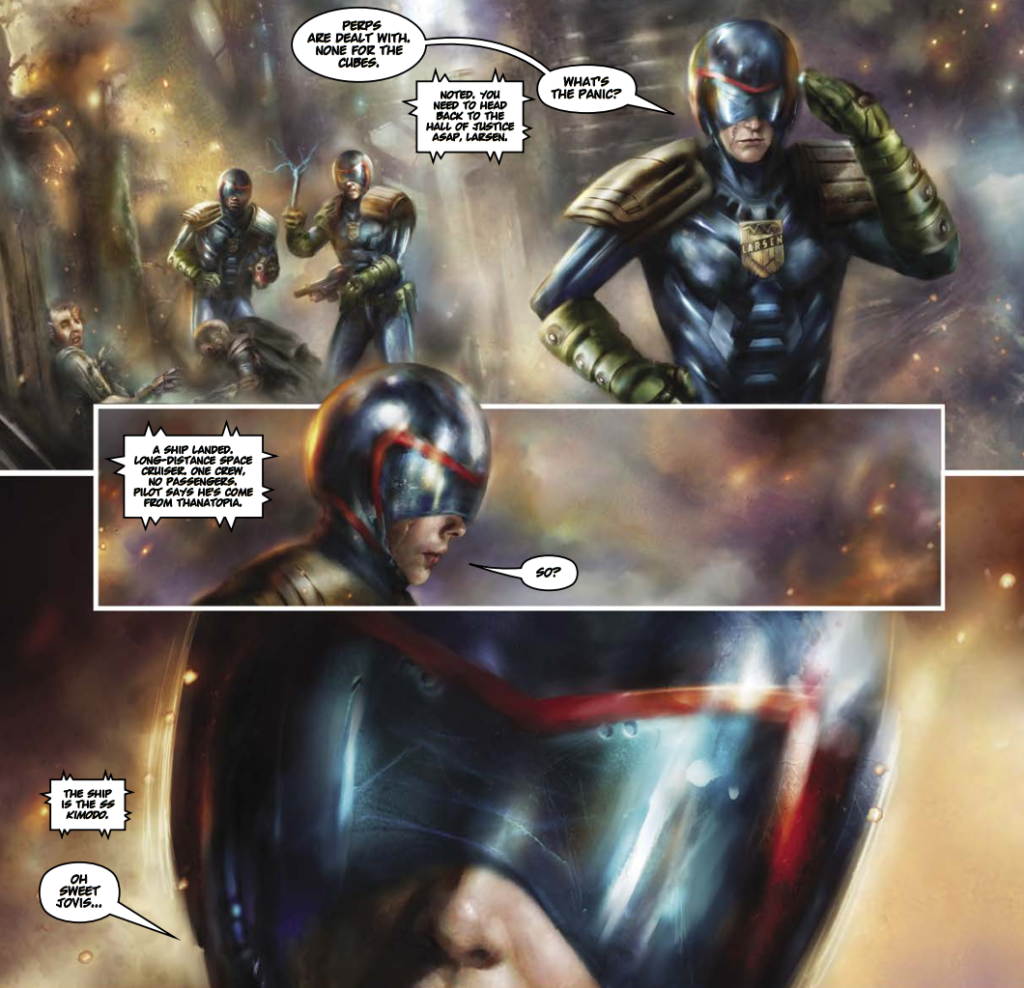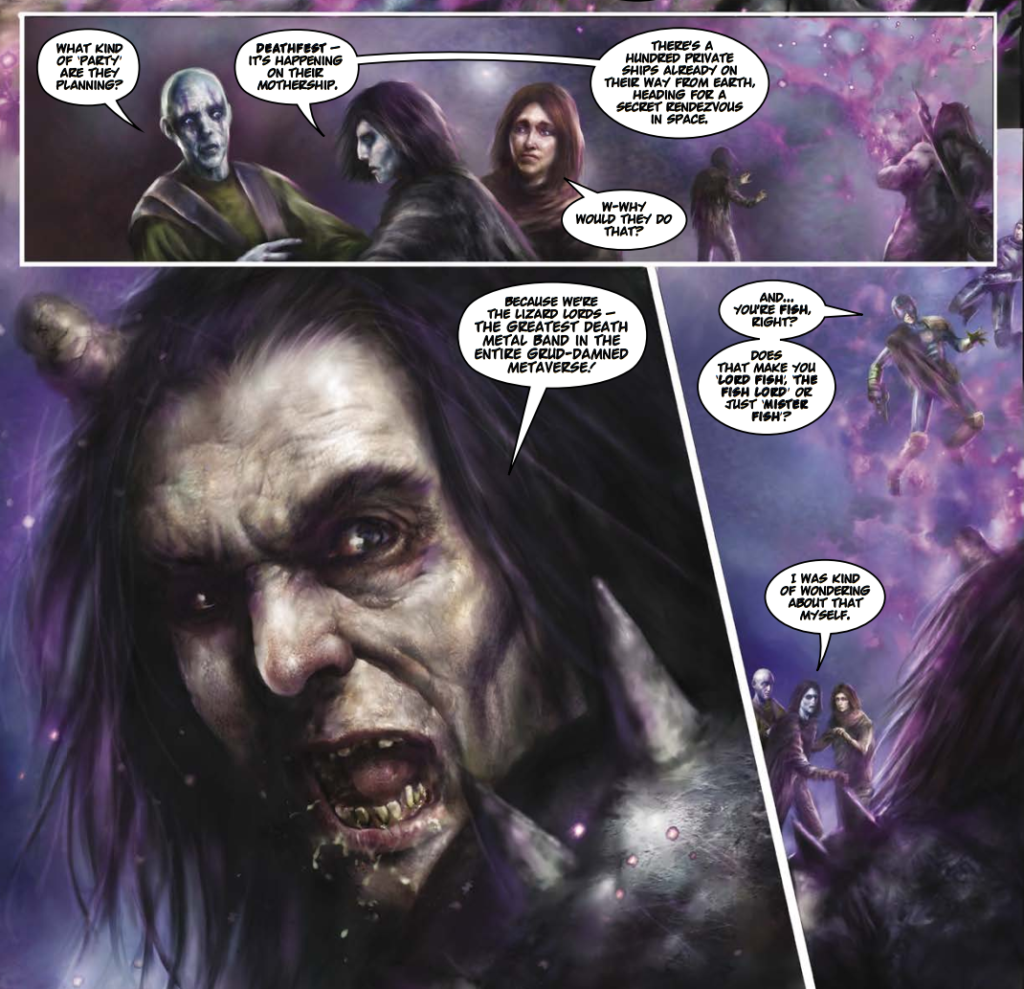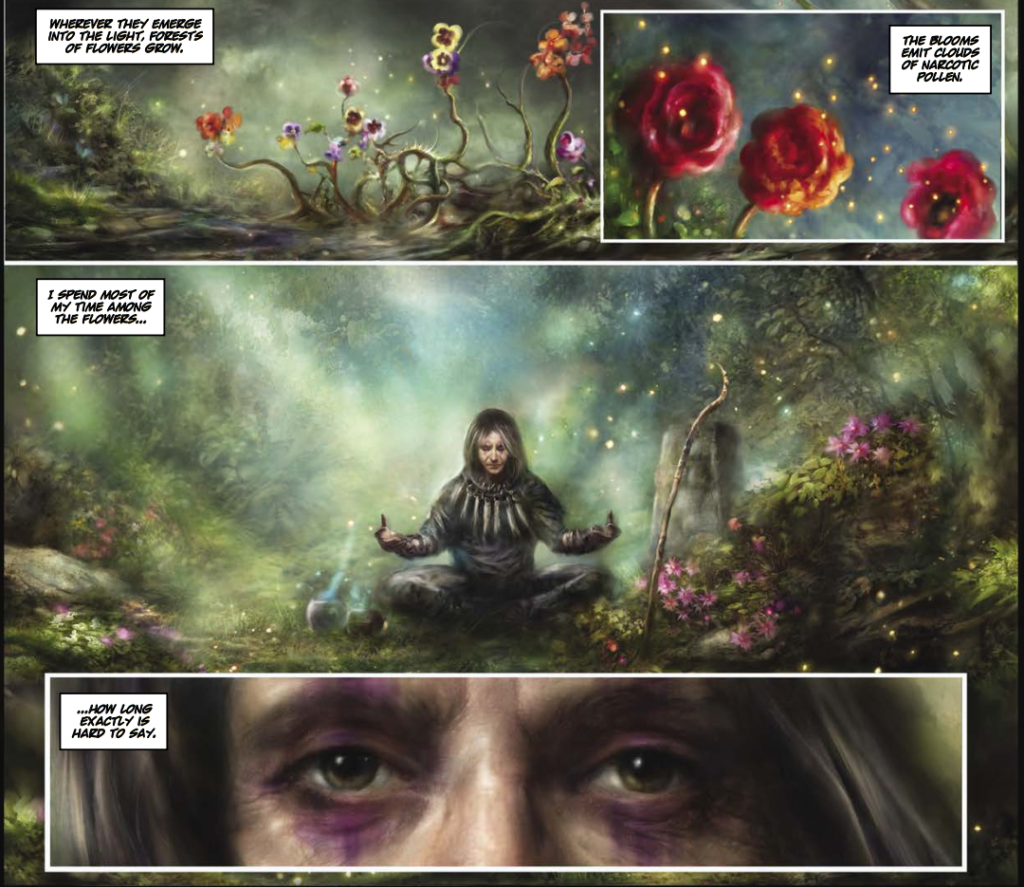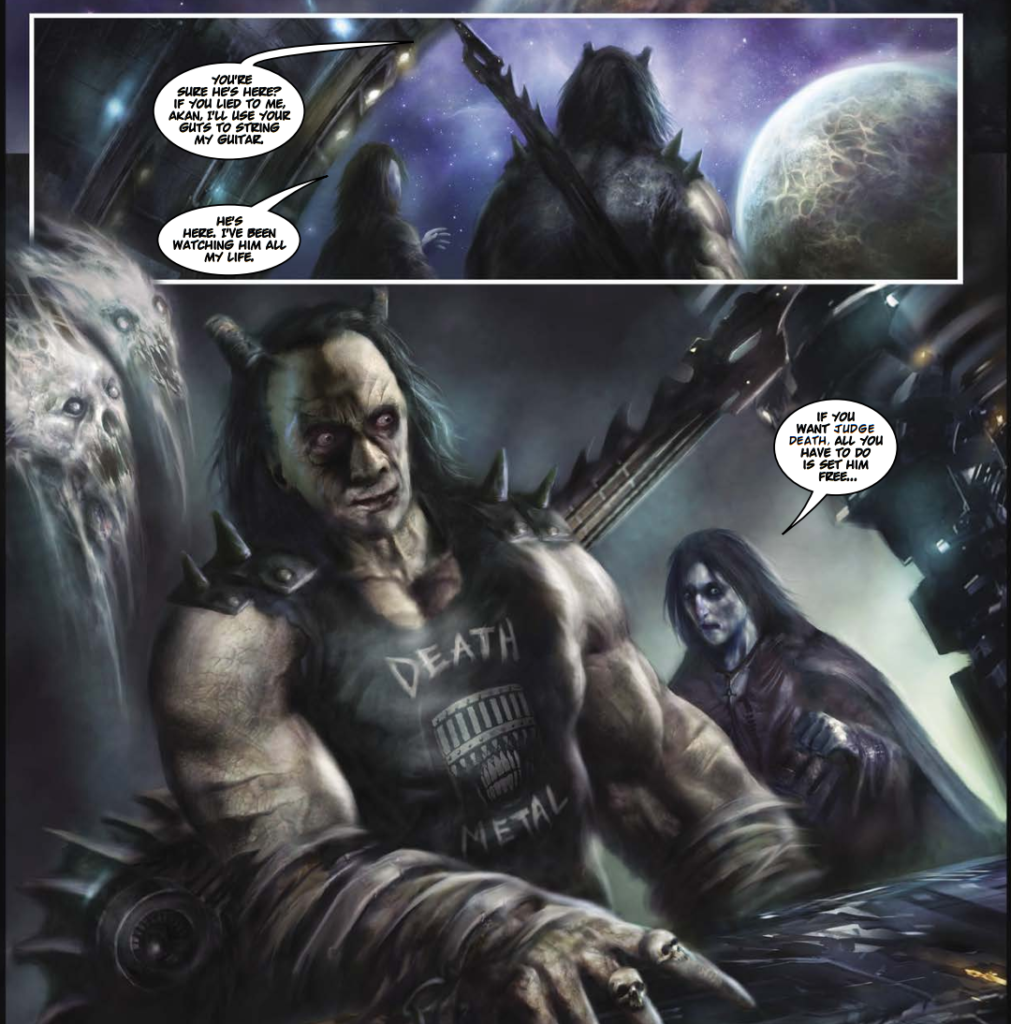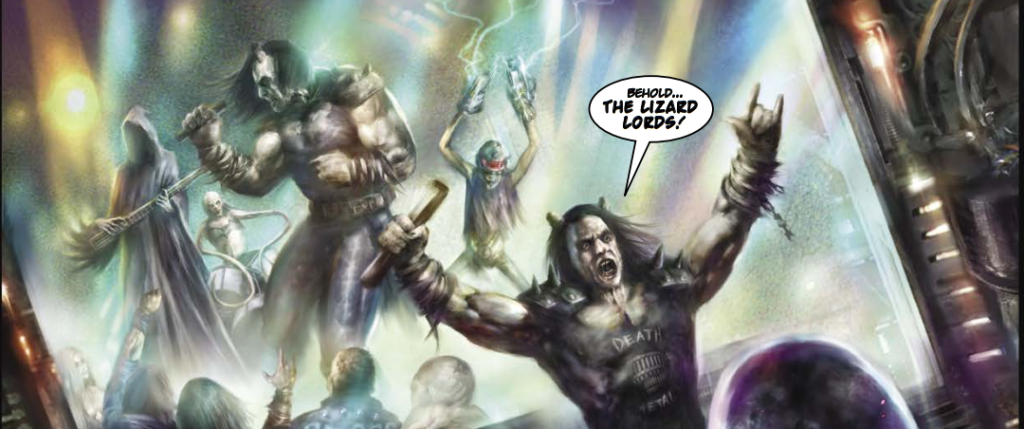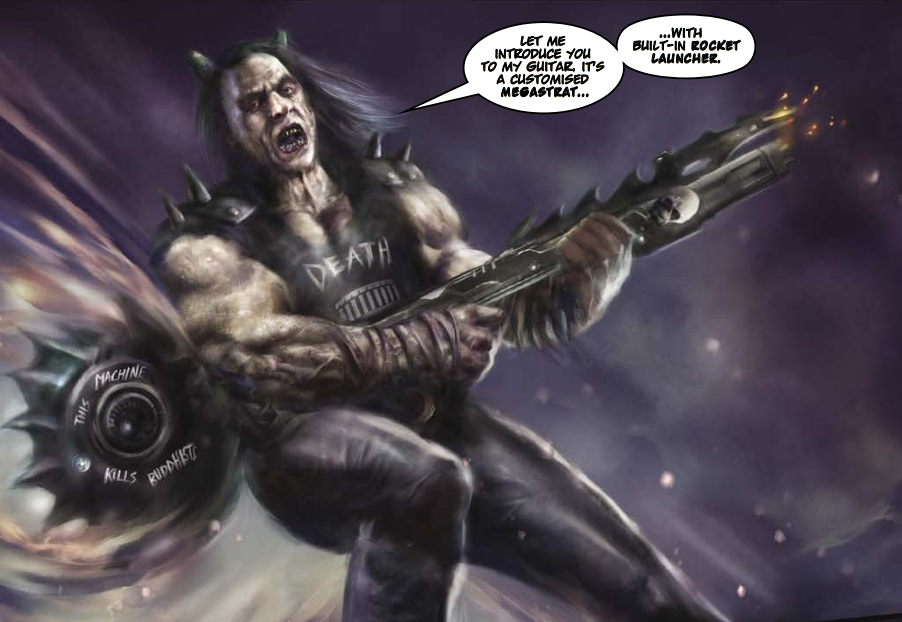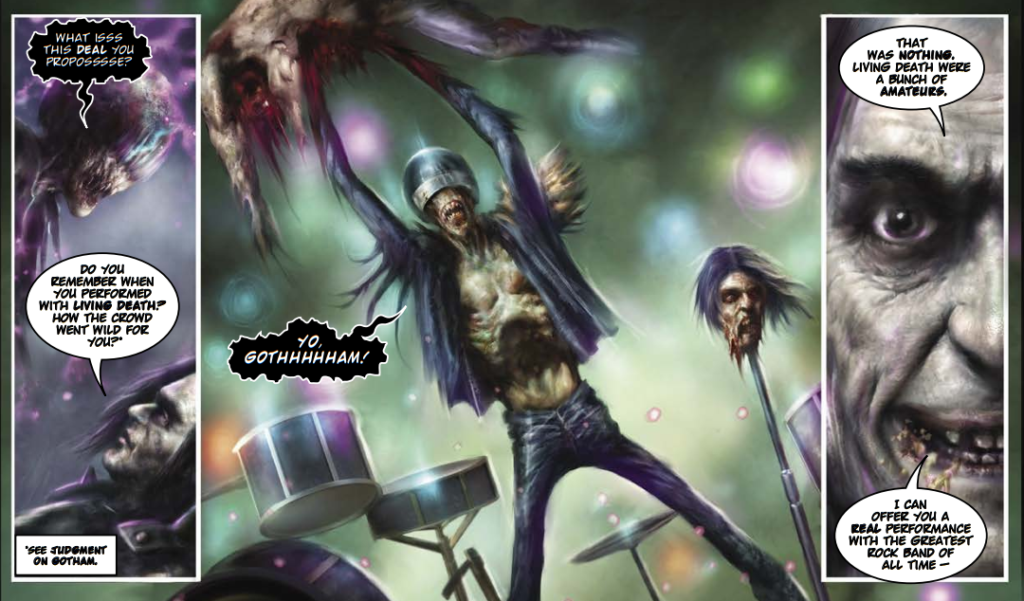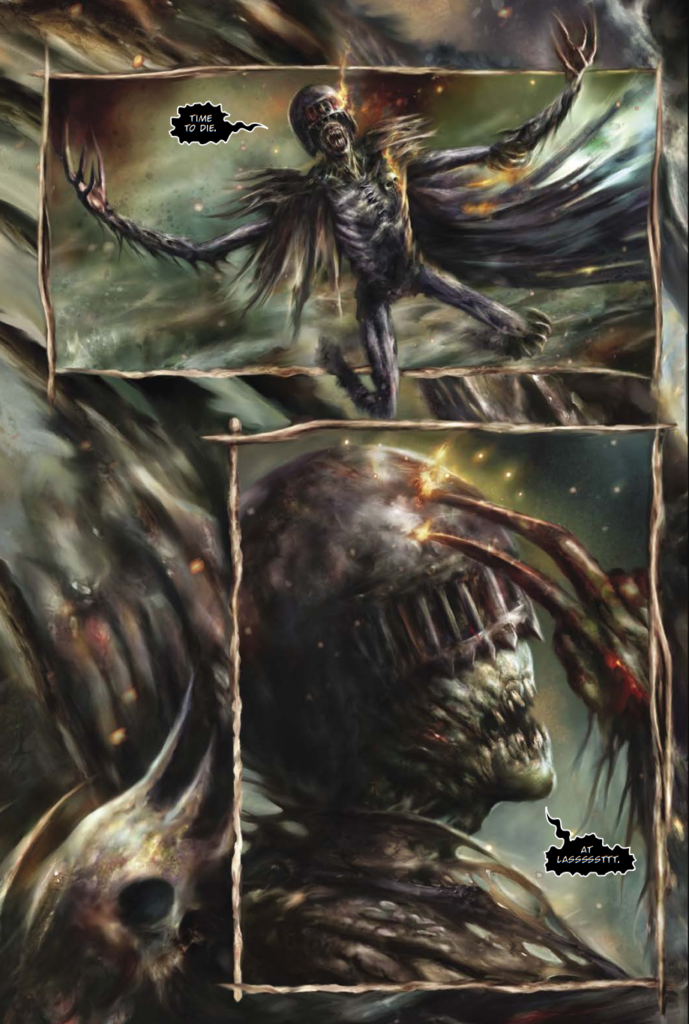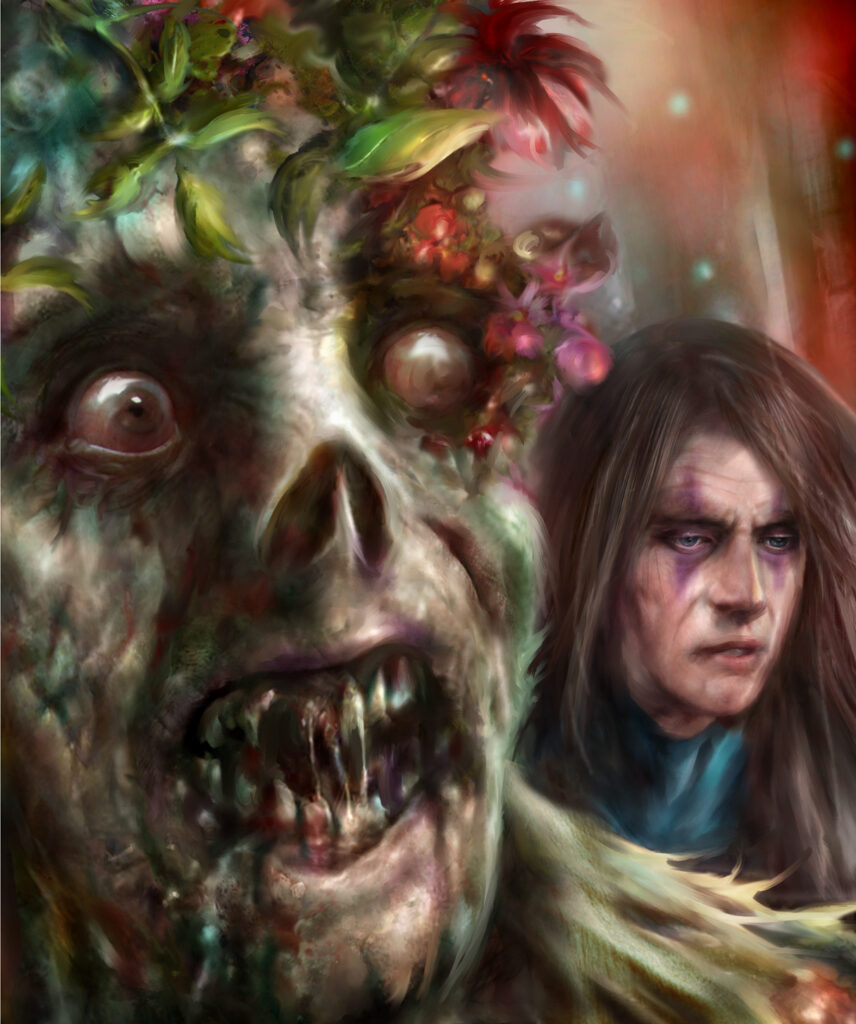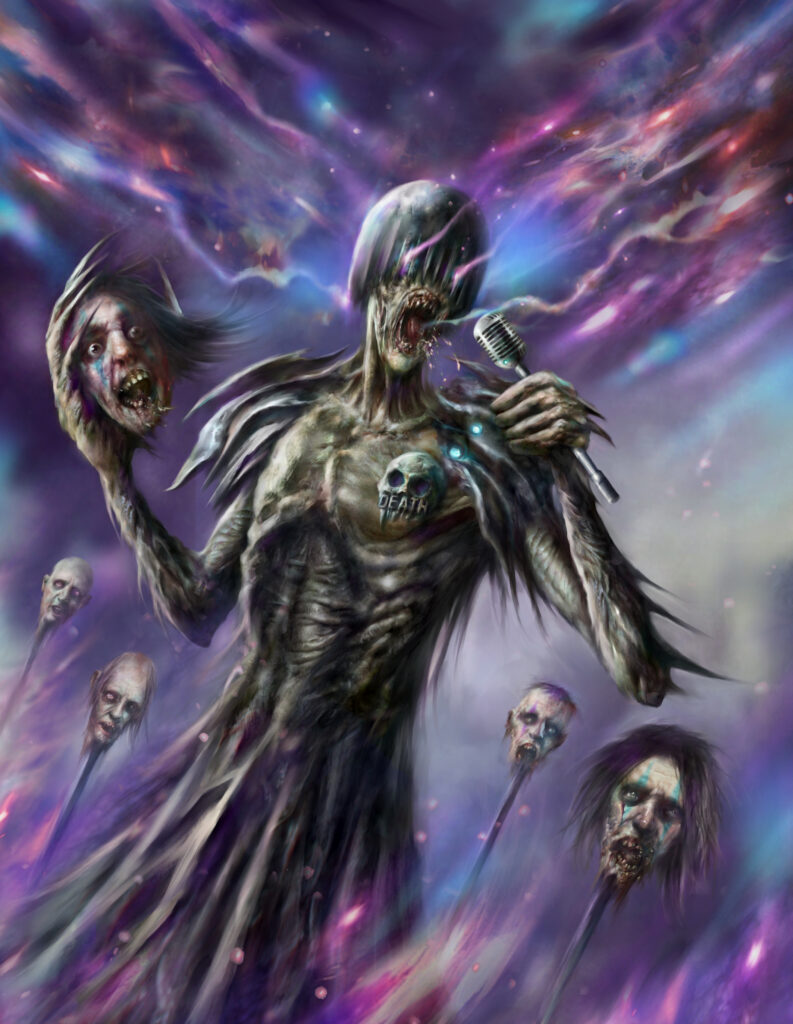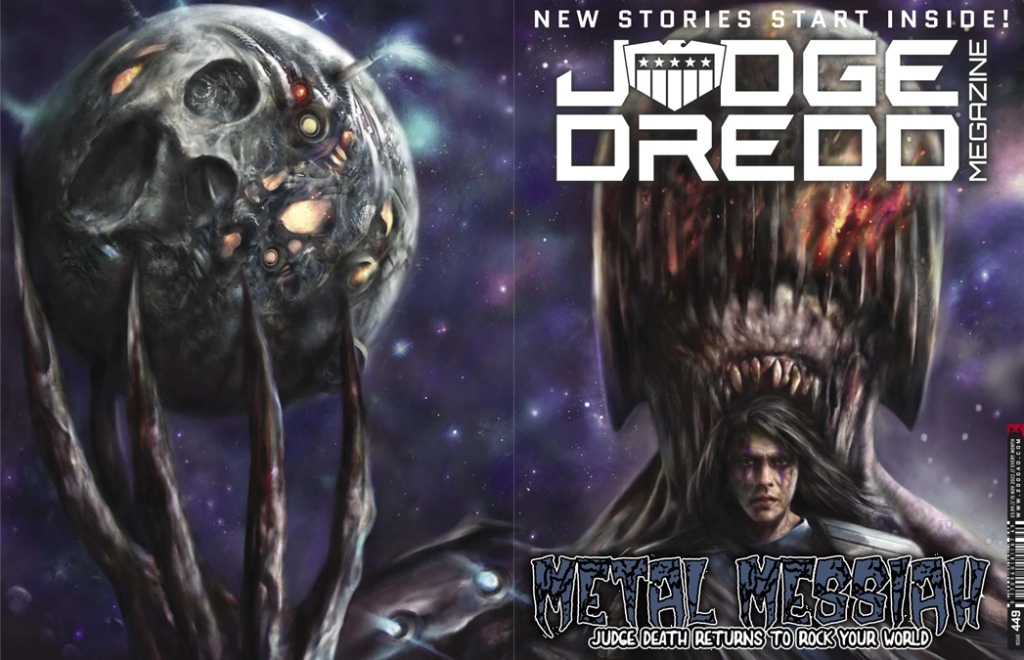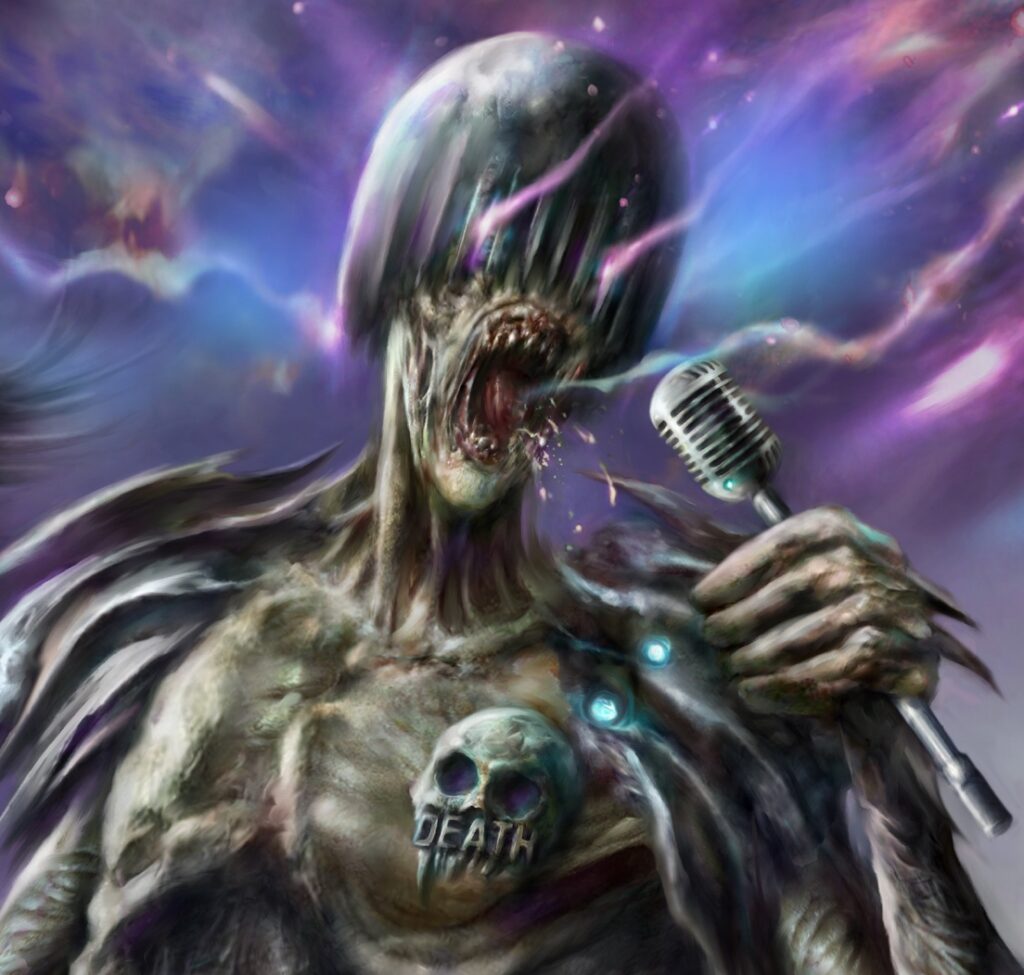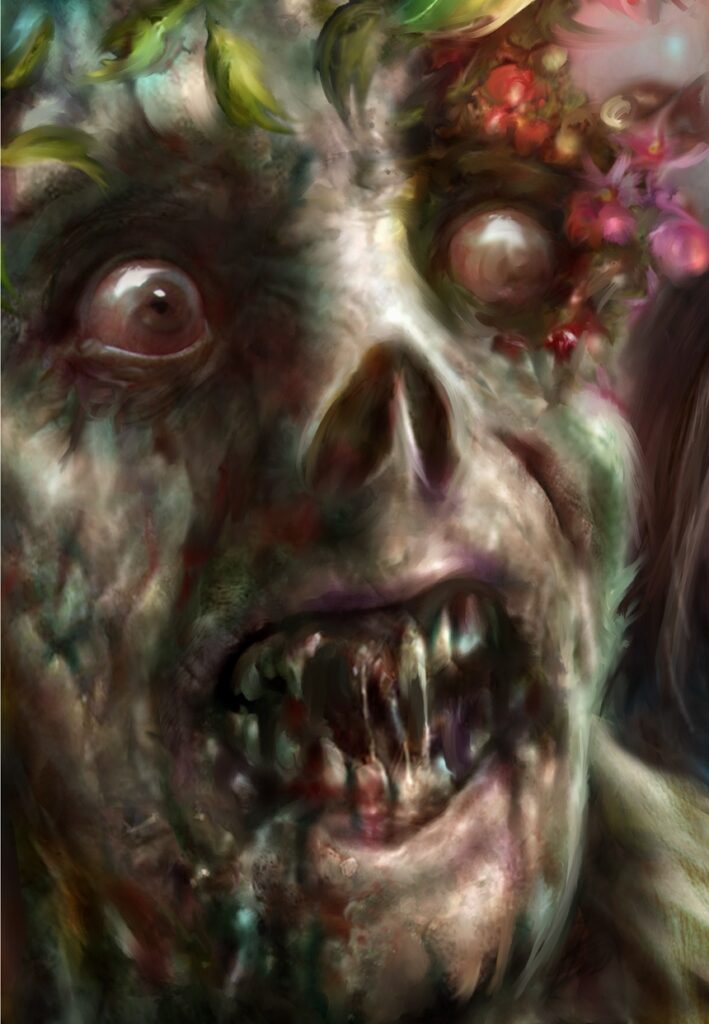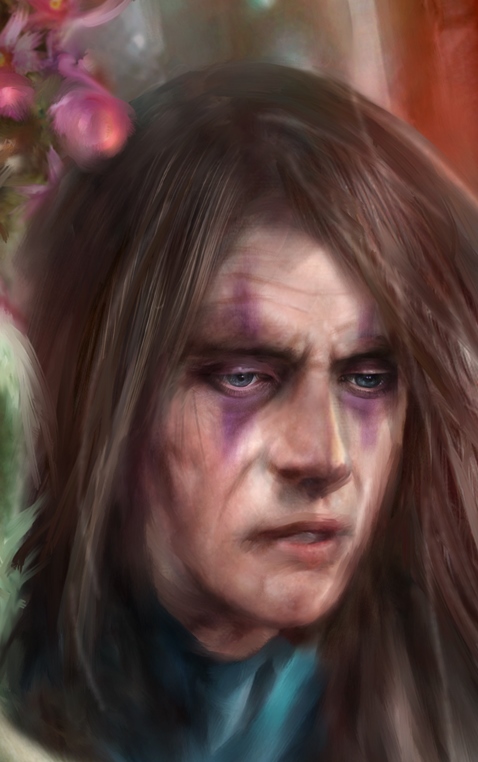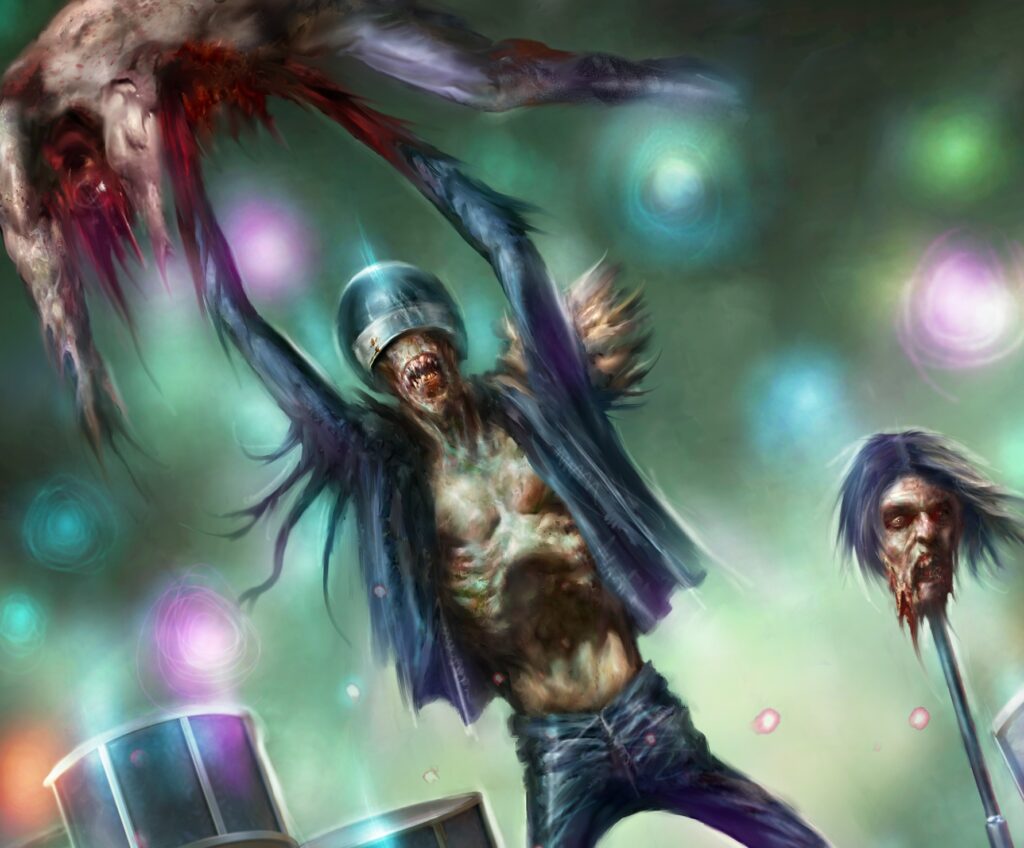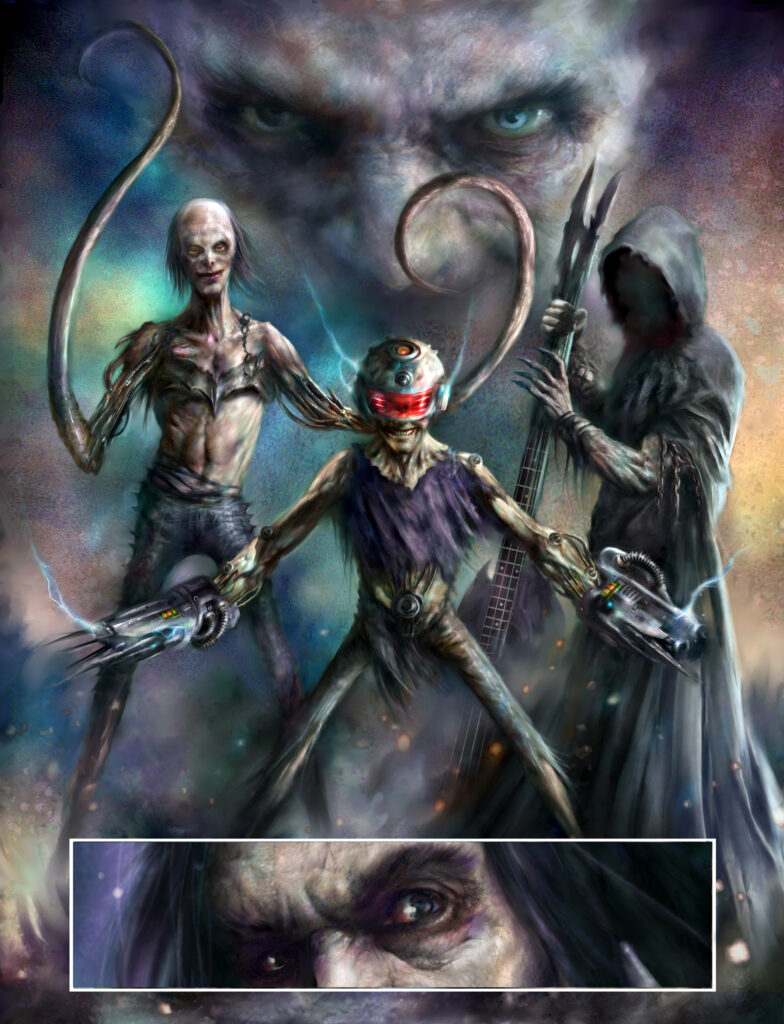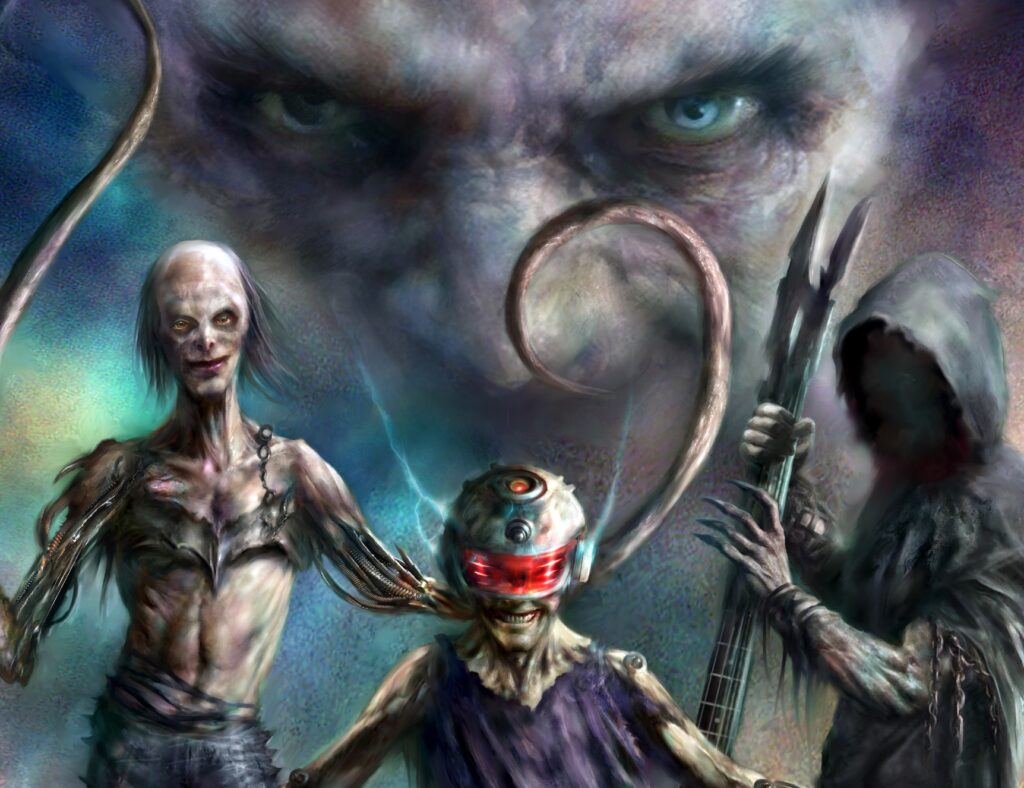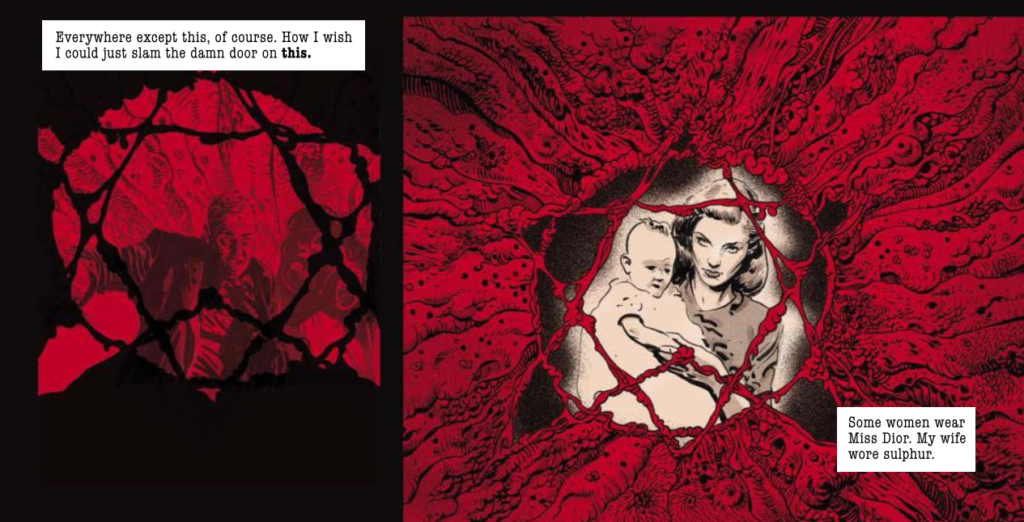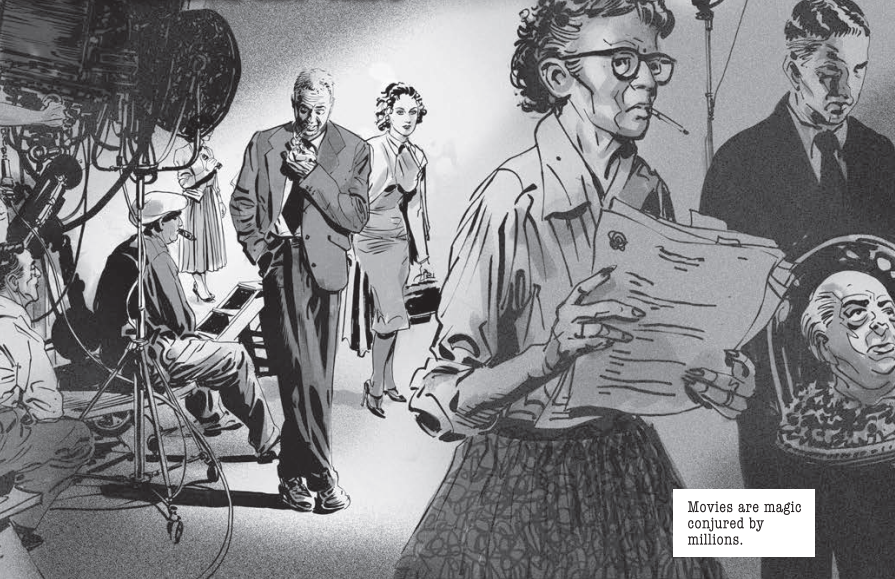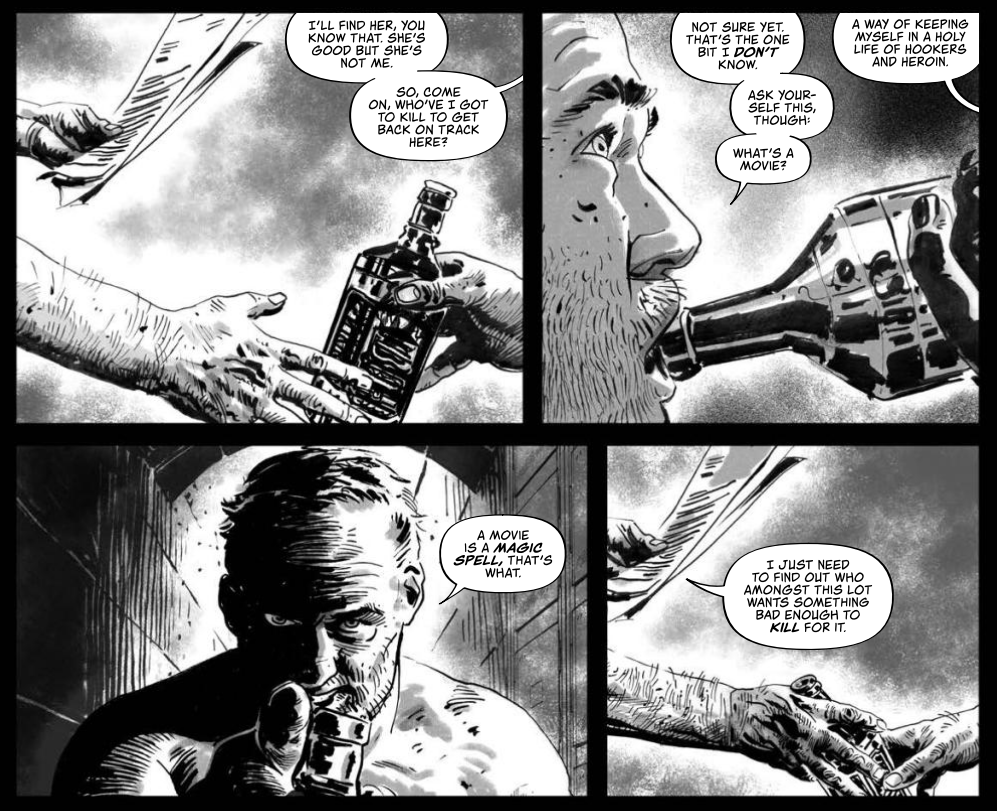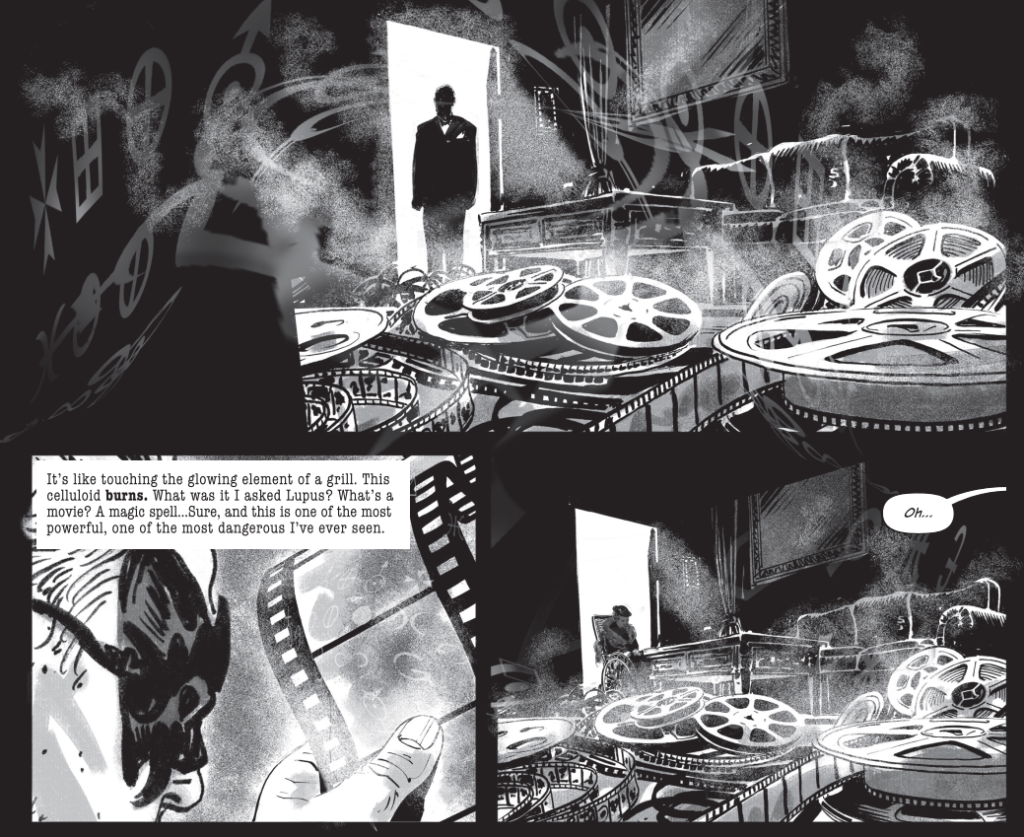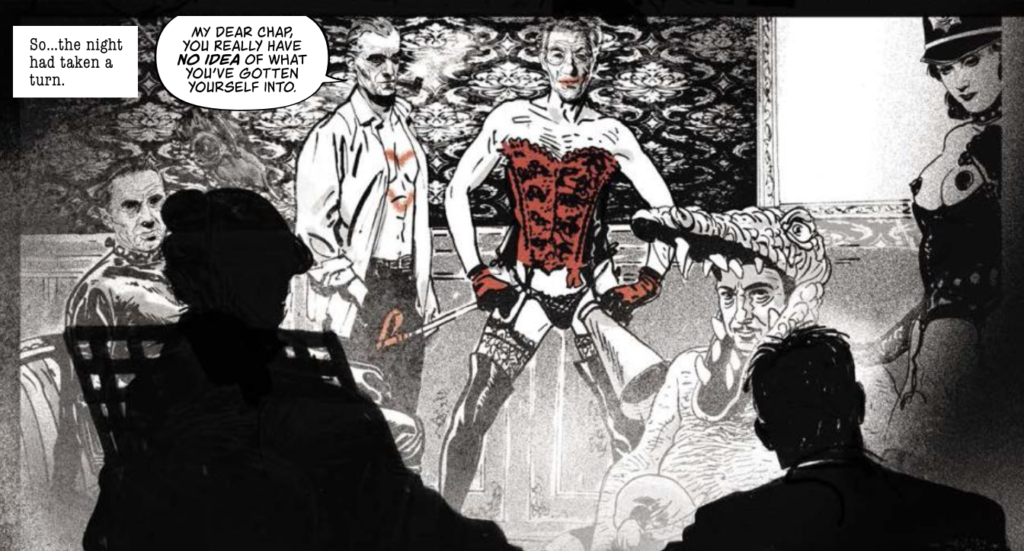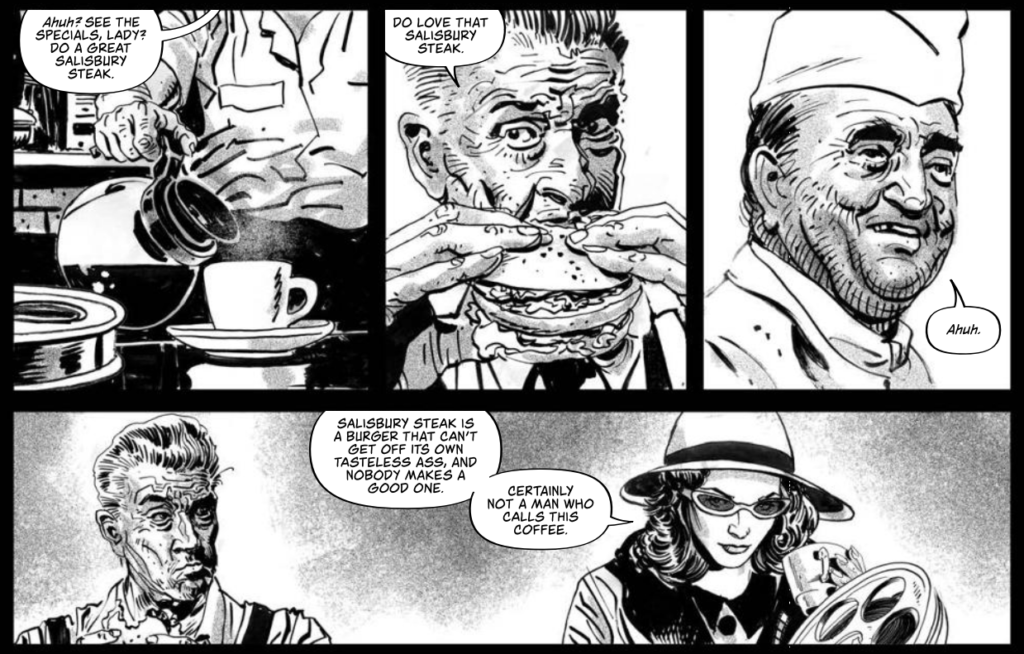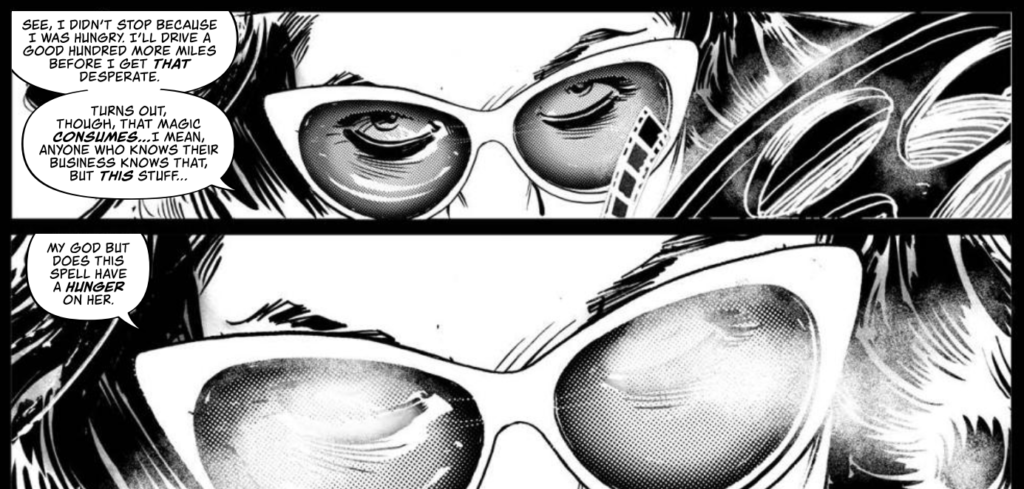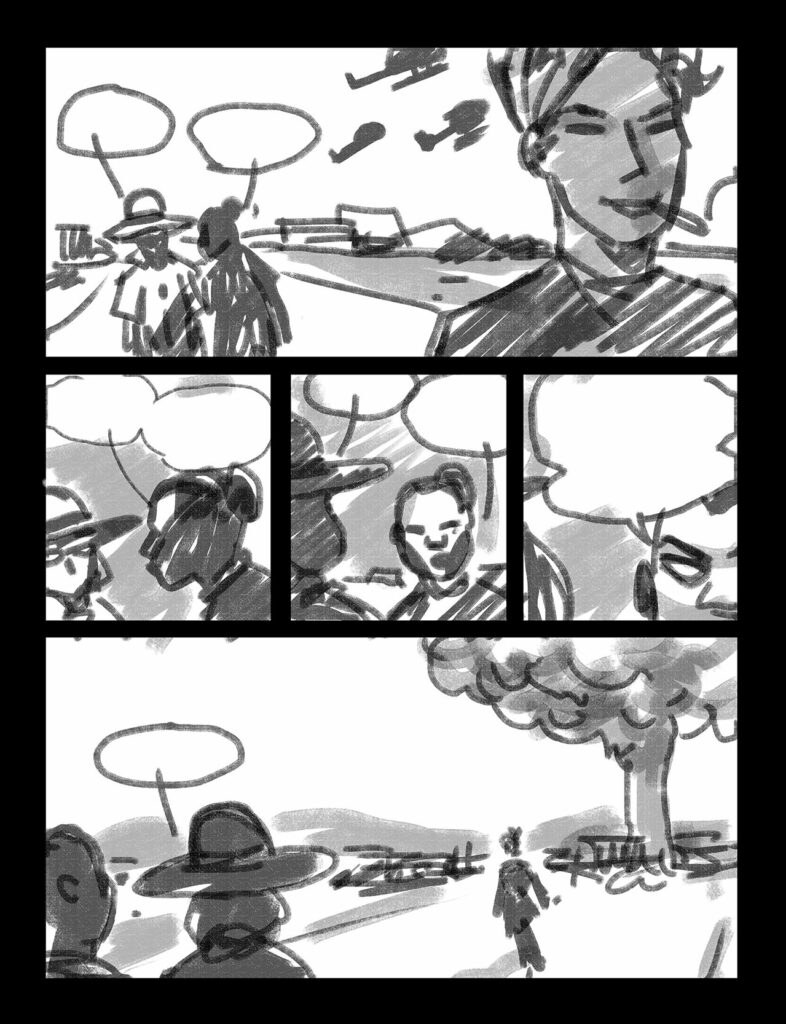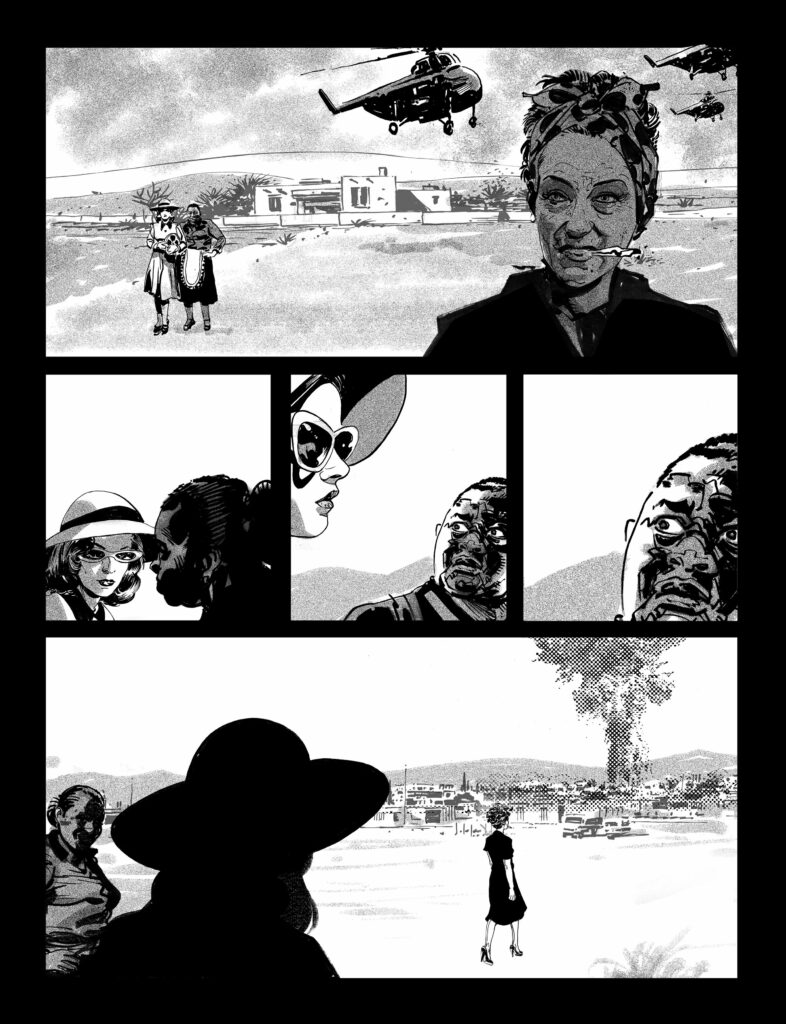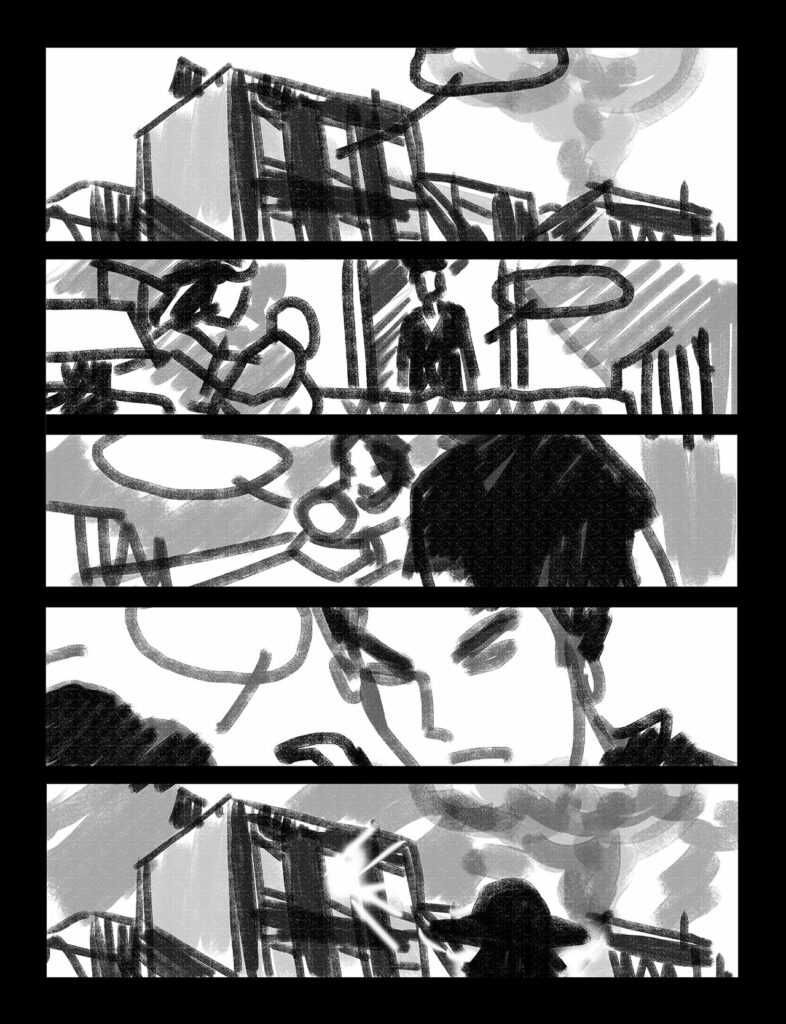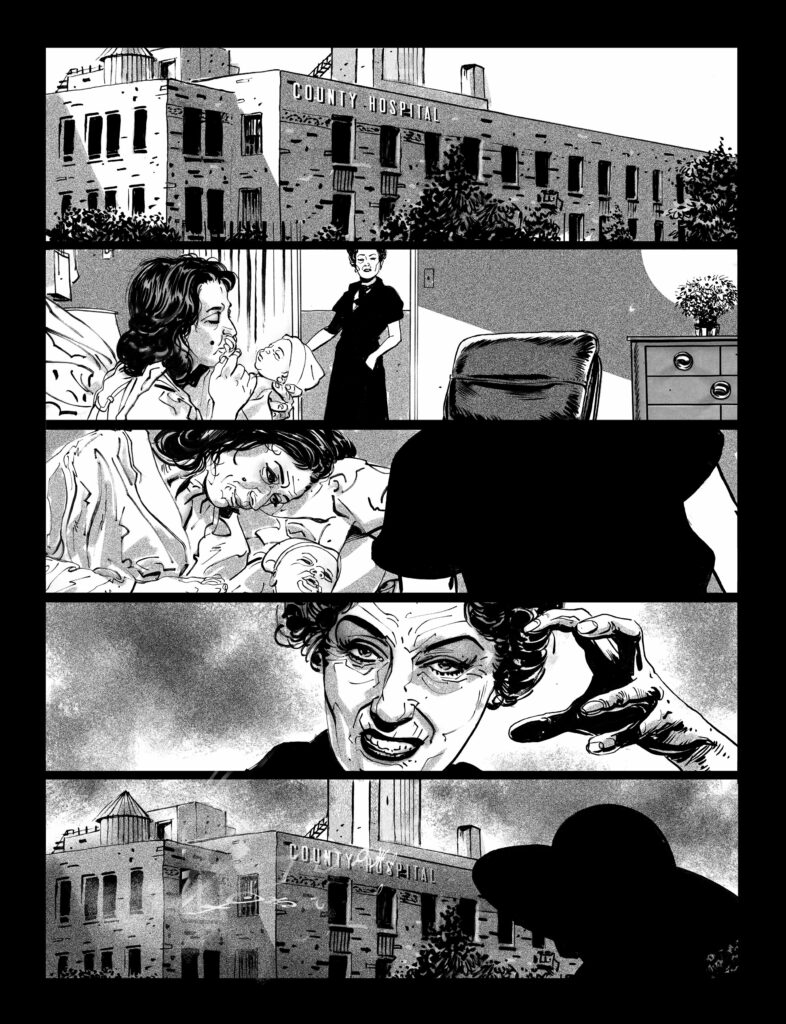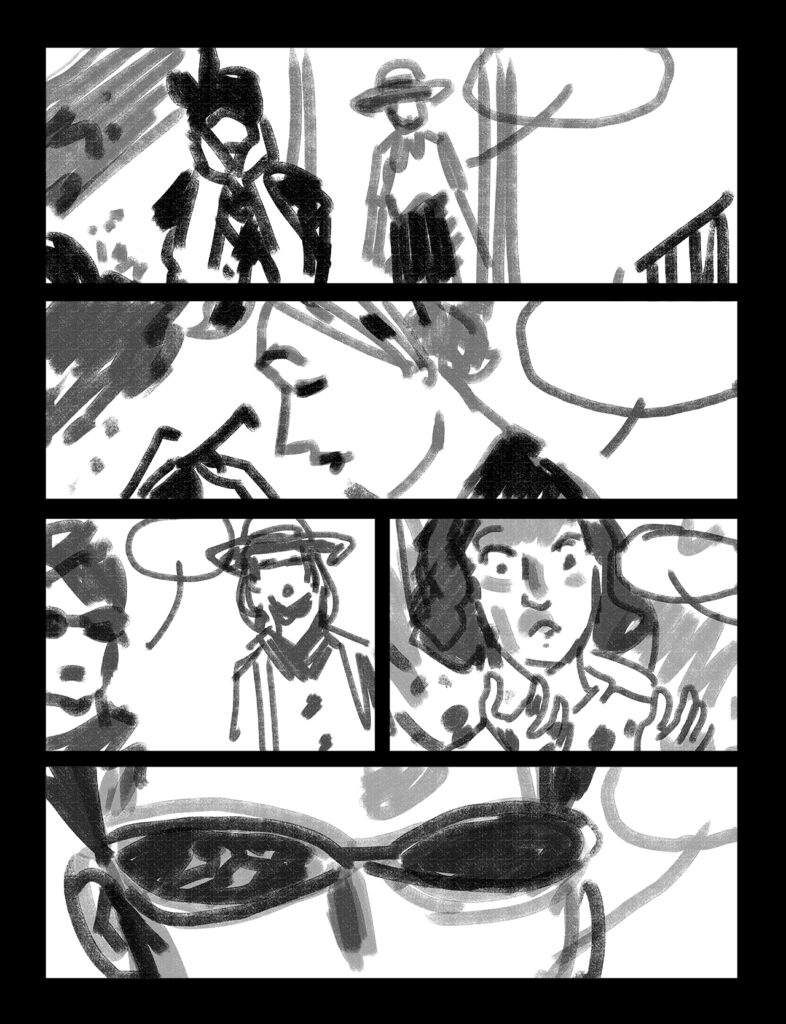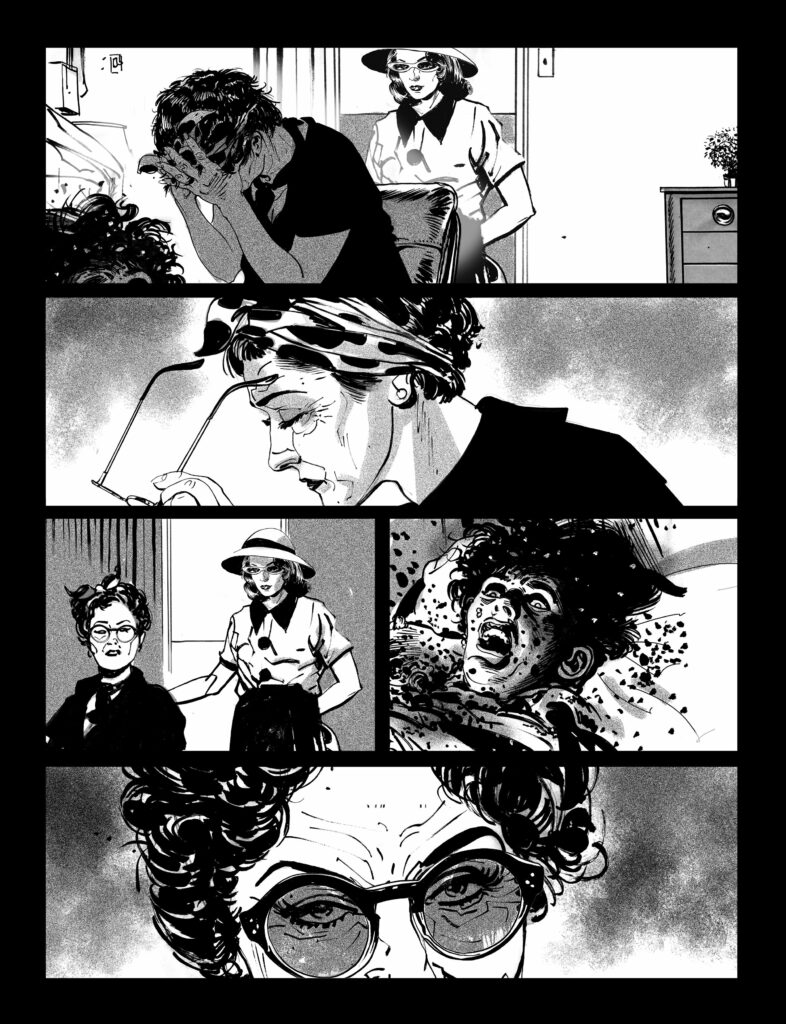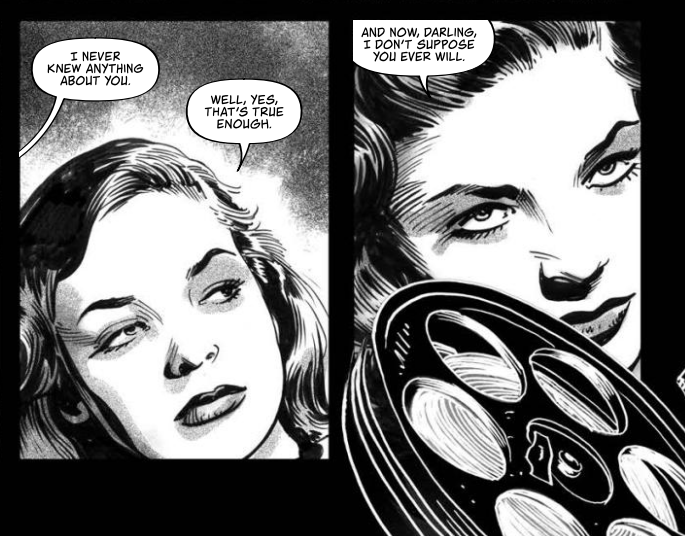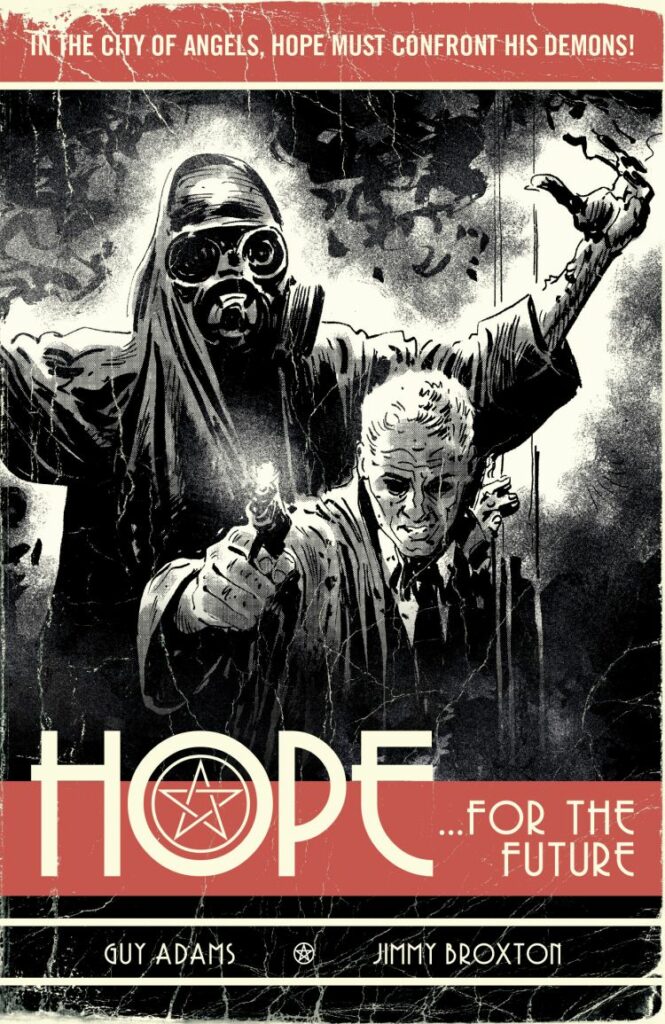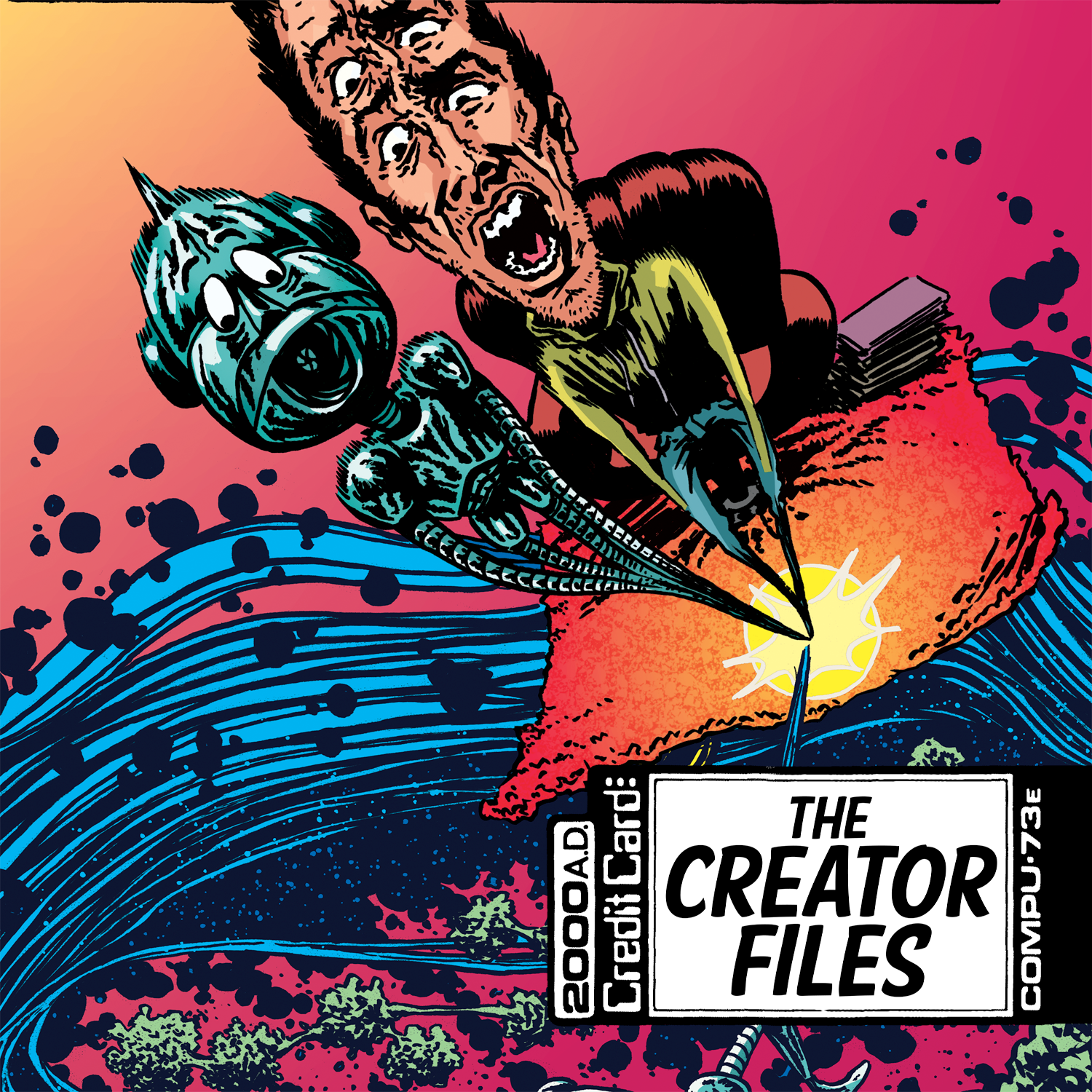
2000 AD brings you the galaxy’s greatest stories and art in thrill-powered tales every single week – but who are the droids behind these tales? Well, each month, we’ll sit down with one of the creators who’ve been responsible for keeping the thrill-power set to maximum to get those answers – this is 2000 AD Creator Files!
We’ll tell you more about the artists and writers who keep the Prog and the Judge Dredd Megazine a Thrill-full read! For over 45 years, 2000 AD has been bringing you the best new talent out there and we start off on one of the newer names you’ll have seen in the Prog recently…
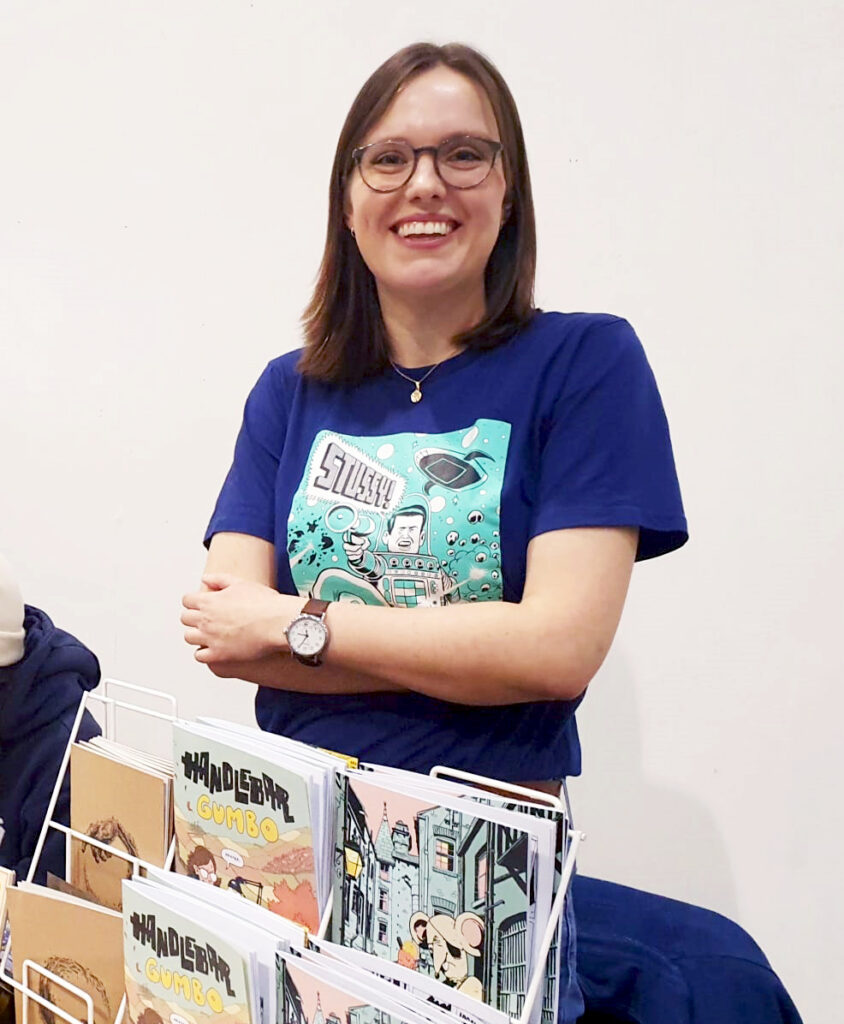
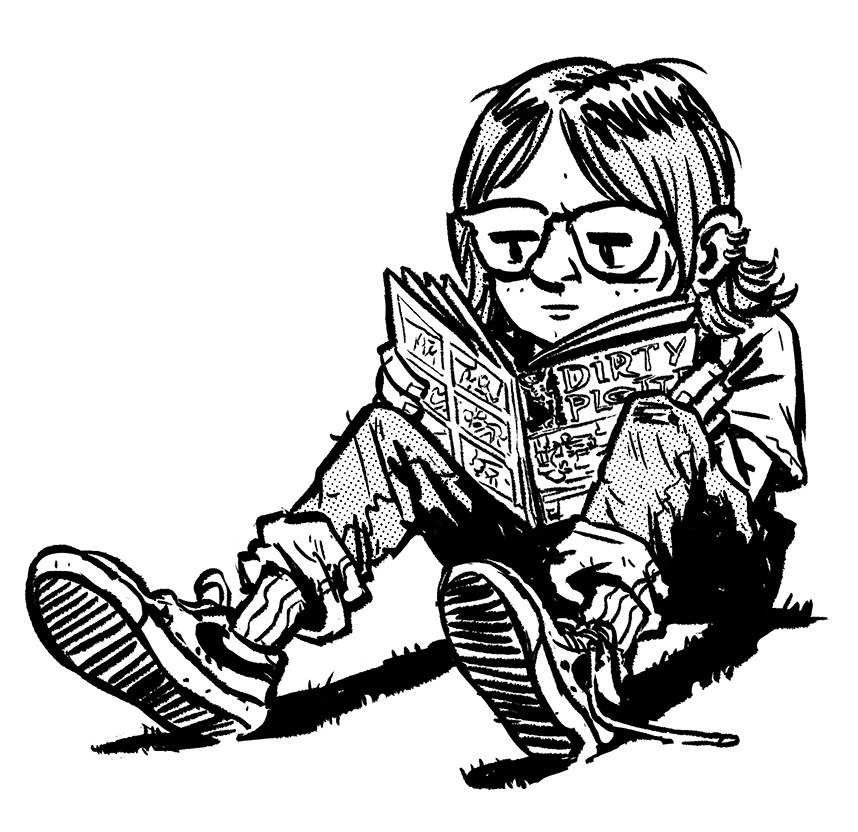
.
So, for the first of these Pro-Files, we’re talking to Anna Readman, the absolute epitome of keeping it fresh and new. Anna graduated Uni in 2020 and has already seen three of her strips in the Prog.
The first we saw of Anna here in 2000 AD was her artwork on the surprise return of Abelard Snazz in The Only Way Is Up in 2000 AD Regened Prog 2206 back in 2020. She burst into the pages with some fine style, repeated in Prog 2316 with Terror Tales: Half Life, and finished off with a strip she co-created with Paul Starkey, Renk, in Regened Prog 2022.
So, let’s talk to her for the debut Pro-Files…
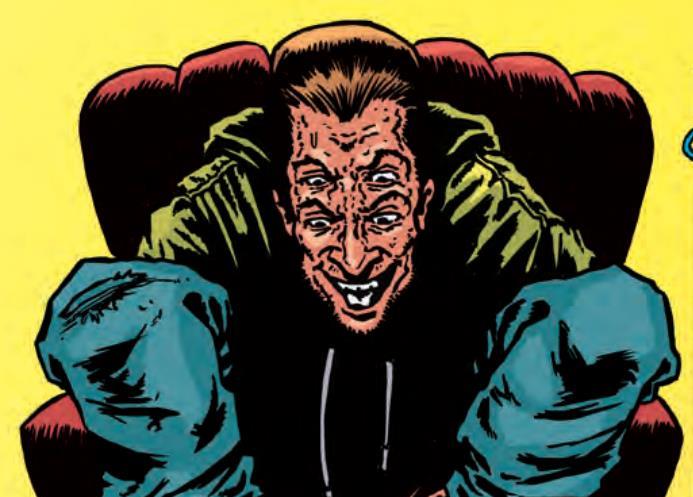
Anna, here we go then, the first of these profile pieces we’ve done for 2000 AD! Anna, let’s start off with a little history – where do you hail from?
ANNA READMAN: I grew up in a sleepy town near Brighton called Lewes, which is mainly known for its outrageous Bonfire Night shenanigans and the local brewery, Harvey’s.
Did you have an interest in art and/or comics from a young age and how did you first get into comics as a reader – was it as a young child or later on?
AR: My Dad is Canadian and grew up reading comics and watching the 60s Batman TV show, so we used to watch reruns together and he would buy me Batman or Flash comics as a treat. Batman: The Animated Series was also the best thing on TV at the time, so obviously I became a huge a bat fan from a young age.
So many comics readers have parents, brothers, sisters to thank for getting them into comics. And yes, that Batman: The Animated Series really was fabulous. Have you ever seen the Batman: TAS comics that came out around the same time? All that fabulous Mike Parobeck artwork – it’s perhaps my favourite ever Batman series.
AR: I haven’t, but I’ll be sure to look it up and see if I can get my hands on them!
Was there any flirting with 2000 AD at that age or might that have come later on?
AR: I didn’t realise that 2000 AD was still being published at that age! I only had access to the old Judge Dredd Case Files at the local library and most of that went way over my head.
So, your dad got you into comics, particularly Batman. But where were you getting your comics reading from at this point? Was it parents, local library, or did you find them for yourself?
AR: It started with spending my pocket money on Batman Panini comics at the corner shop and ravaging the very small graphic novel section at the local library, before graduating to a pull list at Dave’s Comics in Brighton when I was old enough to catch the bus by myself to the city.
Dave’s Comics, one of the finest comic shops in Britain. An excellent place to have on your doorstep!
And at this stage was it just reading comics or was it reading and making comics?
AR: Reading and making. I still have tons of my old handmade and badly stapled comics back at my parents. I think my favourite is a LotR rip-off called Elf and an epic adventure comic called Bubble Boy.
And here, thanks to Anna, is some of that Bubble Boy comic, along with more of her comics from her childhood.
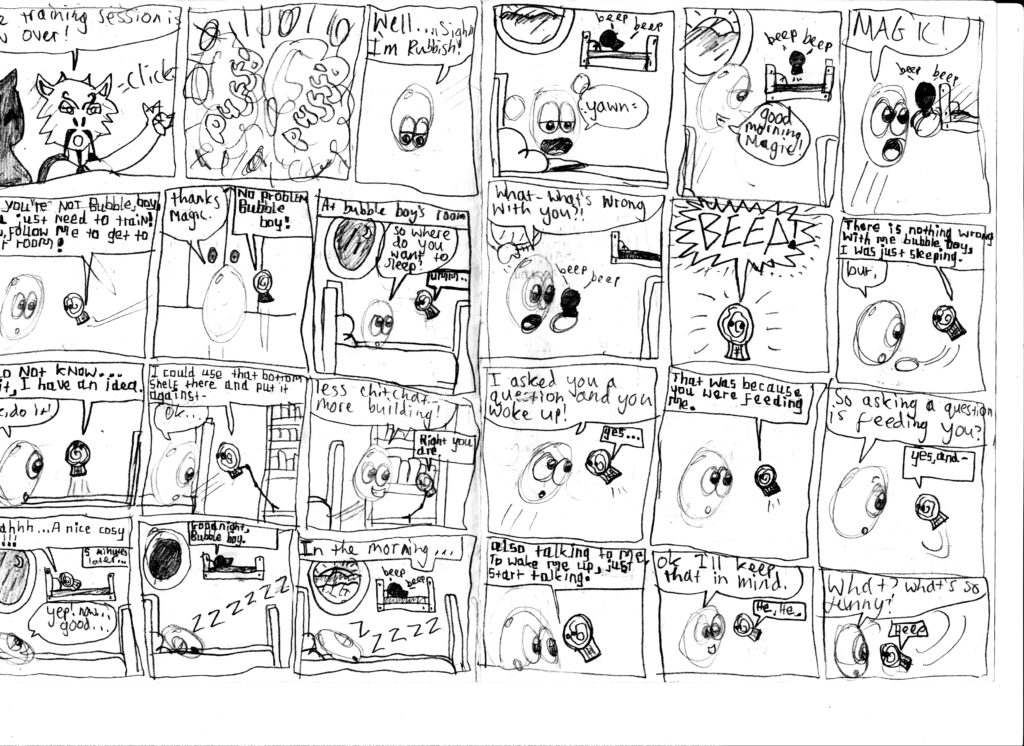
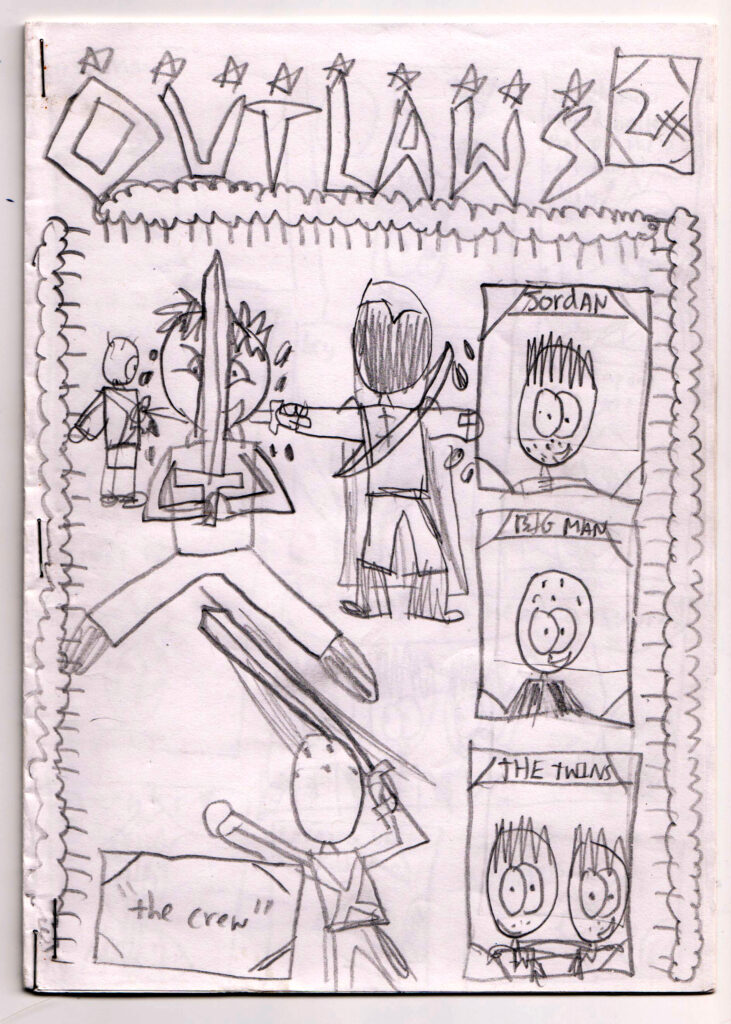
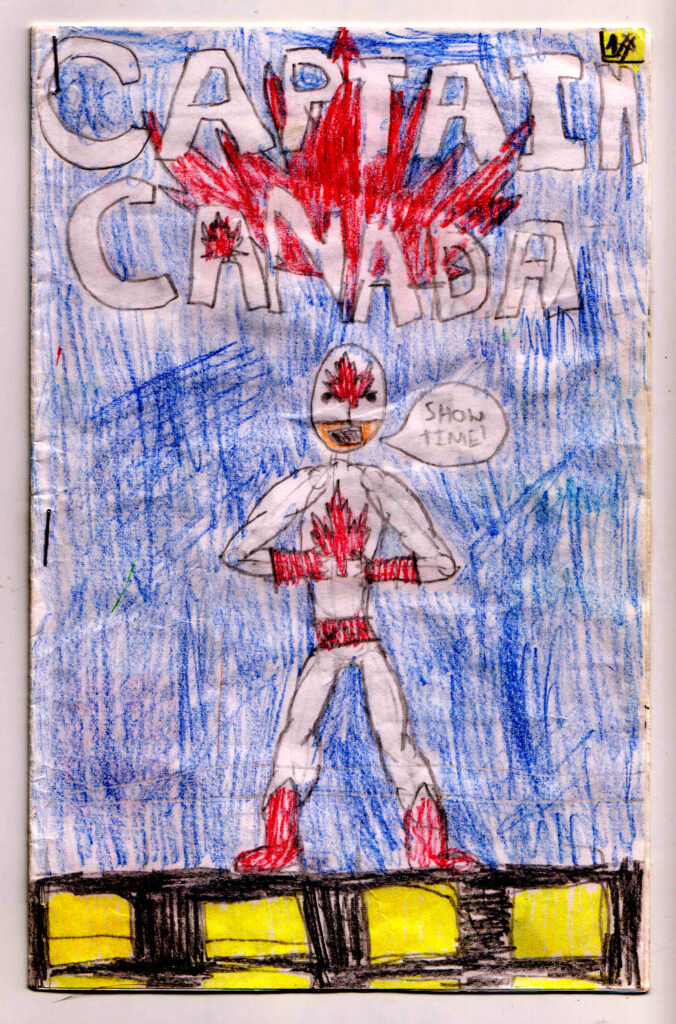
– a nod to dad, who first got her into comics
.
I read that you were part of a secondary school comics club at some point that was run by Daniel Bell, one of those aforementioned small/self-publishers.
So from secondary school you were aware and reading a selection of self-published and small press works? What other comics were you into at this point?
AR: Dan introduced me to so many good comics like Runaways and Teen Titans (kid-friendly-ish comics, I was only eleven!) But what Dan did the most was teach me how to actually make and format comics. We would put out an annual comic anthology with the club members each doing a story (it wasn’t a popular club, maybe only 2 or 3 people) and Dan would do all the photocopying and pagination. Really showed me that anyone can make comics, which started my love of small press.
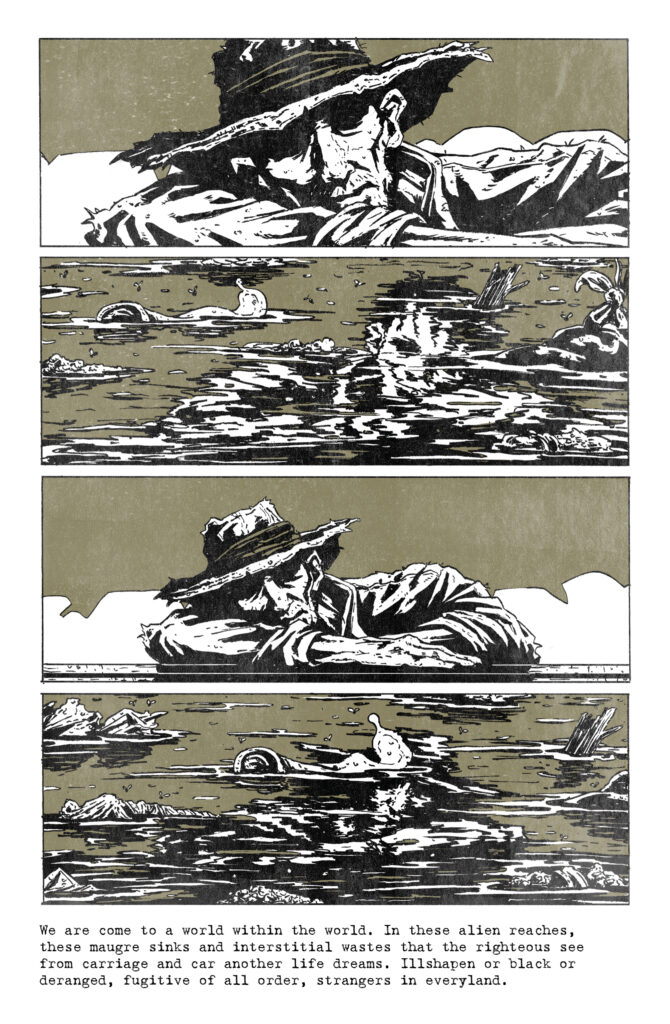
This page from her adaptation of Suttree
After school, you went on to study Illustration at Leeds Art University but were already making your own comics at that point, some of them as part of your Uni projects.
The first of your comics that garnered any attention was the Cormac McCarthy adaptation, Strangers in Everyland. That was a University project wasn’t it? How did that come about and what was the thinking behind choosing that particular author to adapt?
AR: It was a university brief to create a body of work inspired by a given author. We could pick the author from a list of names and Cormac McCarthy stood out as I had seen No Country For Old Men and loved it, so I picked him. Over the summer break I read, literally, all his books and researched and devoured all the journals and articles I could find about his work and McCarthy himself. It was a LOT of reading, but I absolutely loved it. Suttree stood out as my favourite, with a lot of passages I thought could lend themselves to be adapted into short comic vignettes, which I did.
When did you finish University? Were you working on other projects during your time there?
AR: I finished in 2020, right in the middle of the first pandemic lockdown. I did my final project on the kitchen table in my boyfriend’s house, which I had hurriedly moved into before the lockdown restrictions came into full effect. Because of the pandemic I never got a proper graduation, but by that time I was sick of Uni anyway and glad to move on to new things.
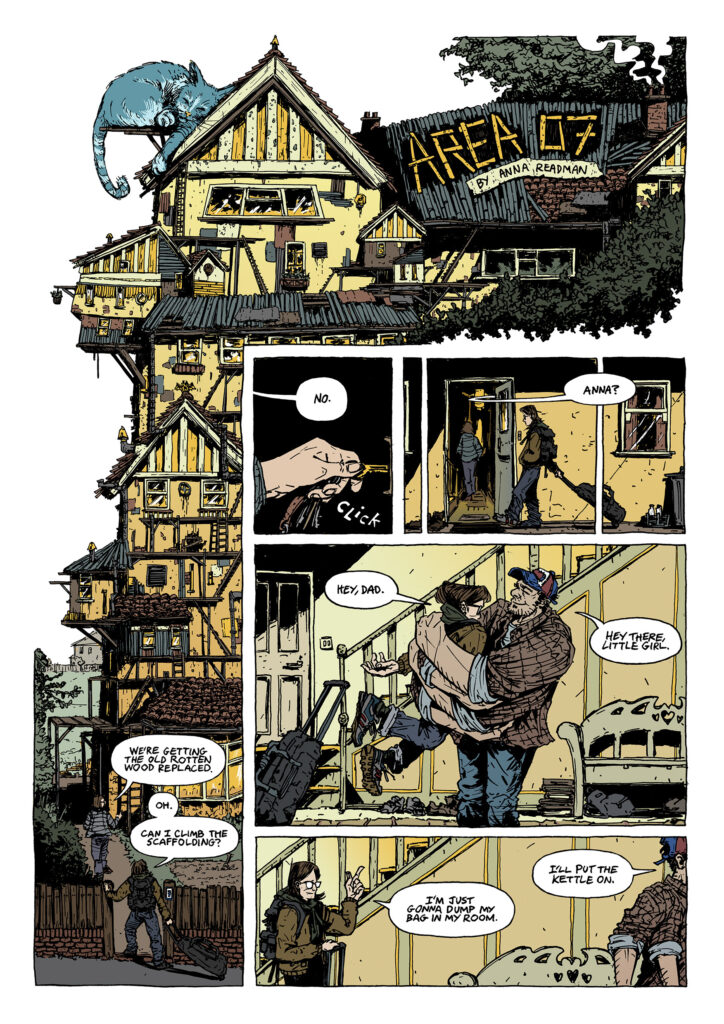
The next project of yours to come out was Area 07 – another University project, a five-page strip that’s available for all to read and enjoy at your website.
It’s semi-autobiographical in as much as it features a character called Anna coming back to her old house and family after having lived away for some time (university in your case), but it takes a dark, strange turn almost immediately, with you playing with a sense of darkness and exaggeration that features quite often in your work.
The way you portray the familiar of family and childhood home is wonderfully grotesque, morphing both family home and family members into something particularly fantastical. You also get to feature your brother as a troll, something that crops up quite a bit in your artwork – both in The Forgotten Trolls and The Lost Loiners. What’s the fascination there?
AR: My grandmother was Swedish, and she told many tales about trolls and creatures from her hometown Ystad, which I’ve visited many times and yes, there are actual trolls that live in the forests there! I have her book on John Bauer, who has always inspired me, and Lost Loiners was me trying to reconcile my Swedish heritage with my new home of Leeds.
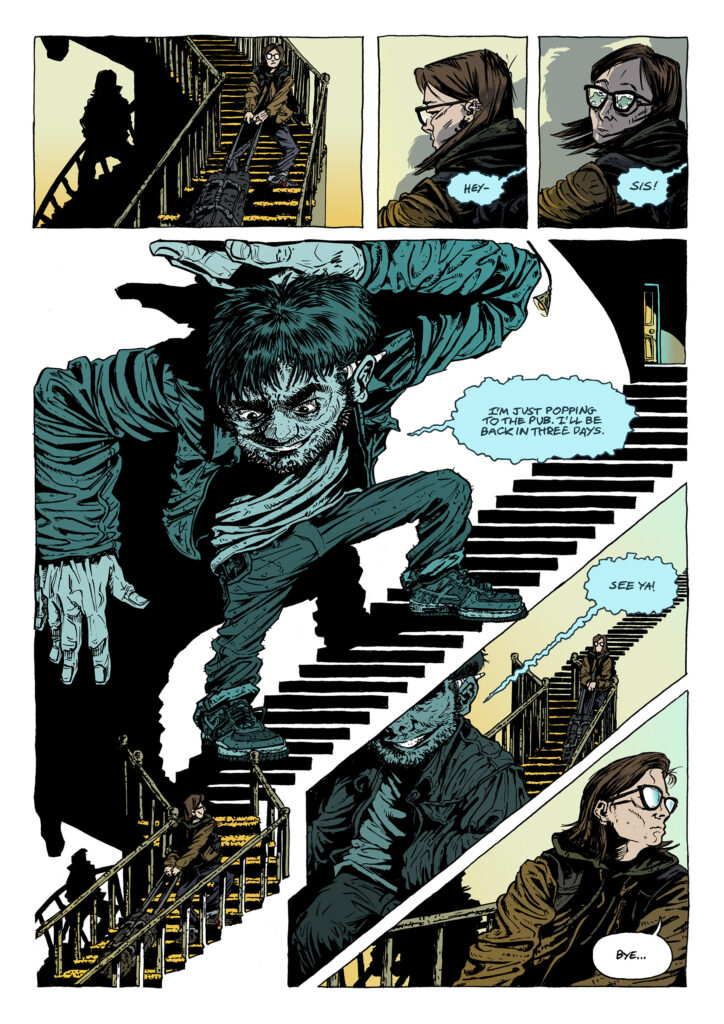
One immediately obvious feature to Area 07 (and one that can be seen in much of your work to date) is the way you use the comics page and panels as integral parts of your storytelling, using shapes, layouts, and flows through the pages that many, much more experienced artists would have perhaps shied away from.
AR: Area 07 was another university project, inspired by the feeling of displacement from being away from home for so long. Everything seems foreign and changed, yet also very much the same. I think comics lend themselves to exploring ineffable emotional states into visuals, making yourself to be understood more than just straight prose or vocalization.
Since then, your career has been a mixture of work for publishers, 2000 AD and Z2 Comics, and your own self-published comics.
The first company gig for you came with 2000 AD and the Regened return of Abelard Snazz in 2000 AD Prog 2206 (Nov 2020) with The Only Way Is Up, written by Paul Cornell.
First of all, how did that first 2000 AD gig come about?
AR: Honestly, I have no idea. Matt just emailed me out of the blue. Broken Frontier had, very generously, done a spotlight on me as ‘One to Watch’ so maybe he saw my work there? Anyway, I was very surprised when I checked my emails that morning.
Yes, Andy Oliver and his team at Broken Frontier are doing excellent work promoting the UK comics scene. Folks can read the ‘One to Watch 2019’ article here, and we’ll get more into the promotion of your work later on.
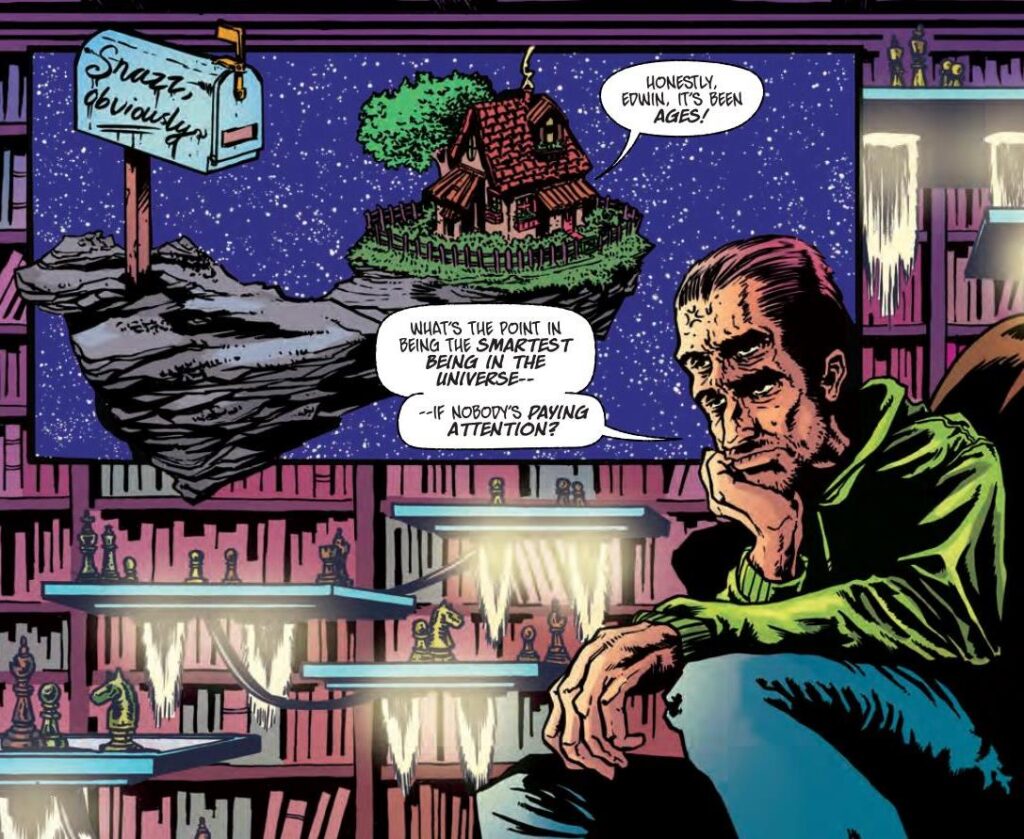
– the return of Abelard Snazz in Prog 2206 – Nov 2020
In some ways, it was perhaps something of a controversial choice of strips for you to debut with, as you and Paul brought back the classic Alan Moore and Steve Dillon character Abelard Snazz. He hadn’t appeared in too many tales over the years but was much-loved and fondly remembered.
When we talked before, with you and Paul Starkey talking about Renk (that particular interview is right here), we touched on this point about Abelard Snazz and you had this to say – ‘It was a HUGE thing for me, and I absolutely felt like a complete imposter taking on a job as big as that AND drawing an Alan Moore and Steve Dillon character made it even more pressurised, but I did my best with it. It was a definite learning curve!’
AR: Yes, Matt took a real gamble on having such an unknown and new artist tackle a beloved and old character.
How did you approach the character and the strip? Did you adapt your work or your process at all to complete the job?
AR: I had just received an A3 printer/scanner as a graduation present (I didn’t have access to the university’s equipment anymore) and it was the first time I digitally penciled a strip, printed out the blue lines, and then traditionally inked over the top. It made everything tighter, and I was more confident in my inking.
How was the whole 2000 AD experience for you? Obviously you’d had feedback on your work already, but there’s a bit difference between University feedback on a project and a tough editor who knows what they want – and Tharg is one of the toughest! Seriously though, how did you find the experience of having an editor here?
AR: Matt as editor is great and generally lets me do what I want with the script (apart from that time I accidently gave Renk two arms), so it was a very positive first experience working with an editor and doing professional paid work. I’m very grateful that I’m still getting work to do (haha).
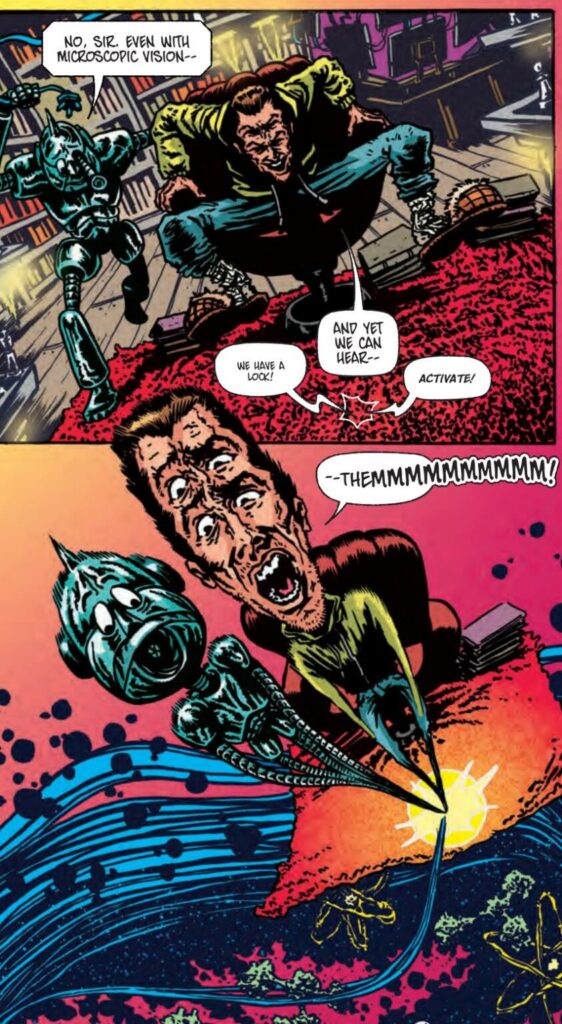
There’s a direct line to be drawn from your art and invention on Area 07 to what appeared on the page for Abelard Snazz. Both are full of complex comics storytelling and playing with the page and panels, exploring perspective and packed with details in the artwork.
What sort of feedback have you had from this 2000 AD debut?
AR: When I worked at OK Comics, it was great hearing from the hardcore 2000 AD regulars congratulating me on the strip and getting some positive reviews online. Reading about my work always weirds me out, but it nice it was positive. Also helps that my boyfriend and his Dad are huge 2000 AD junkies, so impressing the in-laws is always a win.
Dropping in another great comic shop mention – we’ll circle back round to OK Comics in Leeds a bit later if that’s okay. And as far as your boyfriend and his dad’s reading choices – Tharg definitely approves!

Following the debut in Regened with Abelard Snazz, it was four months before we next saw your art, in 2000 AD Prog 2225 (March 2021), this time working with John Tomlinson on one of his Terror Tales: Half Life, a disturbing thing about a man with half a brain and a violent streak he blames on his dead at birth identical twin.
I think it’s definitely your darkest and starkest work so far, a vicious thing, brutal ideas, brutal artwork. I imagine that’s exactly what you were going for?
AR: Yes, I love horror comics, especially the old EC stuff, and so I was really going for a bold, shock-factor look.
It’s also a short strip where your visual invention is constrained somewhat, again I imagine through necessity and tone, to give us a very traditionally laid out piece.
AR: The script was so tightly packed that there wasn’t a lot of movement for page layout creativity without comprising the plot, so in this case the more traditional layout served the story most.
Again, what were your experiences of this second strip? Any issues with the change of art for you here?
AR: I loved working on it! Really, really enjoyed doing the more horror noir style strip. Would love to do more.
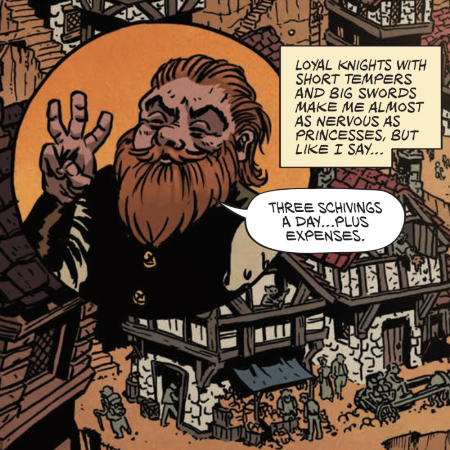
From 2000 AD Prog 2296, August 2022
Your third for 2000 AD was once more in Regened, Prog 2296 (August 2022), but vastly different from before with Abelard Snazz. This time, instead of working on an existing character, you and Paul Starkey developed Renk from scratch, a fantasy tale of a one-armed, cut-rate, dwarf private investigator for those who can’t afford the best wizards or mighty barbarian warriors.
It was over a year between the Terror Tale and Renk. Was this because you were pitching and getting rejected or because you were working on other things?
AR: I was working on other things and also working at OK Comics, but I was glad to get the Renk gig.
It’s a completely different project for you, the first time you’ve been involved with a collaboration that involves the sort of world-building for a strip that both yourself and Paul are obviously wanting to go further than simply a one-off short.
AR: It was all Paul, who did such a fantastic job of researching and writing such a vibrant world. All I had to do was to bring his words to life through my visuals.
Well, you say ‘all’ – it’s the bringing it all to life that makes it great comics rather than a great story and script!
This sort of off-kilter fantasy is, with its more traditional look, something you’d touched upon in Area 07 but also, as you’ve previously said, not something you were particularly familiar or interested in at that point. So I imagine the act of coming to it afresh and not being able to pull the sort of shortcuts out of the air that an artist who’s spent years in fantasy could do only made the whole thing a lot harder?
AR: Yes, I had to develop a new library of references, which was a fun task to do. Luckily my nerdy friends had big coffee table fantasy art books that I could borrow for inspiration.
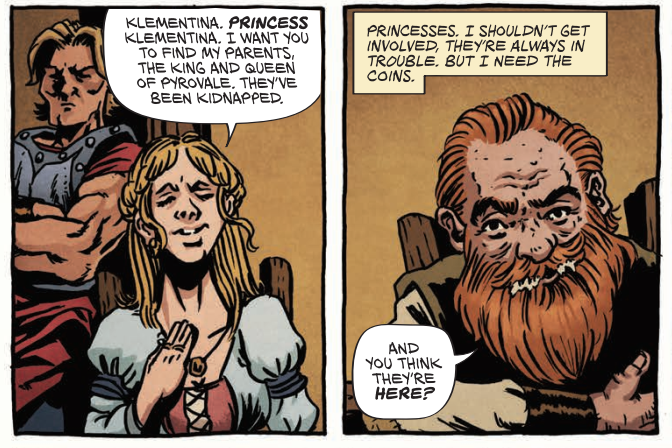
What sort of visual inspiration did you dip into for this one? You talked of both Jeff Smith’s Bone and Chris Samnee’s Jonna and the Unpossible Monsters when I interviewed you and Paul about it – and I can particularly see the Bone reference when I went back over it.
AR: I think what both Smith and Samnee do is use a cartooning and storytelling style based on the more traditional cartoonists like Carl Barks and Walt Kelly but keep it contemporary and engaging for young modern readers without infantilizing the art or the audience. It’s why everyone, young and old, loves their comics; they’re universally admired by all who reads them. With Renk I try to approach it the same way; make it appealing for both the older 2000 AD fans and the new generation of readers.
You talked of how you felt your art was more suited – or perhaps your artistic personality – to the world of fantasy than sci-fi when we talked of both Renk and Abelard Snazz. I have to say I disagree in terms of what I’ve seen of your work, but obviously that’s from my perspective. What did you mean by that?
AR: I’m just terrible at drawing spaceships!
Hah! What reaction did you get, from editors and/or fans, about Renk?
AR: People really liked it, and it was especially nice to hear from kids reading it as well at OK Comics. In fact, a dad and his kid liked it so much they bought all the original artwork from me, which was nice to say the least!
Now that is absolutely lovely – both the feedback from kids and the sale of the art to one very happy father/kid reading team!
Have you and Paul plans for a second Renk story? Or perhaps a Renk series?
AR: Yes! And I’ve just finished inking it…
Fabulous – we’ll look forward to seeing it! In fact, a missive from Tharg – Renk episode 2 is slated to appear in 2000 AD Regened Prog 2346 – on sale 23 August!
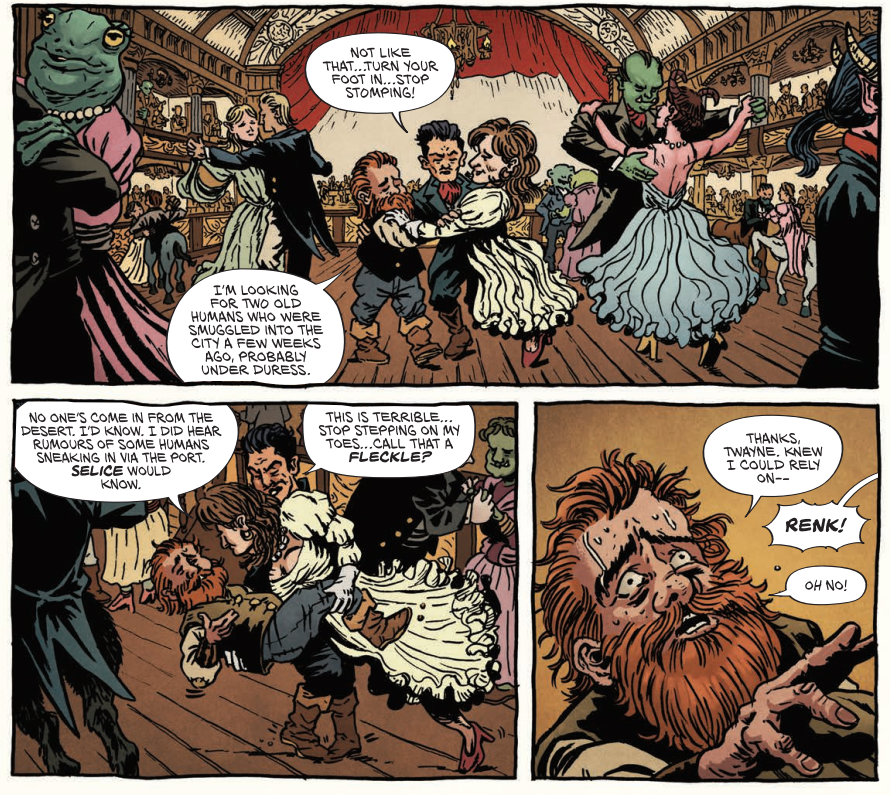
– from Renk by Readman and Starkey, 2000 AD Prog 2296, August 2022
That last question about another Renk story leads me nicely into the whole idea of pitching for work.
Have you been continually pitching ideas over the last few years – one of those artists/creators who find it relatively easy to come up with concepts? Or is it the other way with you – someone who has to really work up a concept/idea into something they feel ready to pitch and each project takes an incredible amount of time and work?
Or have you found that once you get that foot in the door, things become that little bit easier and it’s a case of past work and talent means you’ll get at least a better chance of getting a pitch to the next stage?
AR: I’ve actually never pitched to any publisher, let alone 2000 AD.
I’ll pause here a moment to let other creators take a deep breath and scream long and loud over that little revelation. Don’t hate her too much folks!
AR: If I have an idea for a story, then I draw and publish it myself. I’m a bit more DIY in that sense. However, there are limits to what you can achieve and financially sustain doing small press, so pitching is something that I want to do in the future (when a good idea comes…)
In between the second and third 2000 AD strips, you completed the Only Takes a Stranger strip (written by Alex Paknadei) for the 2021 Z2 Comics project, Graham Coxon’s Superstate.
What can you tell us about that one? How did it come about etc?
AR: I just got an email out of the blue from Z2 about the comic, and it sounded like a good gig. It went ok, but due to lateness with payments and weird printing dates, I don’t remember the project too fondly.
Oh, that’s terrible to hear. Late-paying publishers are never a good thing.
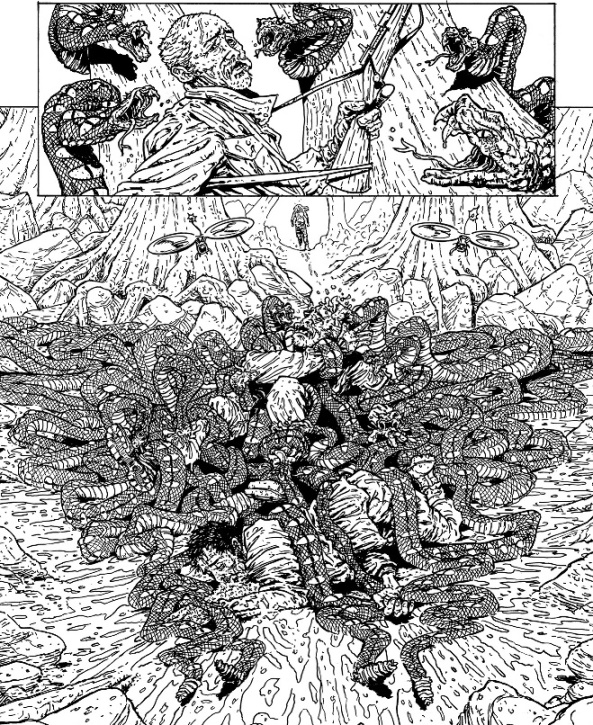
– for the 2021 Z2 Comics project, Graham Coxon’s Superstate.
There’s also been Handlebar Gumbo, a collection of daily diary comics that you originally put out over Instagram and collected in 2021, a wonderfully free-flowing b&w thing covering art, work, cycling (and trying not to get killed cycling around Leeds), making comics, parents, and all the minutiae of daily life.
Have you done daily strips before this or was this your first attempt – and if so, what on earth made you figure that now was the time to get into the obviously pressurised grind of putting comics out daily?
AR: I’ve always loved reading autobio comics, like from Gabrielle Bell, Noah Van Sciver and Gabby Schulz, and enjoyed it when other people did the challenge of doing a daily comic, so I thought why not? I just wanted to see if I could actually force myself to create a comic every day, however bad, even after a hectic day of work. It was really fun and very challenging. Maybe I’ll do it again, but only if there is something in my life that warrants me documenting it.
It’s certainly a completely different style for your art, with a looser and lighter look. Has the daily comics experience fed into your comics-making process going forwards, made things simpler and quicker?
AR: No, I’m too detail-orientated and a perfectionist to work that loose and quick on my ‘proper’ comics. I can barely look at Handlebar Gumbo without cringing at the art.
Ah, the artist hating their own work – a common thread when we talk to them. But anyone who looks at Handlebar Gumbo should tell you how good it is!
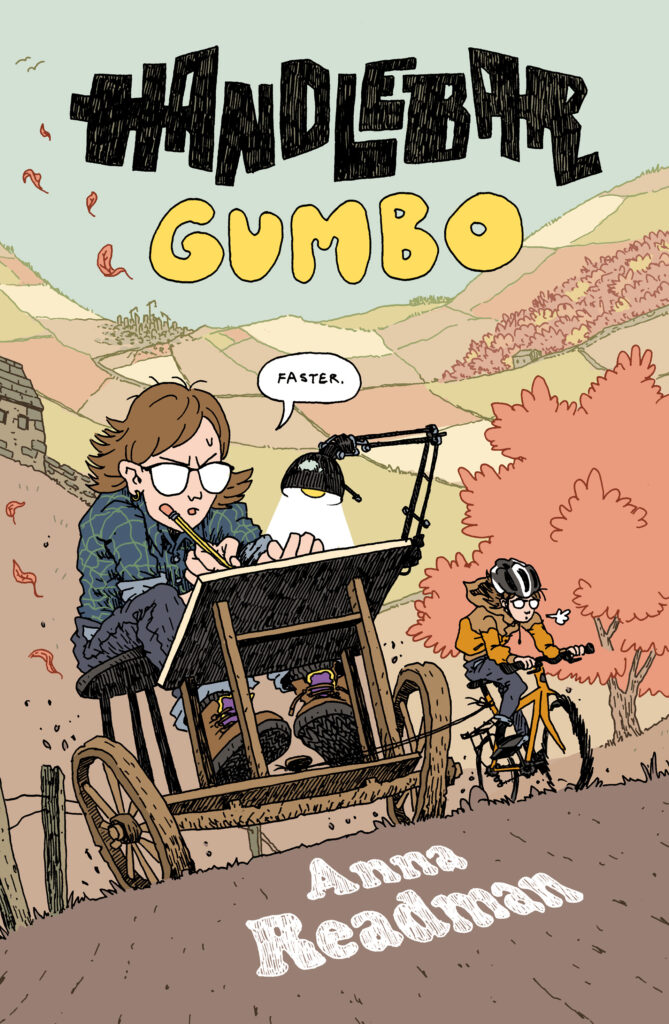
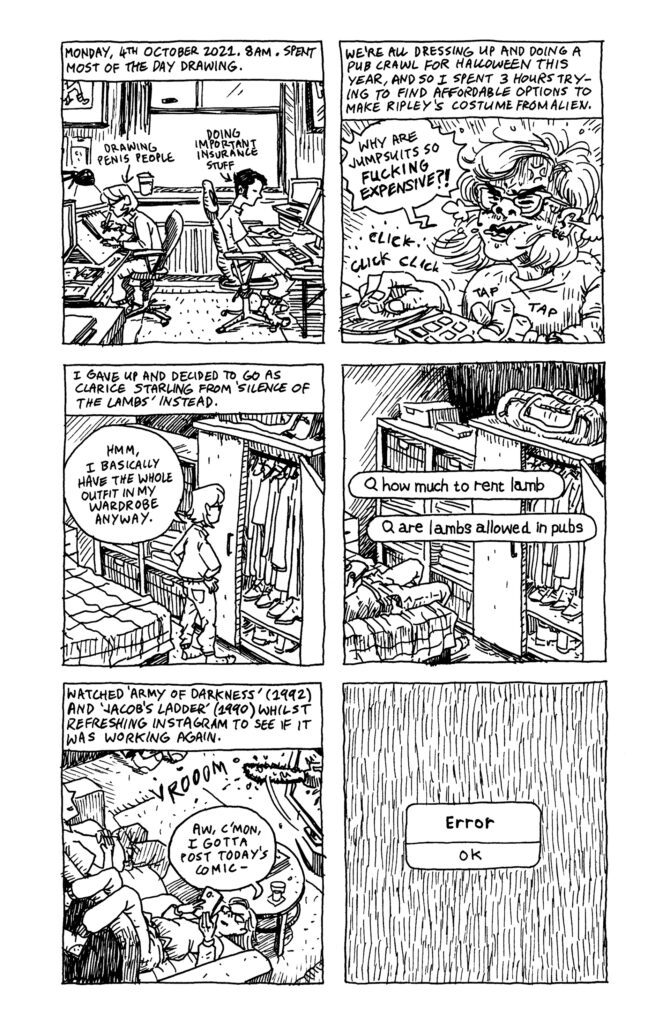
.
Now, even with that cringing at your artwork, you did return to autobio comics this year with the collection of your Hourly Comics Day strips in February 2023. You joined the many, many (slightly crazy perhaps) artists drawing a comic every hour to document the day. How was that experience?
AR: I participated in Hourly Comic Book Day for the first time this year and it was good fun, though a bit stressful, and I can see how circular and redundant the strips can get when your comics just end up about you drawing the comics, but it was a cool challenge nonetheless. I made a tiny mini out of it called Noodle Wranglin’ that people seem to like (probably because it’s cheap as chips.)
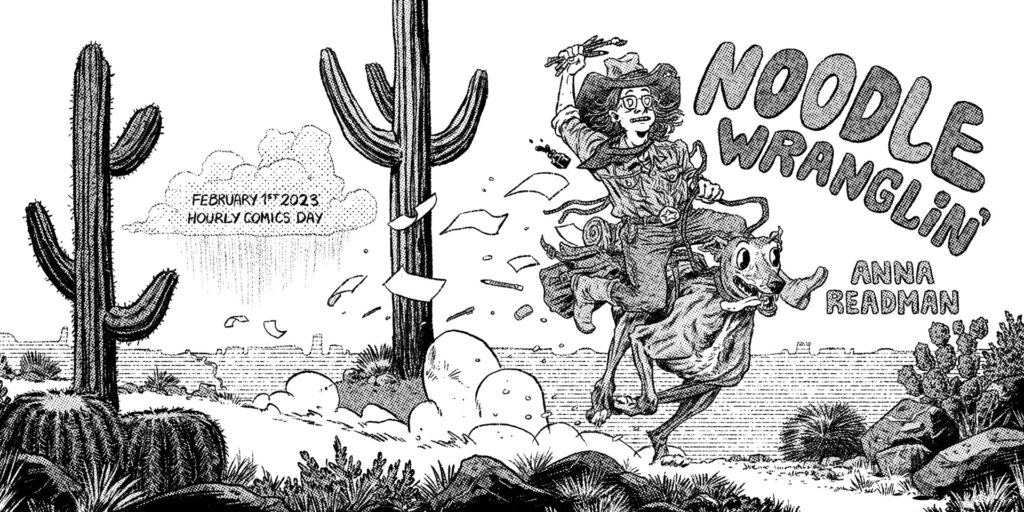
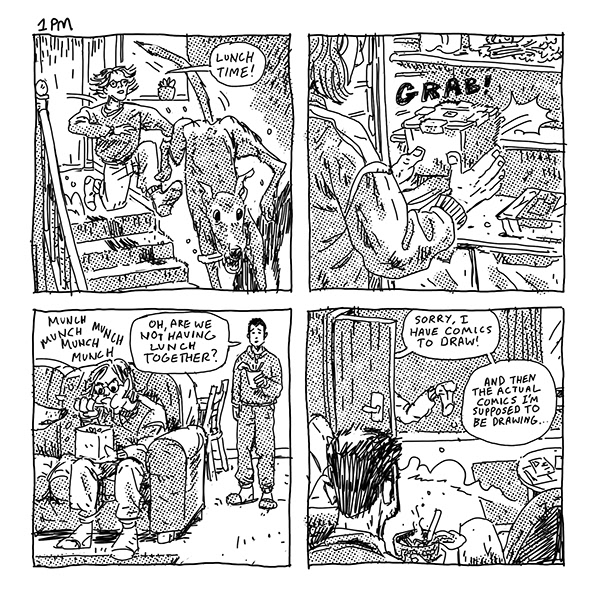
In this round-up of your work though, I wanted to end with Peach Fuzz, a new anthology series self-published in November 2022 and containing three different strips alongside some shorts. It seems to me to be the work that’s most indicative of where you are right now creatively.
Again, it’s you moving into different themes and ideas – what can you tell us about Peach Fuzz and what were you attempting with it?
AR: I was introduced to Daniel Clowes in my first year of university by one of my tutors and became completely and utterly obsessed with that era of alternative comics (even doing my dissertation on them). One-person anthologies like Eightball, Love & Rockets, Dirty Plotte, Optic Nerve and Acme Novelty Library have especially piqued my interest and to me are the perfect medium of showing the best of a cartoonists’ hand. So, doing one of my own has always been a goal of mine.
Well, Love & Rockets technically is Jaime and Gilbert Hernandez, but Anna’s point is sound – although it does make you feel old when someone does their dissertation on comics you can remember coming out in your teens and 20s!
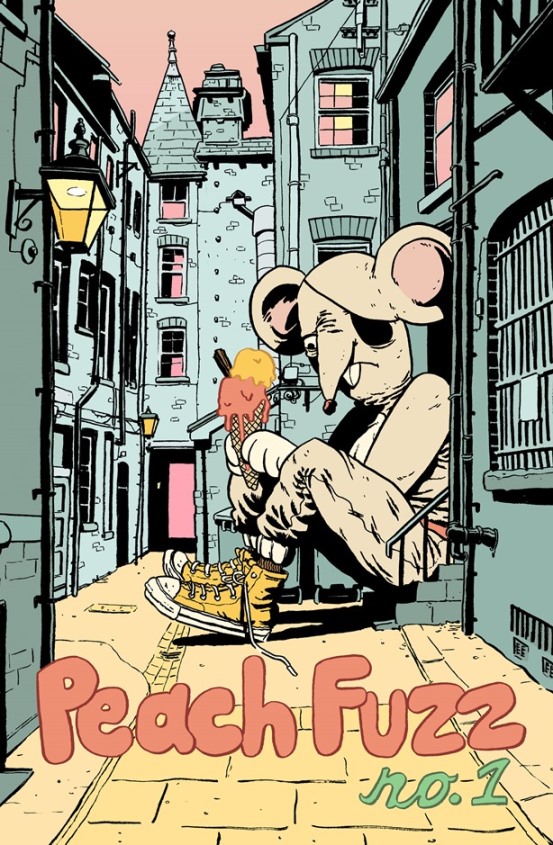
Peach Fuzz is a comic that features the mundane and the everyday, even when it’s featuring a young man who happens to dress up in a homemade Danger Mouse costume in the lead-off strip Spring Awakening. You also bring your other job into it with the second strip, Plumber, a perfect description of an older guy habitually checking out the back issues at the comic shop. OK Comics is nothing like the comic shop you perfectly detail her, one that evokes memories for those of us old enough to have grown up around these dingy little places. So where did you draw inspiration for this one?
AR: I’ve been to a few dingy shops, but you’re right, those comic shops that have survived the hard winters are the ones who not only pay attention to the items they stock, but to the interior design, accessibility, and cleanliness of the shop as well (big up OK!) I think I just amalgamated all the gross shops I’ve seen in old photos and documentaries into a fictitious place to set the story in.
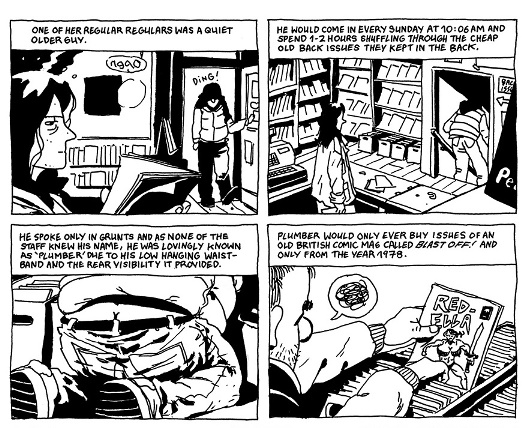
found in Redman’s Peach Fuzz #1 anthology – November 2022
The final strip in Peach Fuzz sees you veer hard into sci-fi again, or at least speculative fiction at its best, with That’s The Way painting a perfect picture of an alt-world where the health service includes body part harvesting done in the same way that we do jury service.
AR: That story has been described to me as ‘Kafka-esque’. I’ve never read Kafka, but they sound important, so I’ll take it.
Definitely take it!
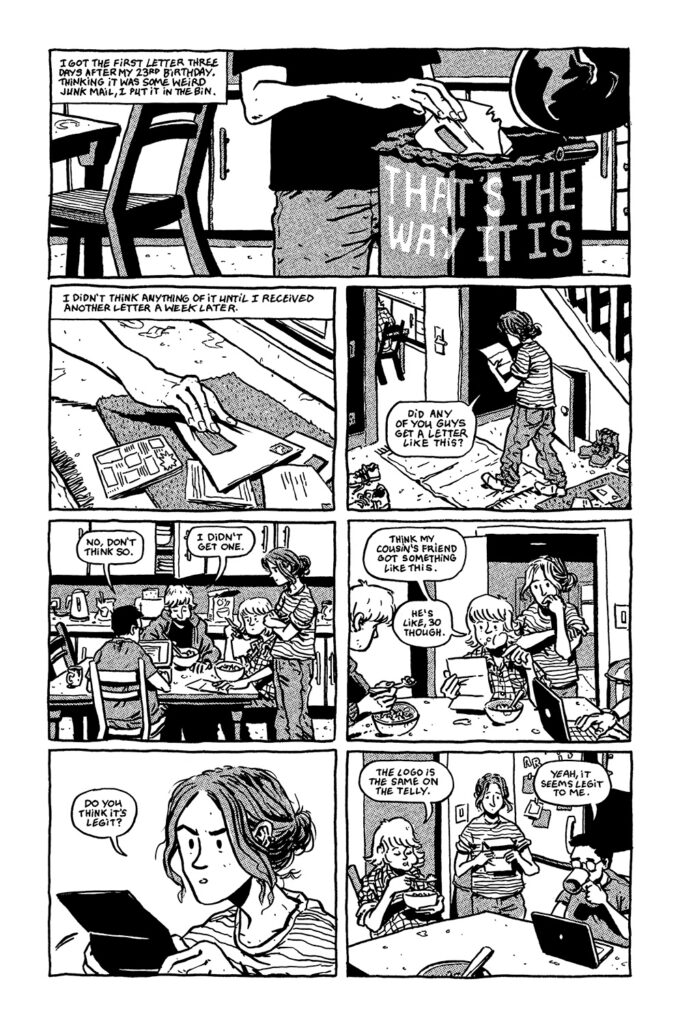
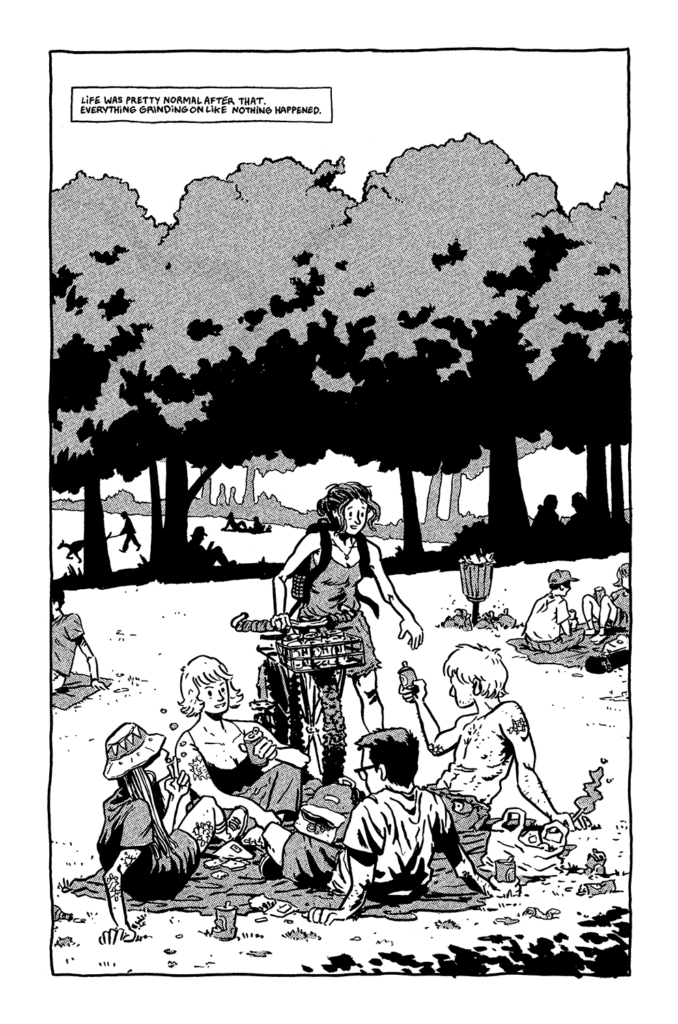
.
I wanted to talk Peach Fuzz last because I think that you’ve brought together, like I said, three strips that encapsulate where you are right now, somewhat at a crossroads, so much potential ahead of you, the choices so many that the only way to approach them is to embrace a little from each. Was that the thinking here, to take all the disparate things that interested you and put out an anthology?
AR: It was never intentional, but yes, I suppose Peach Fuzz #1 does represent where I am right now. I’m still learning about who I am and what stories I want to tell, so a variety of interests and themes are bound to appear in my comics.
Do you see yourself continuing with Peach Fuzz as an outlet for yourself and your own work in the future, that necessary outlet?
AR: I have so many ideas for little comics and strips that putting it all under one umbrella title is the most sensible thing I can do with them. Making short stories is the best way for me to experiment with style and playfulness of my own visual language, as well as improving and refining my writing skill. Peach Fuzz is something that I want to continue for as long as possible, or as long as I need it to exist.

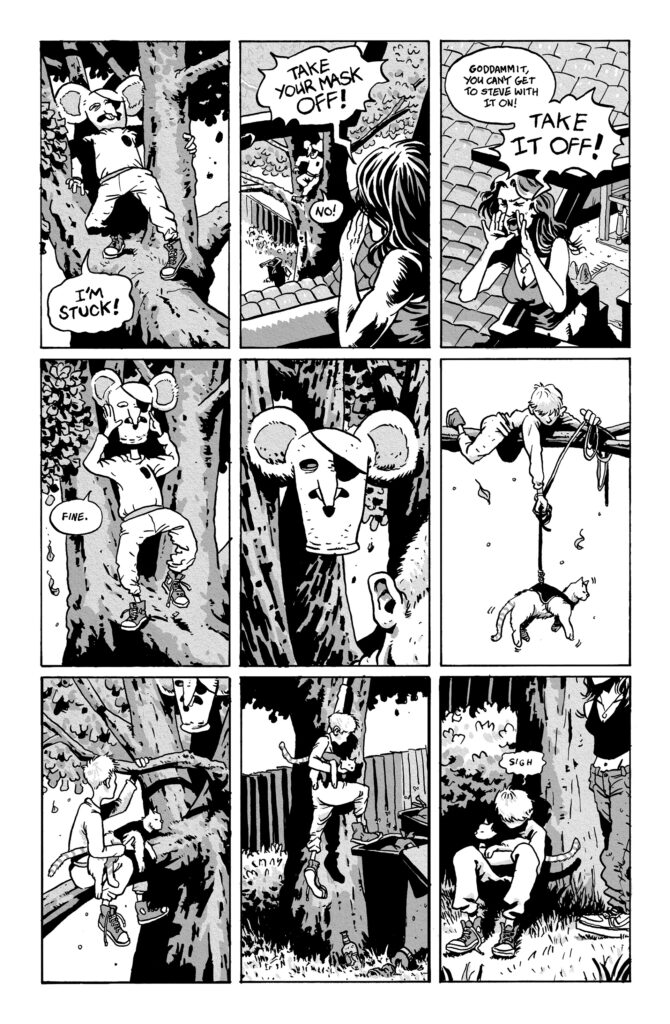
.
You’re an artist who’s really just starting out, but you’ve already got an impressive body of work to your name. But like so many other young (and not so young) artists, you’re having to divide your time between professional gigs such as the 2000 AD and Z2 work, the self-publishing work, and the online material, commercial illustration, and commissions.
I suppose the time you’ve already spent at University, juggling study and projects, has helped you in being able to balance the demands of life as a professional artist?
AR: I think Uni tried to, but the reality of freelance is so much more chaotic and unpredictable that nothing can really prepare you for it.
Do you have a grand plan at this stage for moving forward or is it simply a case of fitting the work in when you can and when it appears?
AR: Yep, really, I’m just winging it at this point. I have long-term goals and big projects I’d like to do, but for now, I’m just seeing what comes my way.
And on that front, where do you see yourself working in future? – would you be happy moving into more and more work for publishers, whether that’s working as an artist on someone else’s script or as writer/artist/creator. Or do you think you’re always going to be using the self-published and made-for-yourself works to allow yourself a complete creative outlet?
AR: I’d eventually like to move away from work-for-hire gigs and be able to have a reliable income from my own work, whether that is still small press, or ideally having creator-owned books published. However, for the time being, I’m happy to do any work that’ll pay the bills.
On that difficult subject of making a living in comics, did you see the recent research by one of our previous comics laureates, Hannah Berry, about the realities of making comics here in the UK?
How are you feeling about the realities of what you’re doing? Do you feel confident in the medium’s ability to support yourself financially or do you see it forever being a vocation that comes with a necessity to expand into work that’s invariably better paid, such as commercial illustration, or to supplement your income through outside/side gigs?
AR: I mean, I’m barely paying the bills now, and with a few big projects that I had lined up for this year being slated, I’m not super optimistic for the future. I’m just winging it and hopefully, things will go ok, but I know that realistically I might have to go back and get a day job again. Commercial illustration is something I don’t mind doing, but I don’t have any connections to the industry so that might be a hard one to properly get into.
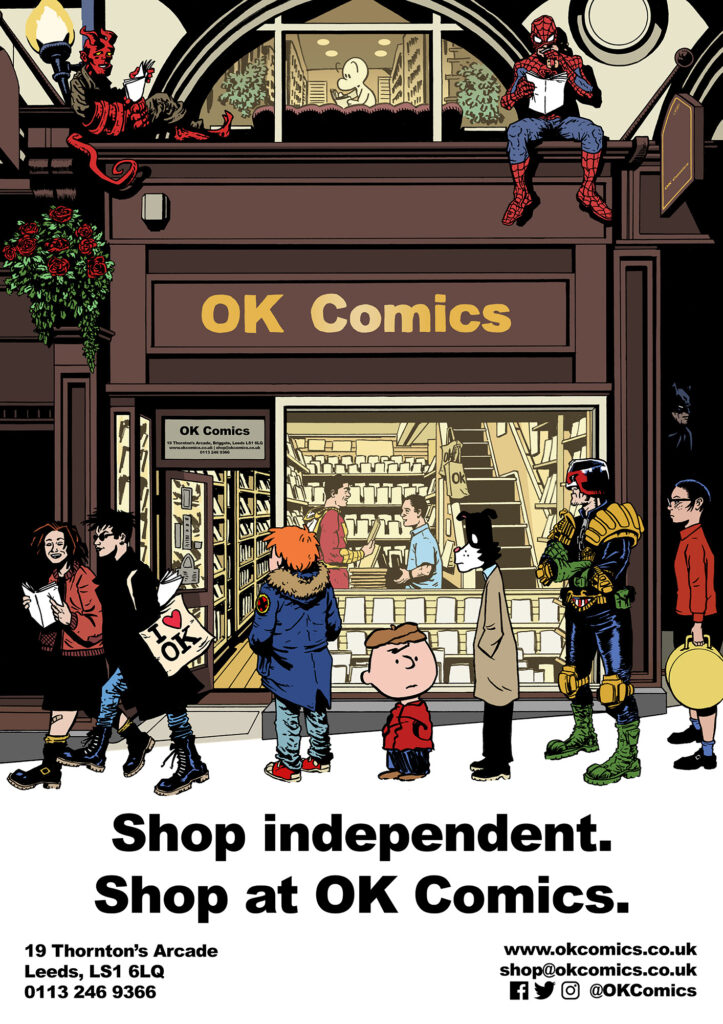
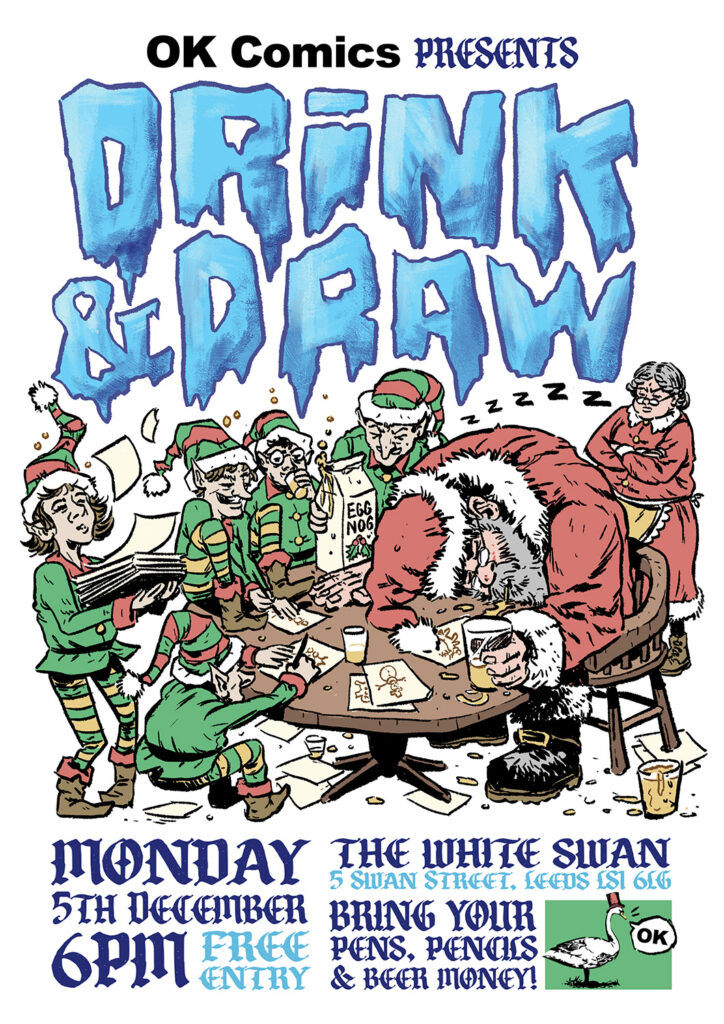
.
Of course, like a lot of our artists, particularly the younger ones, you were also, until very recently, working a second job – at OK Comics in Leeds (another one of the UK’s finest comic shops!), for whom you’ve become owner Jared’s in-house go-to artist for promotional work – something that’s turned a great comic shop into a great comic shop with some beautiful looking ads and windows!
How’s it going at OK? Did you enjoy life as a comic shop grunt, something so many artists and those involved in comics in whatever way have done in the past [I did many, many years myself at Nostalgia & Comics Birmingham in the 80 and 90s]
AR: I actually left OK to work freelance full-time at the end of November 2022, but I still go in weekly for comics and a catch-up. We recently celebrated 20 years of the shop, and it was a fantastic week of beer, merch and a raging party at the end. The folks at OK are the best, and some of my closest friends.
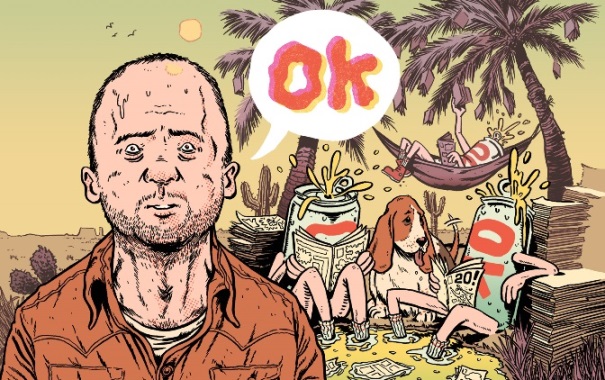
– referencing ‘the secret origins of OK Comics’ name (remember OK Soda?) as well as featuring the main man and shop owner, Jared, and his legendary basset hound, Judy.’
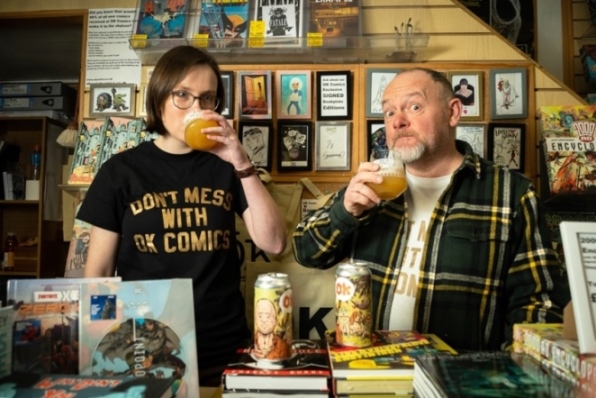
We’ve already mentioned the early championing of your work by Andy Oliver at Broken Frontier when he made you one of his ‘Six to Watch’ artists for 2019. And anyone reading this who’s truly interested in new and emerging works from the UK and further afield should already be a regular at the Broken Frontier site. What did that early championing of your work mean to you?
AR: Without that early championing of my work, I would not be where I am today. I’m not great at putting myself out there, and so BF really brought a lot attention to my work that has led to nearly everything I’m doing now. I will be forever grateful.
Has your work at 2000 AD brought you more exposure over the last couple of years?
AR: Definitely, and it’s also given me a lot of legitimacy and pride to say that I’ve produced work for such a well known and loved magazine.
How have you found the bigger comics world has responded to you? Heavens knows there’s far too many media outlets that ignore 90%+ of all comics in favour of the US superhero comics. And there’s also a thankfully small but far too vocal group of fans who seem to really not like comics all that much – or at least not any comics that aren’t exactly like what they used to read or speak exactly to them and their mates.
AR: The bigger comics world hasn’t really got to me yet, which I’m perfectly ok with.
What do you think it is about comics that makes it such a unique medium and one that you’ve selected as your chosen means of expressing yourself in art?
AR: Comics give you that rare opportunity to create a visually and narratively compelling world through just one author, enabling their voice to be heard and shown in their own unique storytelling and aesthetic identity. There is no other medium like it, or one I’m as interested in being a part of.
Before we finish, let’s talk a little about influences and your process…
AR: When I first started reading comics, I was into artists like Jim Lee and Bryan Hitch, which then developed to more nuanced creators like Brubaker & Phillips, who I still love to this day. At Uni I really got into the alternative cartoonists like Dan Clowes and Chris Ware, as well as the underground pioneers like Crumb and Pekar, who have all been a mainstay in my library. Nowadays I just love finding a unique voice, whether it’s the punk aesthetics of Julie Doucet or the sharp noir lines of Jose Munoz. The creators that stand out to me most are the ones with their own distinct identity, shown through their own hand telling their own stories.
One thing we always like to see here at 2000 AD.com is how the art gets put together. So can you walk us through your process here? Do you work traditionally or digitally, what tools do you use?
AR: I pencil digitally on an old Cintiq 13HD using either Photoshop or Clip Studio Paint and then print out the blue lines on A3 Bristol board and ink traditionally. If I’m drawing my own comics, then I’ll traditionally letter too using an Ames guide.
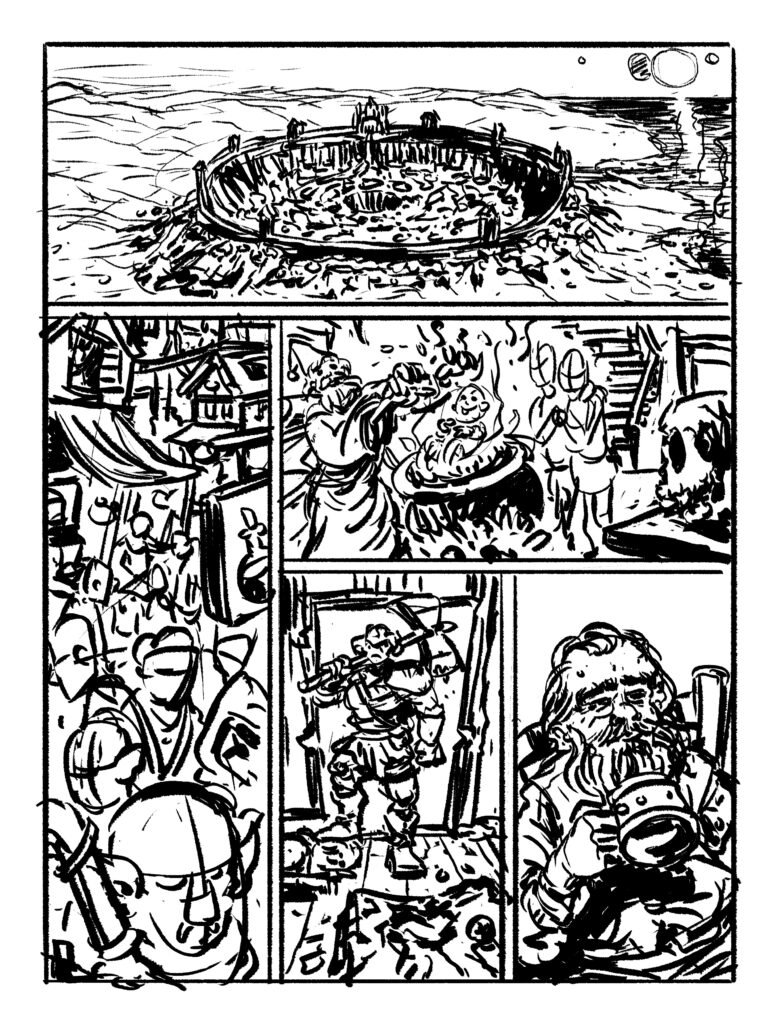
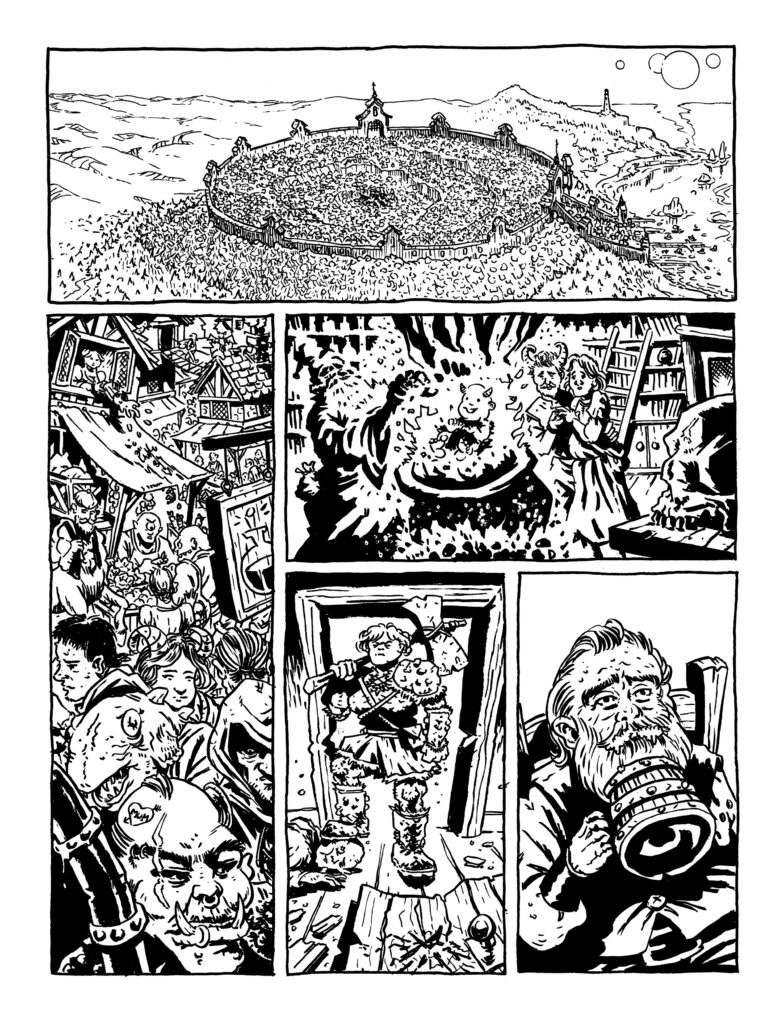
.
Having already seen the rough pencils and finished inks for your Renk strip, it’s obvious that you’re an artist who puts a lot down onto the page from the very earliest stage. From talking to a lot of artists over the years, I know it’s something that frustrates many that they can’t just simply strip it all back to the very basics and get the idea down with minimal work.
AR: It’s Alex Toth who said it best: “Strip it all down to essentials and draw the hell out of what’s left.” It’s something that sounds easy but is so, so difficult to do, and something I continually remind myself to implement.
No one should be arguing with a genius like Alex Toth!
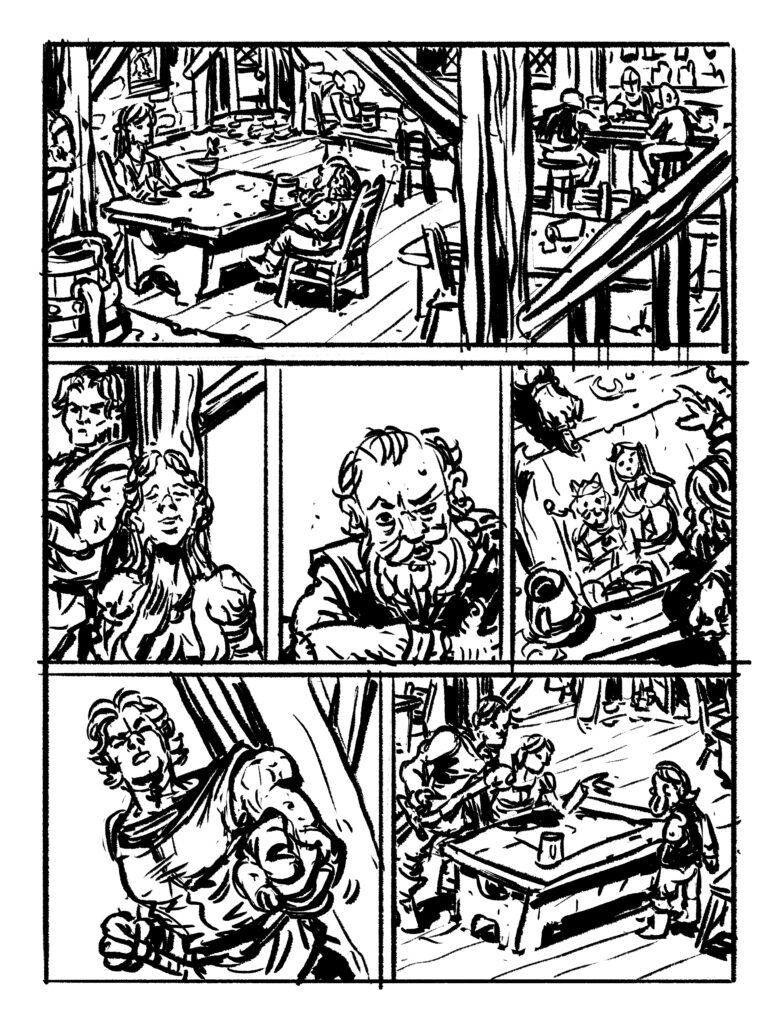

.
So far we’ve seen you work both in B&W and in colour. Are you an artist who’s confident in their colours or, like so many of you poor insecure artists, are you one who struggles with colour the most?
AR: I really am not very confident in using colour. It’s something I’m constantly working at, but B&W art will always be my strong suit.
And finally, we always like to end with a quick look at whatever you have coming out, either in the coming months or planned in the far-flung future. What sort of comics can we expect from you in the next year(s)?
AR: I had some big comics lined up this year, but due to some complications and bull**** that naturally comes with the comics industry, those have dissolved so who knows what is next… but, we do have the second Renk story coming up with 2000 AD, some smaller bits and bobs working with some new writers, and then maybe a Beatles Zombie mini comic and then of course Peach Fuzz #2 will be out for Thought Bubble 2023. Lots of my mates got in this year as well so it’ll be a swell hootenanny of a time hopefully. Good things ahead, hopefully.
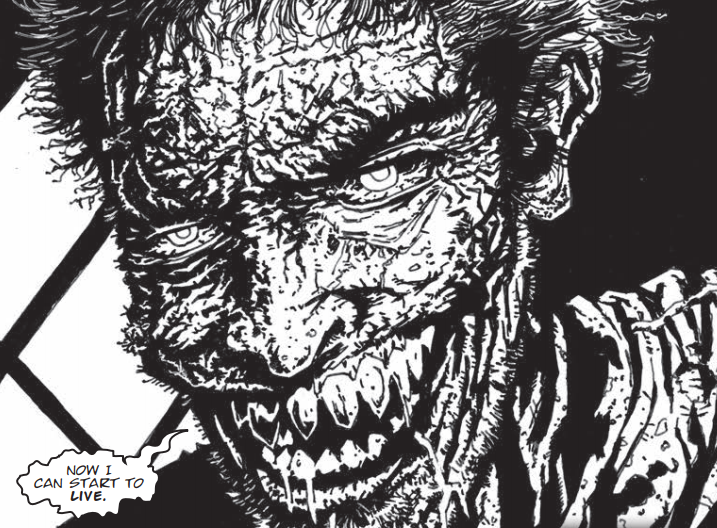
And we shall leave it there dear reader – that’s PLENTY to be getting on with. Thank you so much to Anna for taking the time – and it was a lot of time – to talk to us. She’s definitely one of the art stars we’ll be seeing a lot more of over many, many years, whether that’s here in 2000 AD or further afield.
As we already told you, you certainly don’t have to wait all that long to see Anna’s art in the Prog, as the second installment of her and Paul Starkey’s Renk will be coming your way in 2000 AD Regened Prog 2346 – on sale 23 August!
We’ve got two interviews featuring Anna, or her art – there’s this interview with Cornell about Abelard Snazz and Anna’s art, and this interview with Anna and Paul Starkey about Renk. You can find out more from Anna and her comics at her website, Twitter, and Instagram. And of course, you must go and buy her comics from her shop. You really won’t be disappointed.
ANNA READMAN BIBLIOGRAPHY
Cormac McCarthy project – University project, 2019.
Area 7 – University project, self-published, March 2019.
2000 AD 2206 – Abelard Snazz: The Only Way is Up, Nov 2020 – Written by Paul Cornell.
2000 AD 2316 – Terror Tales: Half Life, March 2021 – Written by John Tomlinson.
Only Takes a Stranger, Graham Coxon’s Superstate, 2021 – Written by Alex Paknadei, Z2 Comics.
Handlebar Gumbo – Collection of daily diary comics, Oct 2021 – self-published, available here.
2000 AD 2296 – Renk, Aug 2022 – Written by Paul Starkey.
Peach Fuzz #1 – anthology, Nov 2022 – self-published, available here.
Noodle Wranglin’ – collection of hourly comic book day strips, Feb 2023, available here.
Peach Fuzz #2 – anthology, due Nov 2023 – self-published.
